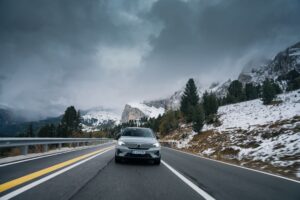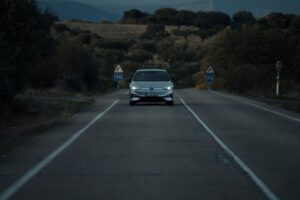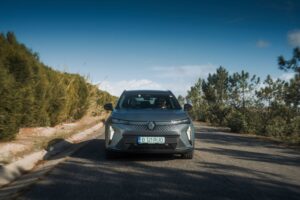After a day’s rest in the Dolomites, where we literally and figuratively recharged our batteries, we woke up ready for a new stage on the road to Portugal, the westernmost point of the European continent.
We set off for France via the Tonale Pass, which a century ago hosted battles between Italy and the Habsburg Empire in the First World War. The Tonale Pass greeted us with clear skies and positive temperatures that allowed the photographers to capture new collector’s images, even if the overall scenery from the 1,883-meter summit was not as visually spectacular as that offered by Passo Sella.
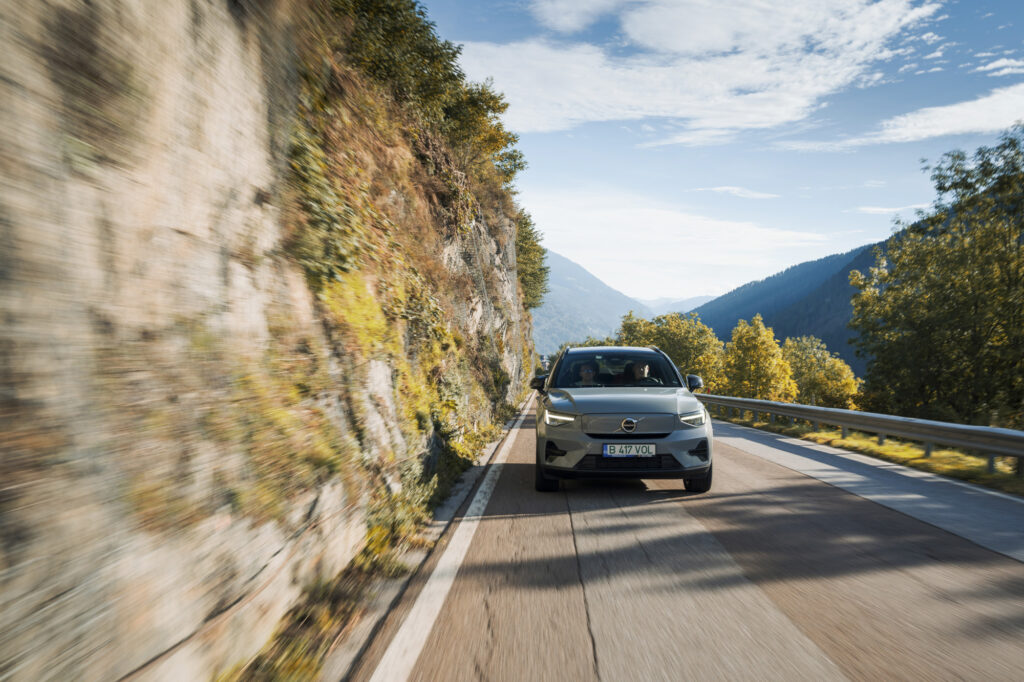
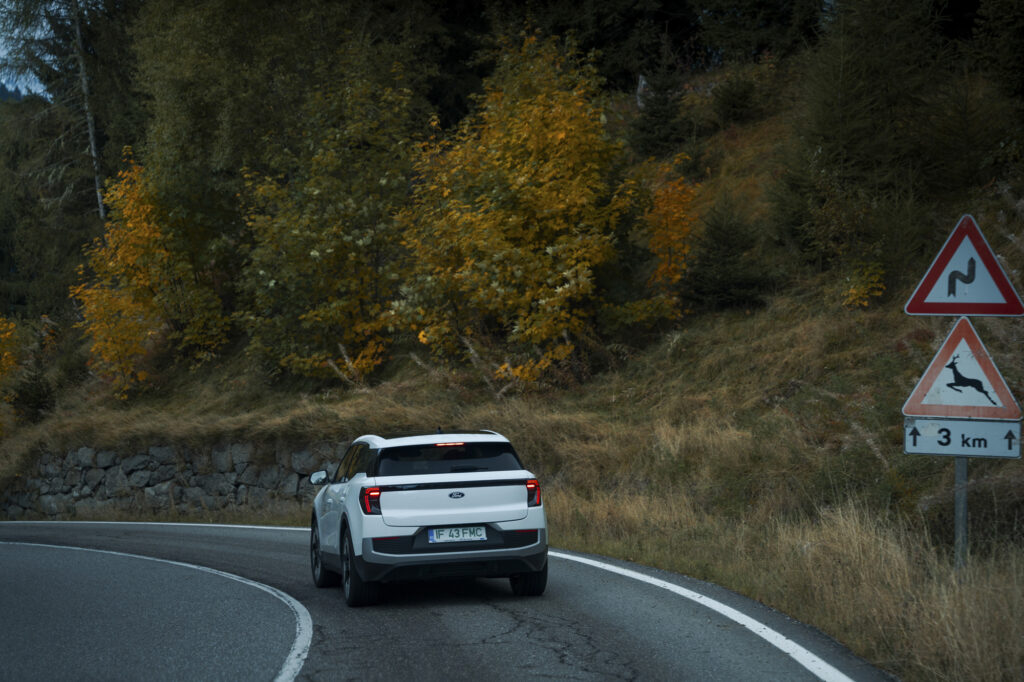
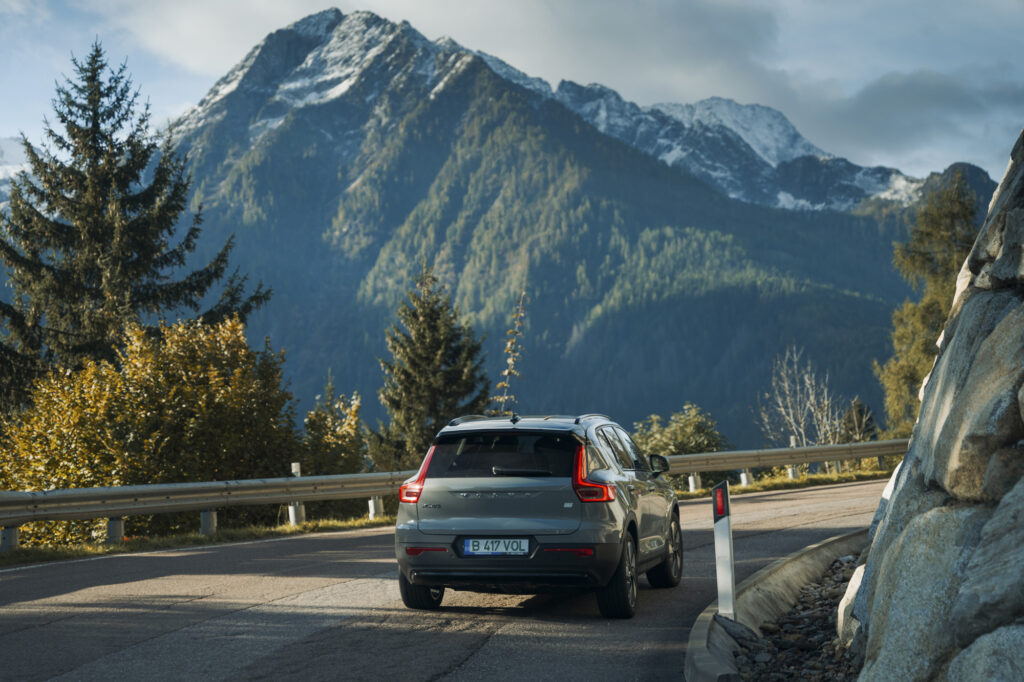
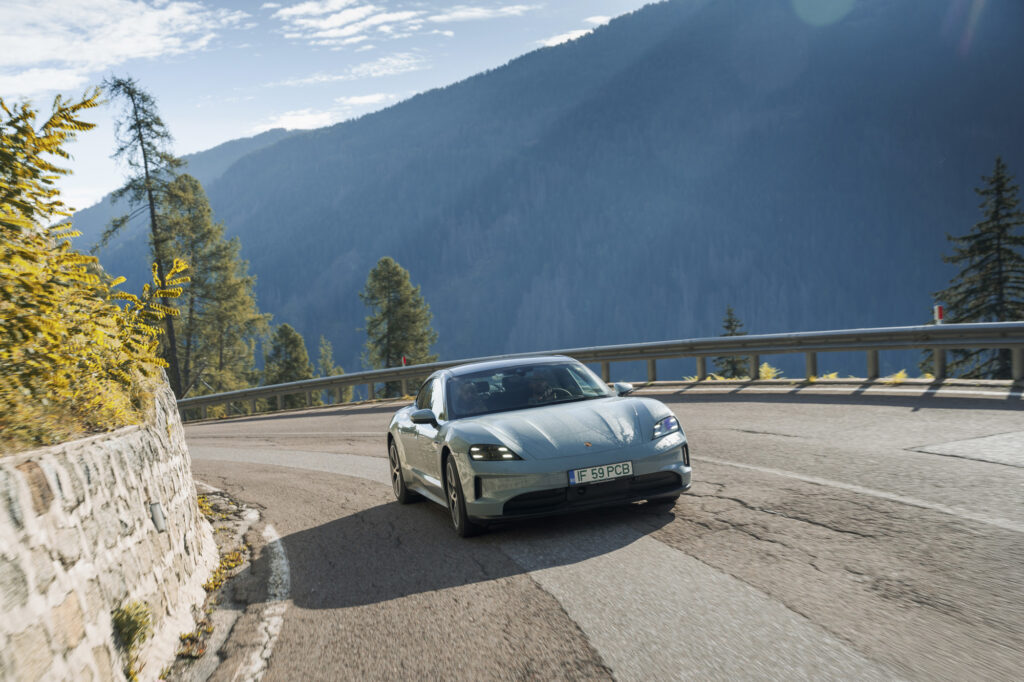
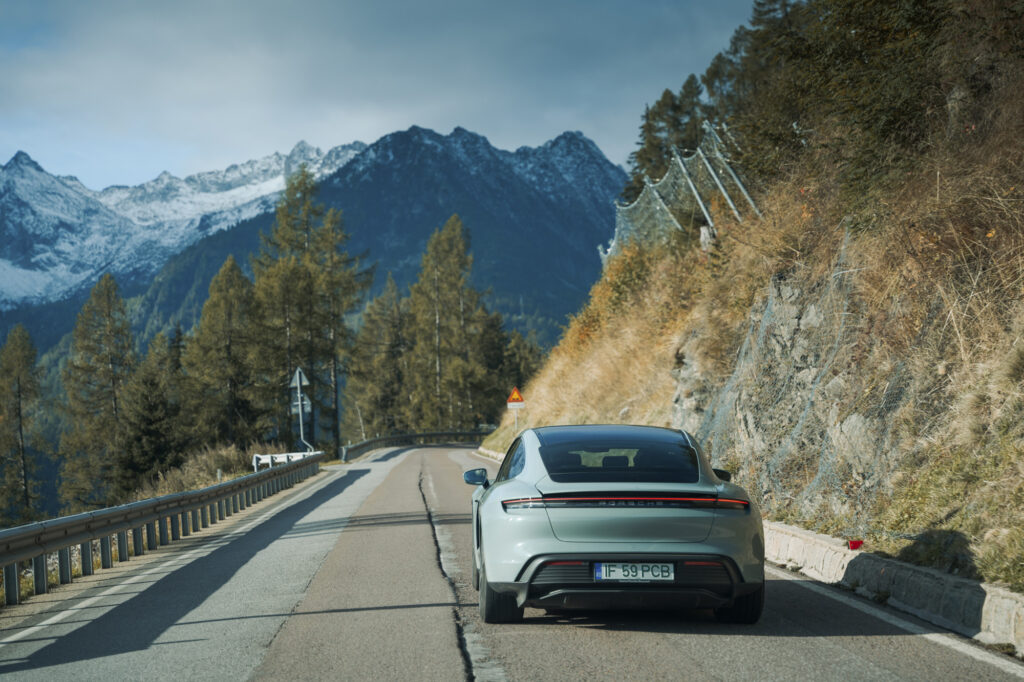
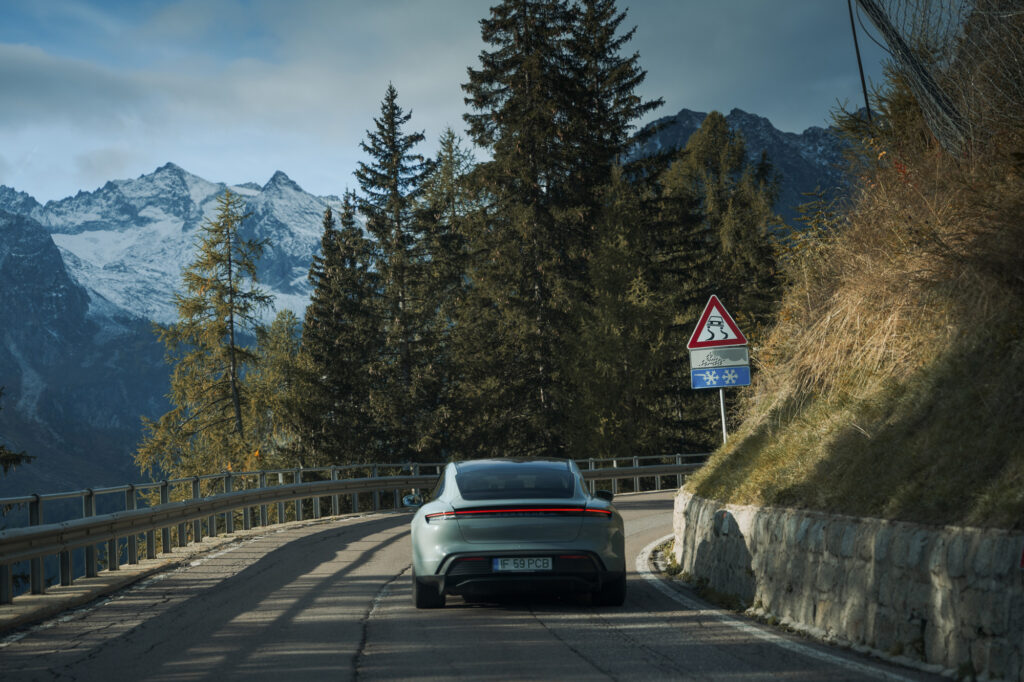
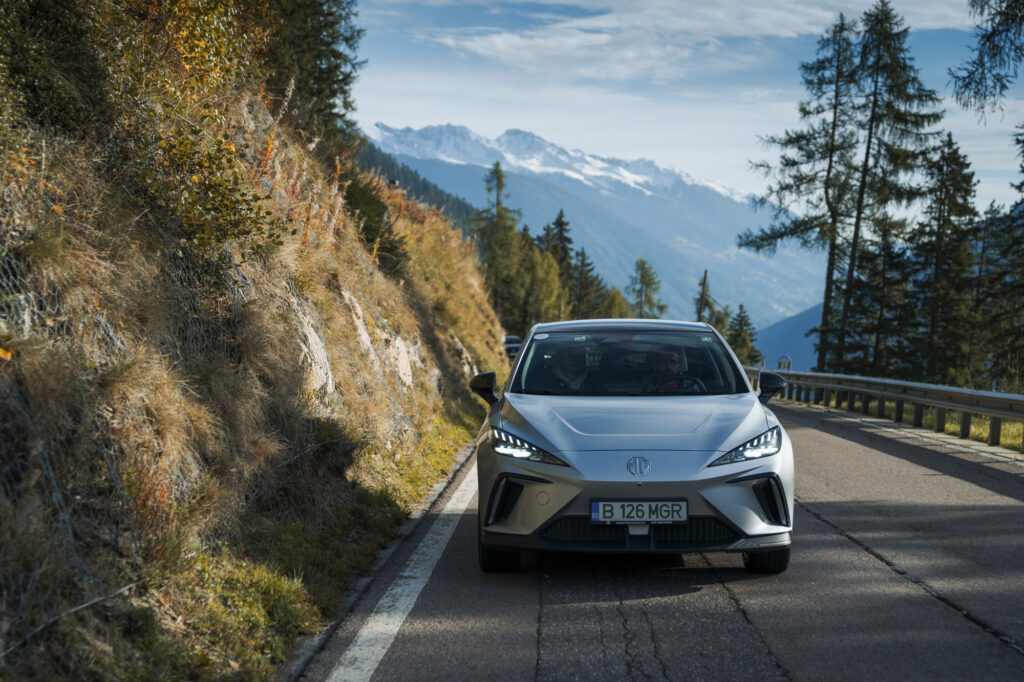
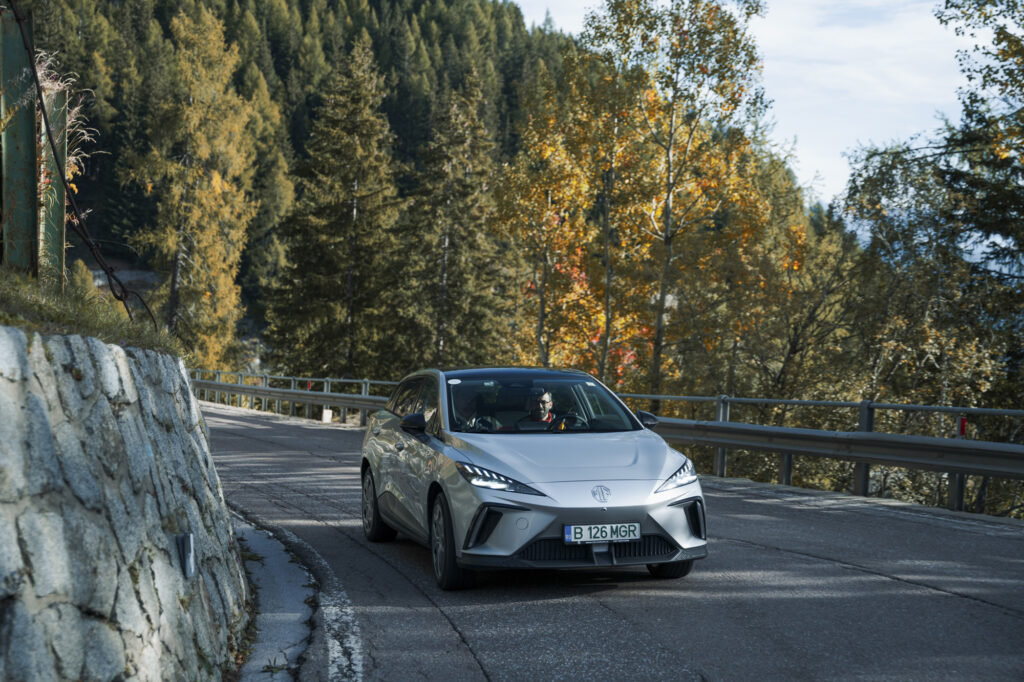
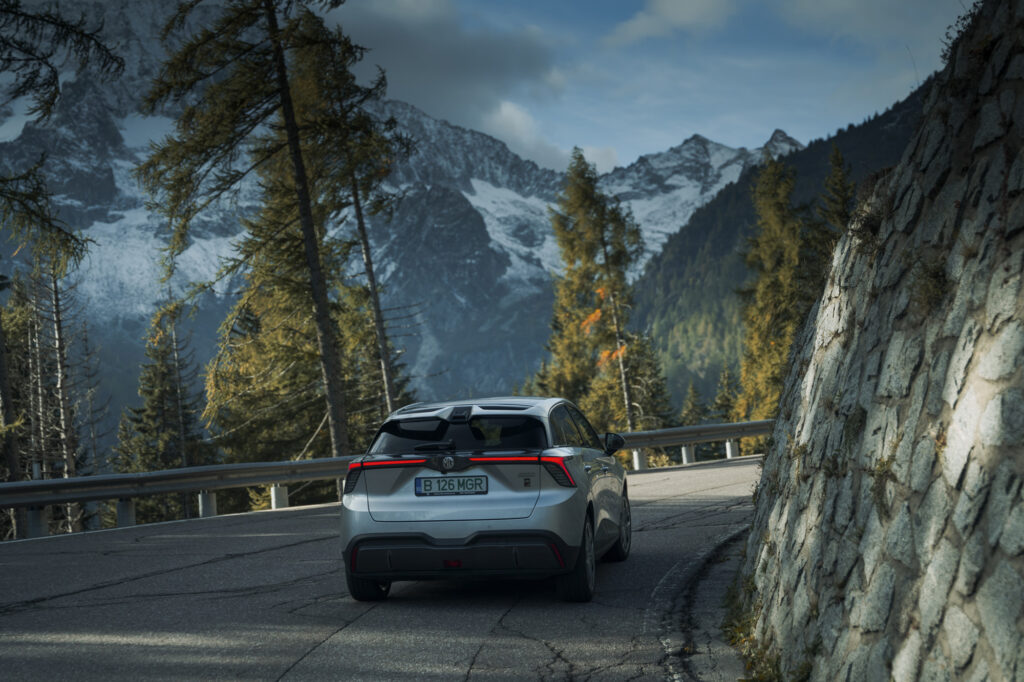
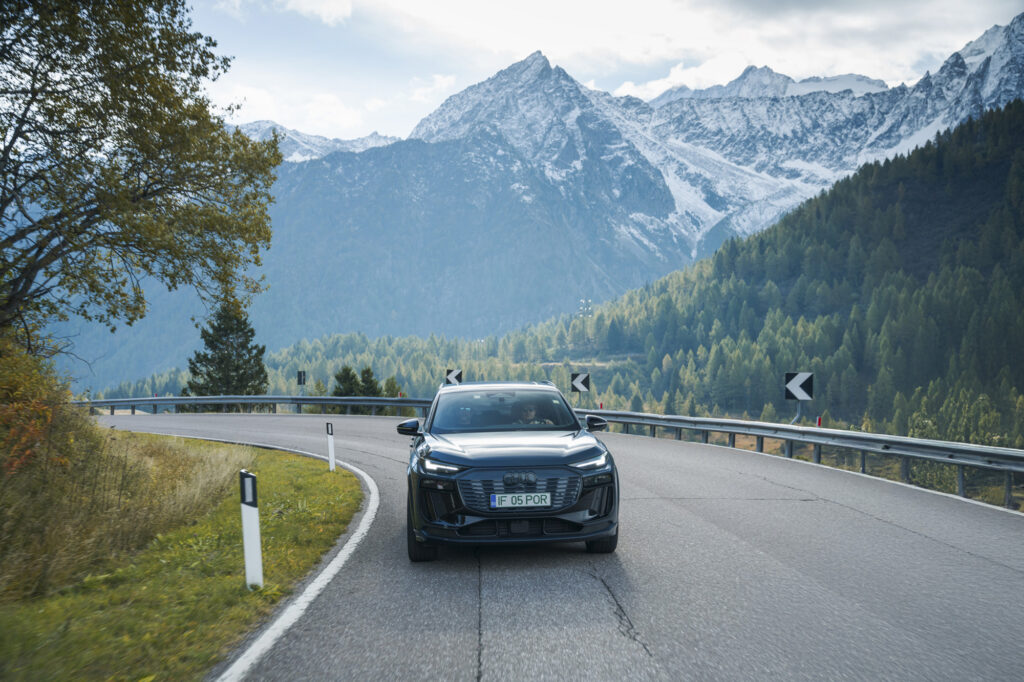
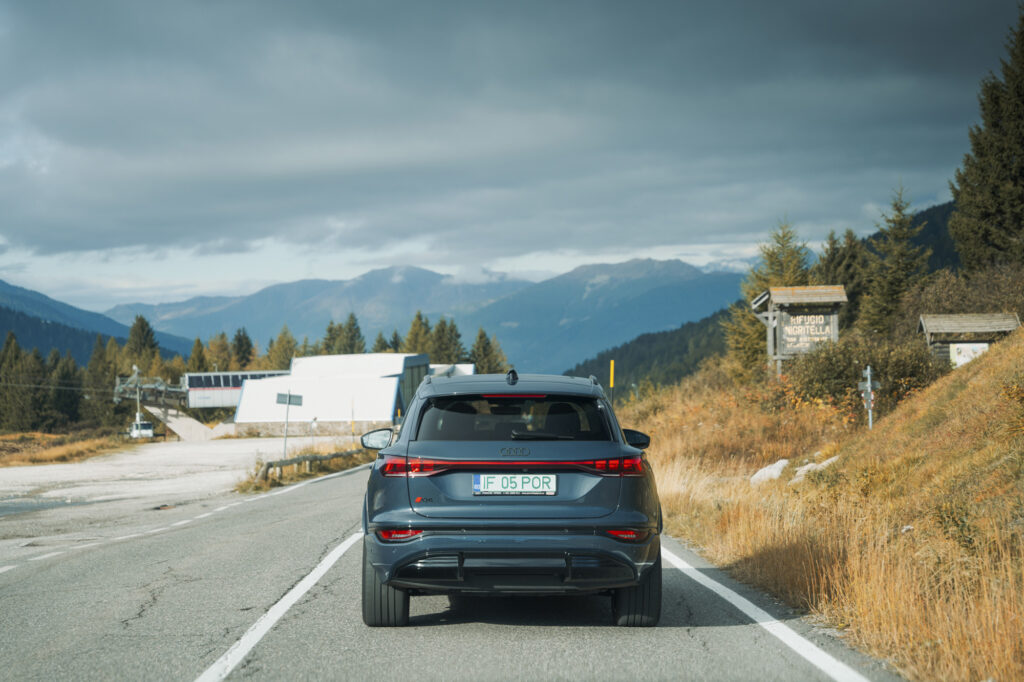
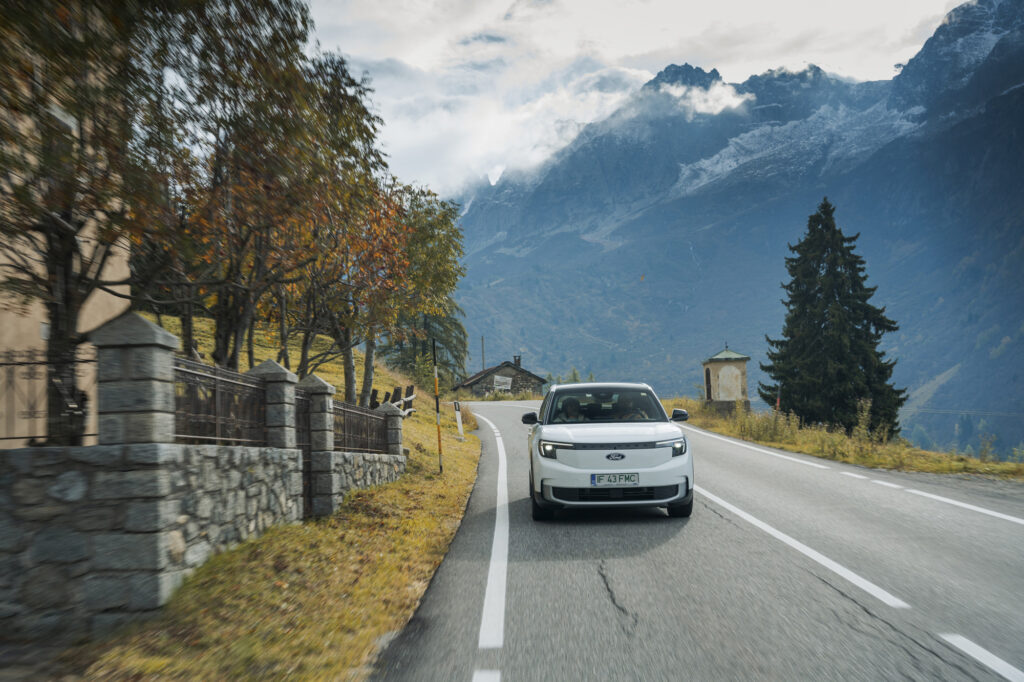
We continued on the highway and all eight electric cars stopped at the same time at the Ionity Cavaglia station hub, located somewhere between Milan and Turin, as there are 12 350 kW fast-charging stations.
None of them were occupied, so we parked the cars next to each other and activated the charges with the OMV eMotion app.
We took the opportunity to go for lunch at a golf club restaurant across the road, and it was by no means the first time that the car batteries had reached 80-100% faster than we managed to eat.
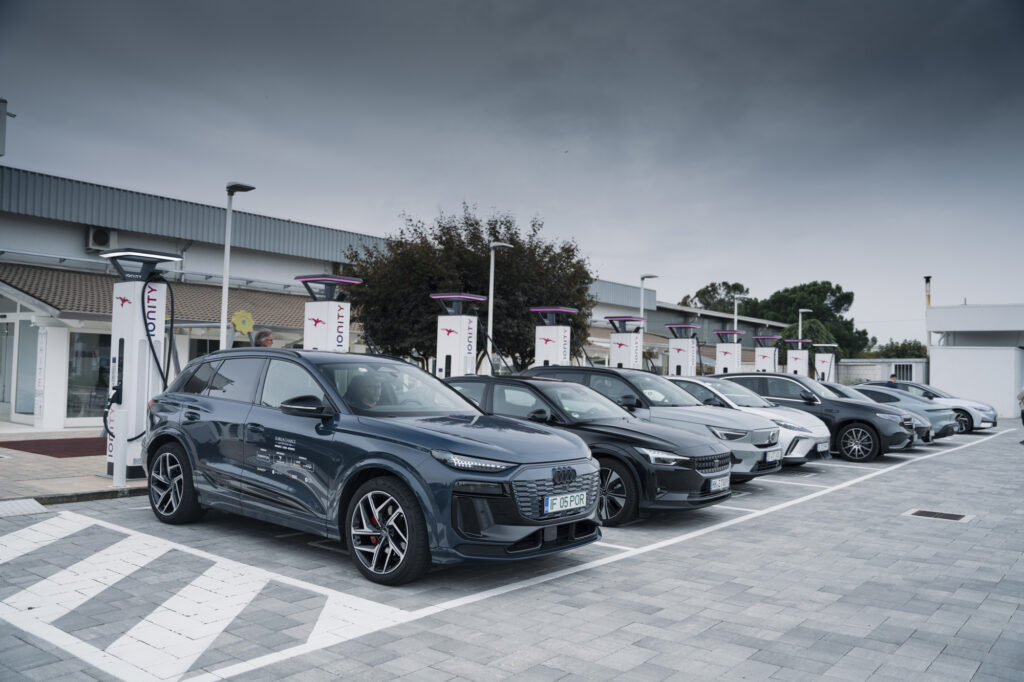

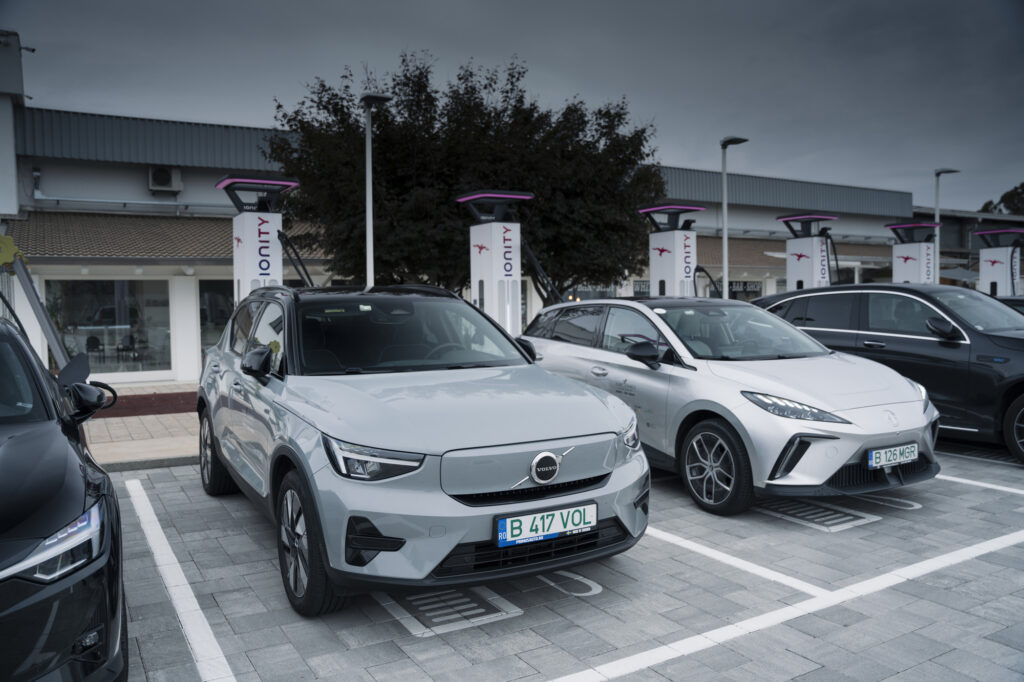
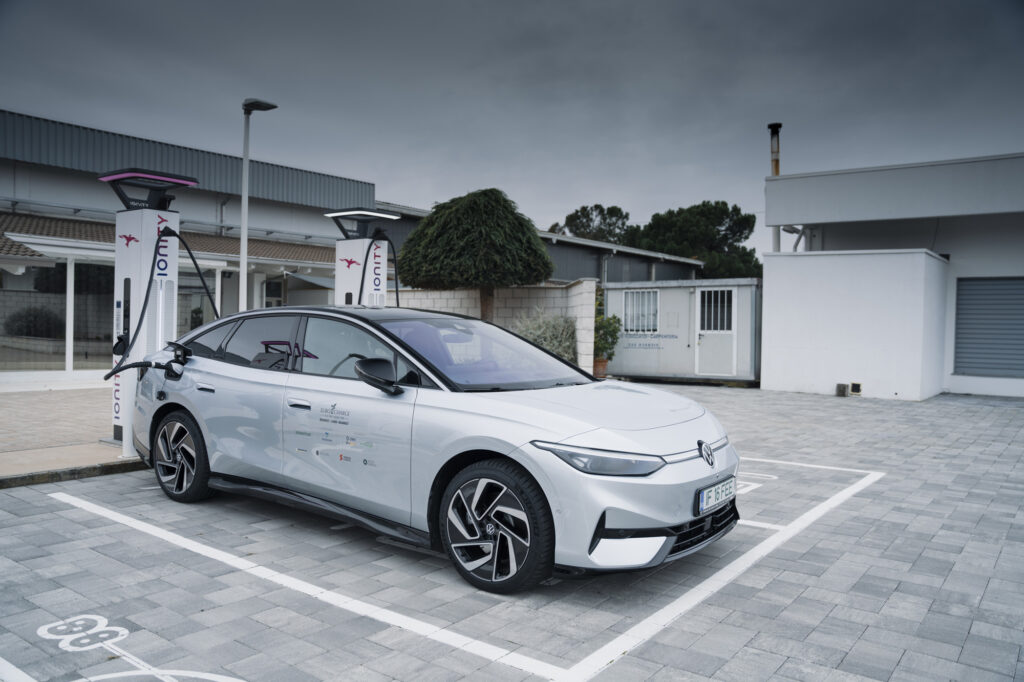
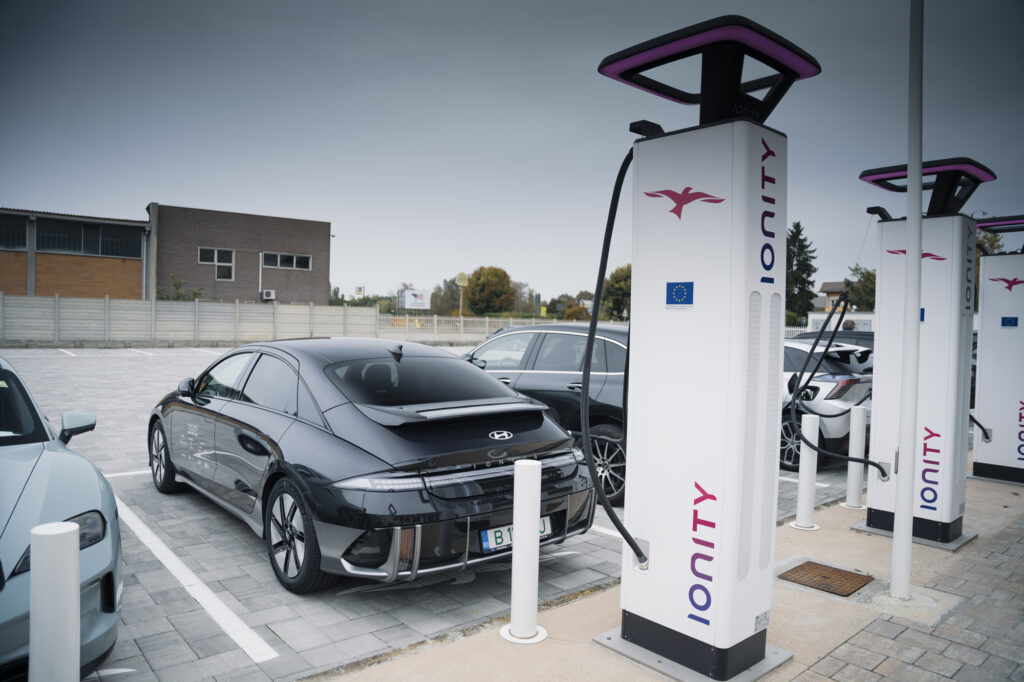

Then followed 600 kilometers of highway, including the 13-kilometer Frejus Tunnel, through which we practically crossed the border into France, and a short loading break at various quick stops. Each crew chose where to charge according to the autonomy of their own cars, but in the end we all ended up in the same place after a heavy thunderstorm for the last dozen kilometers of the highway: Clermont Ferrand.


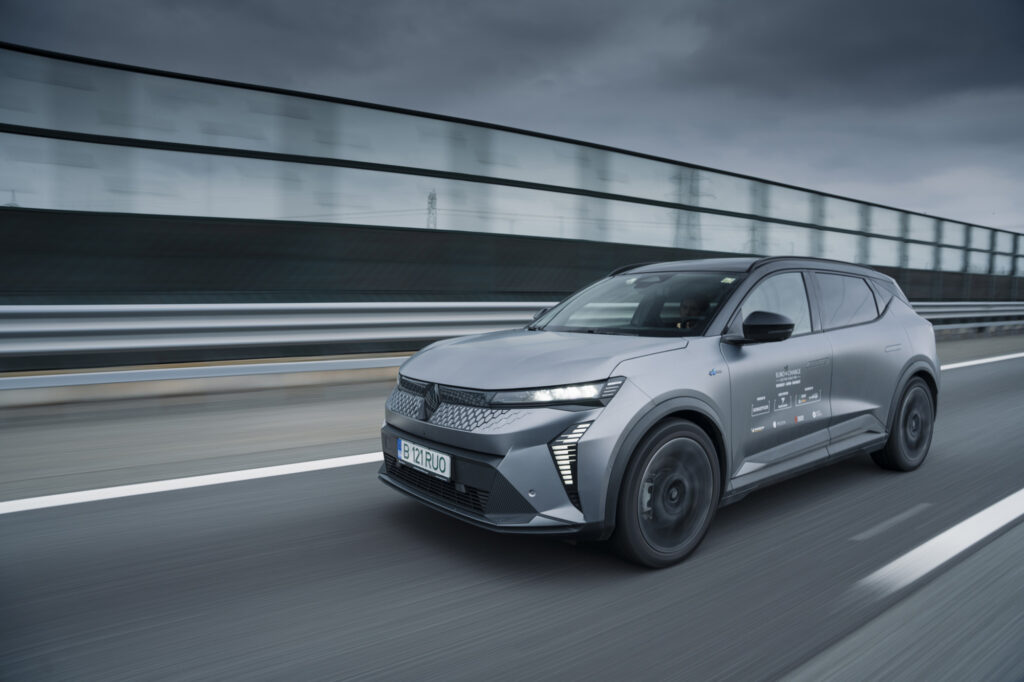
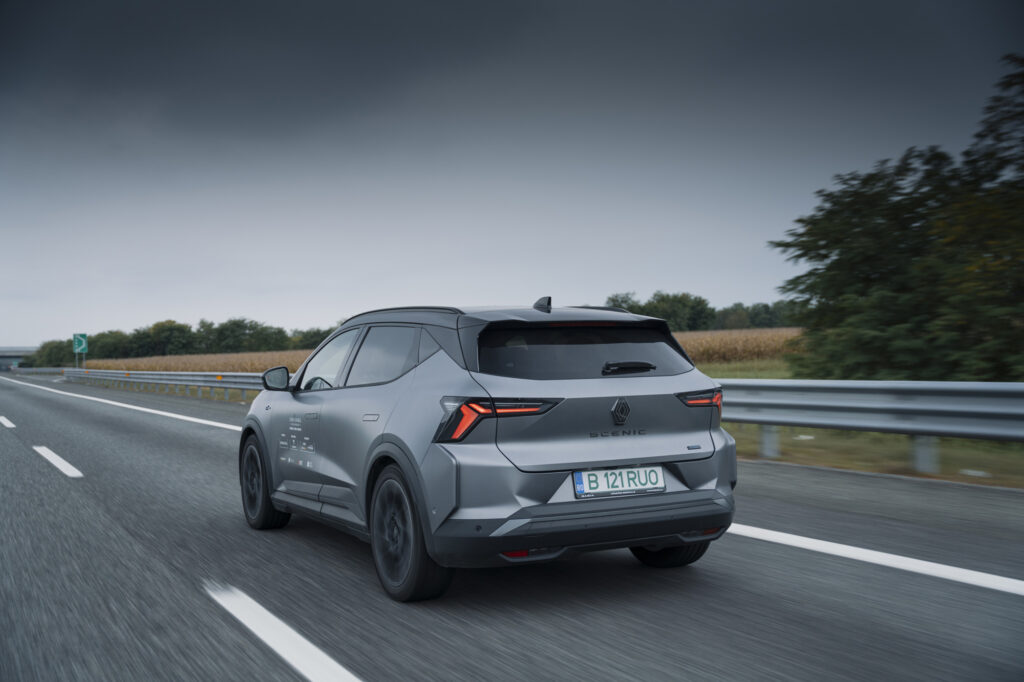
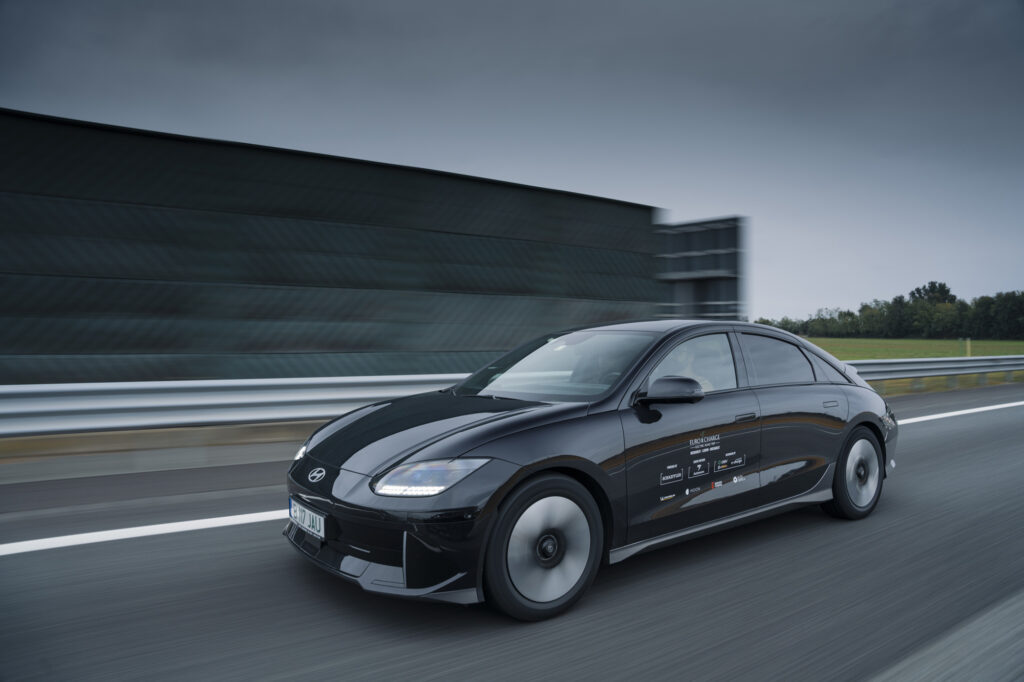
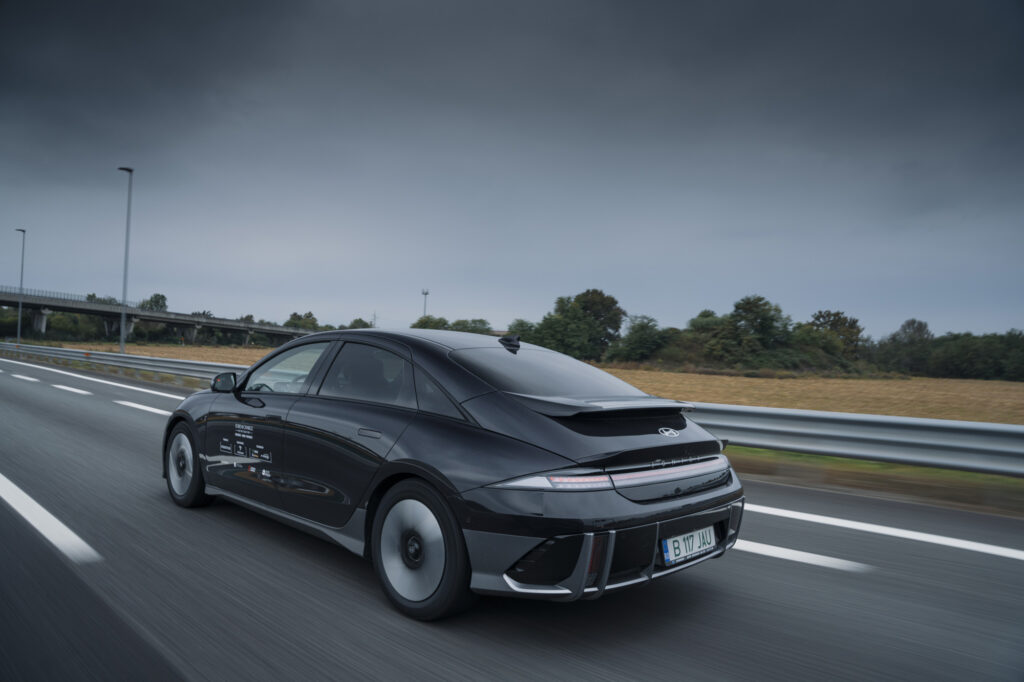

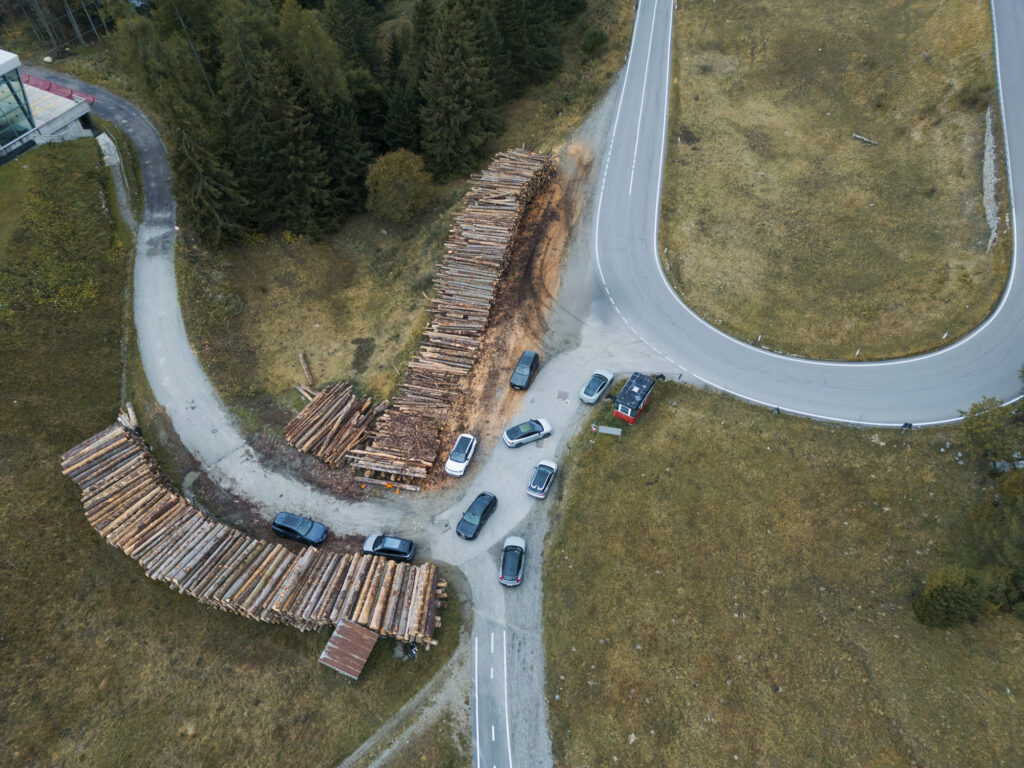
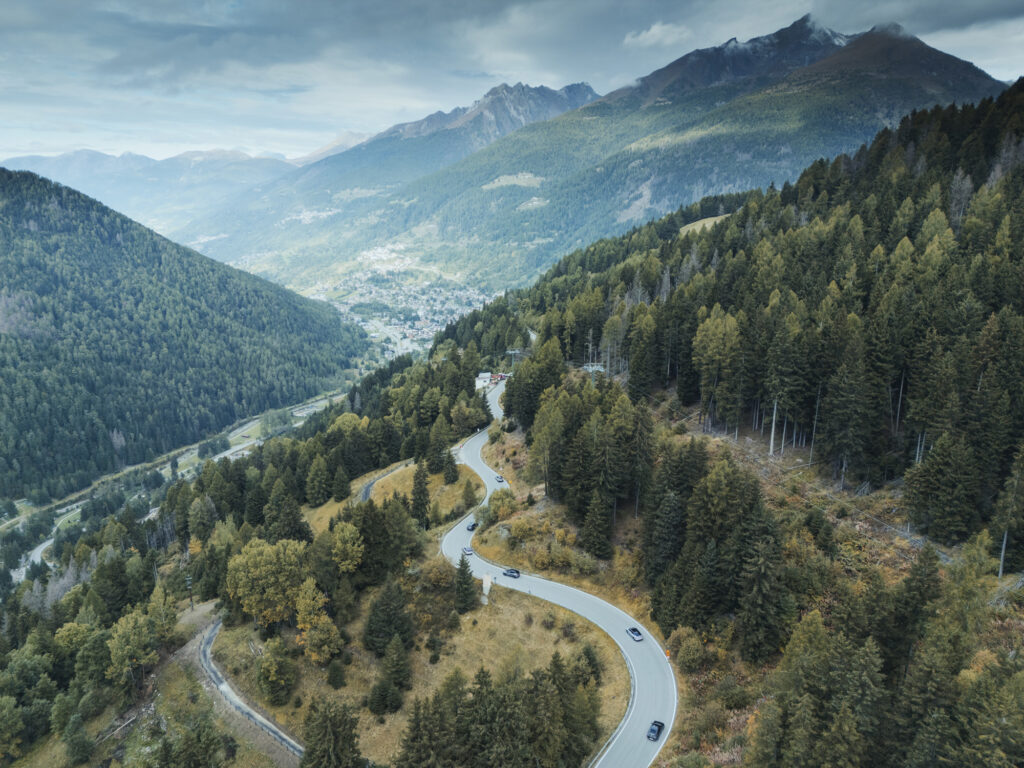


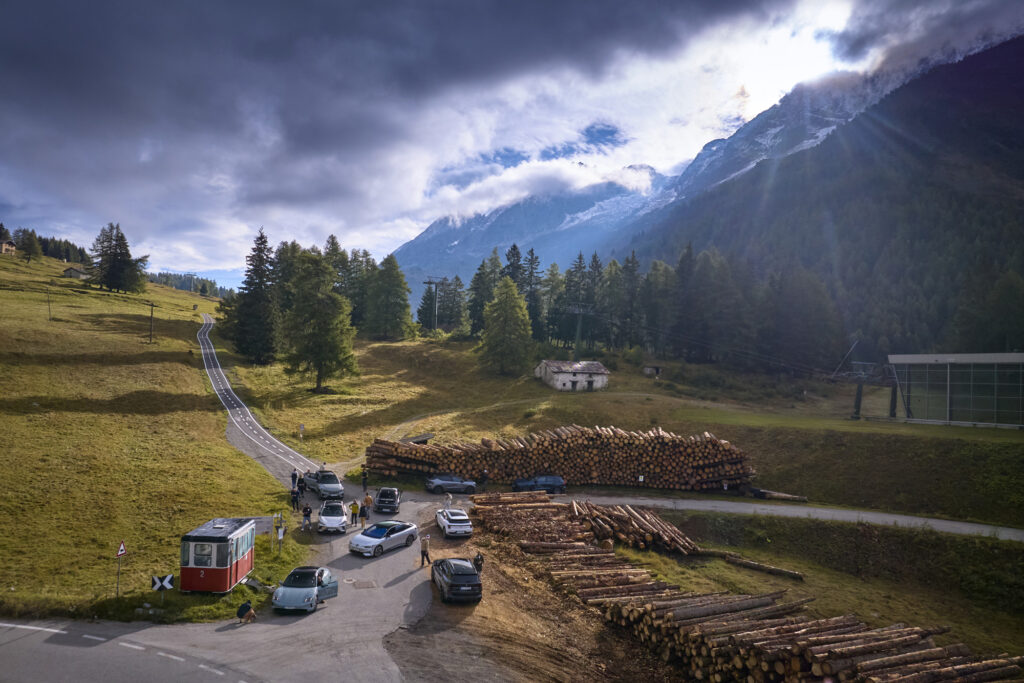
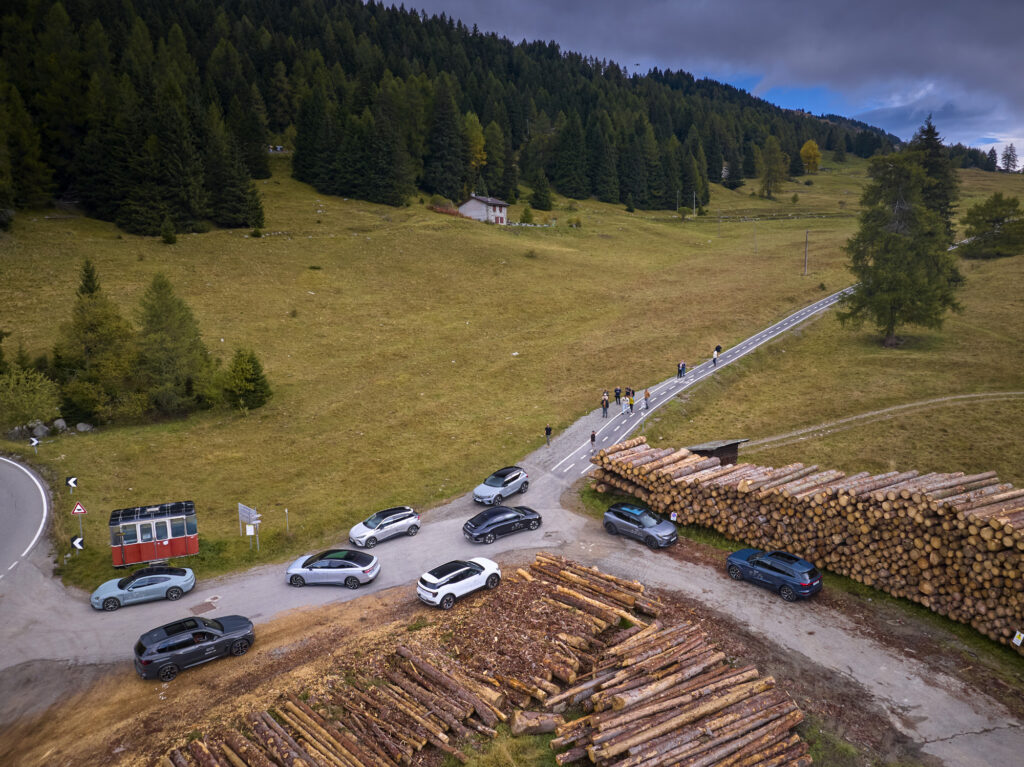


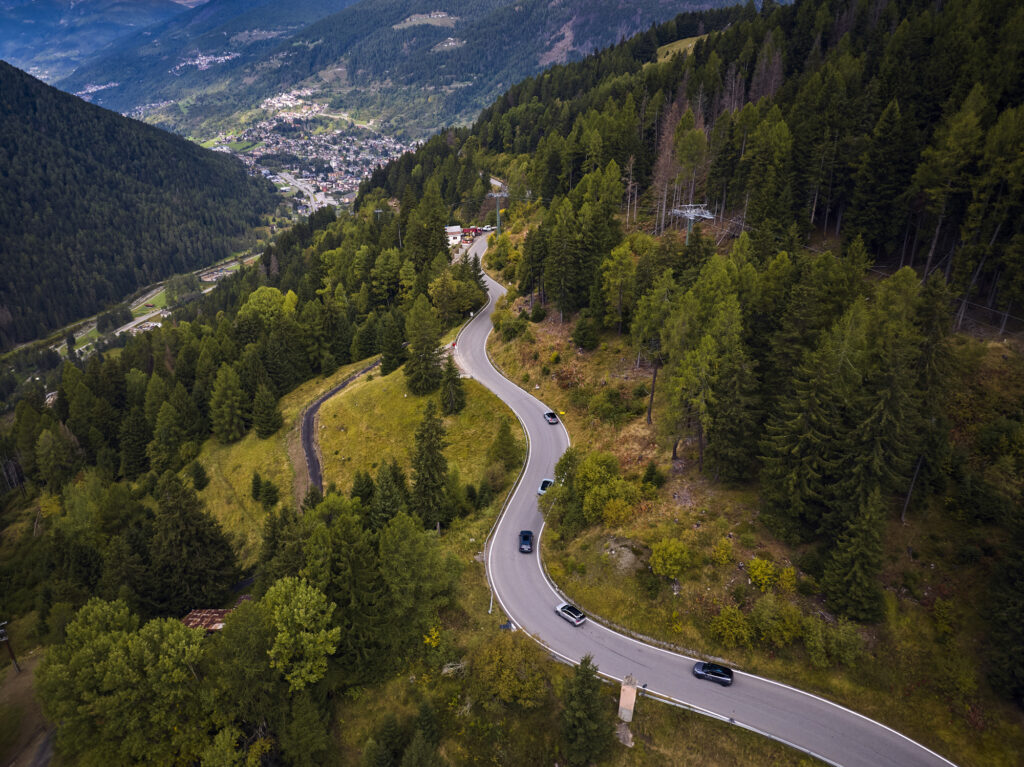






Visit the Michelin Museum
Our destination was not chosen by chance. Clermont-Ferrand is a city in the center of France with less than 150,000 inhabitants surrounded by a volcanic chain where one of the most important companies in the automotive industry was born: Michelin.
Clermont-Ferrand was home to Michelin’s first tire factory, which was transformed in 2009 into a museum that takes you on a journey through the history, present and future of the French manufacturer.
Even if you’re not familiar with Michelin’s history, you’ll know from the museum’s courtyard that you’re in for a fascinating journey that’s not just about the automotive industry, because the world’s largest tire is on display here: it’s over 4 meters in diameter and weighs 5.3 tons.
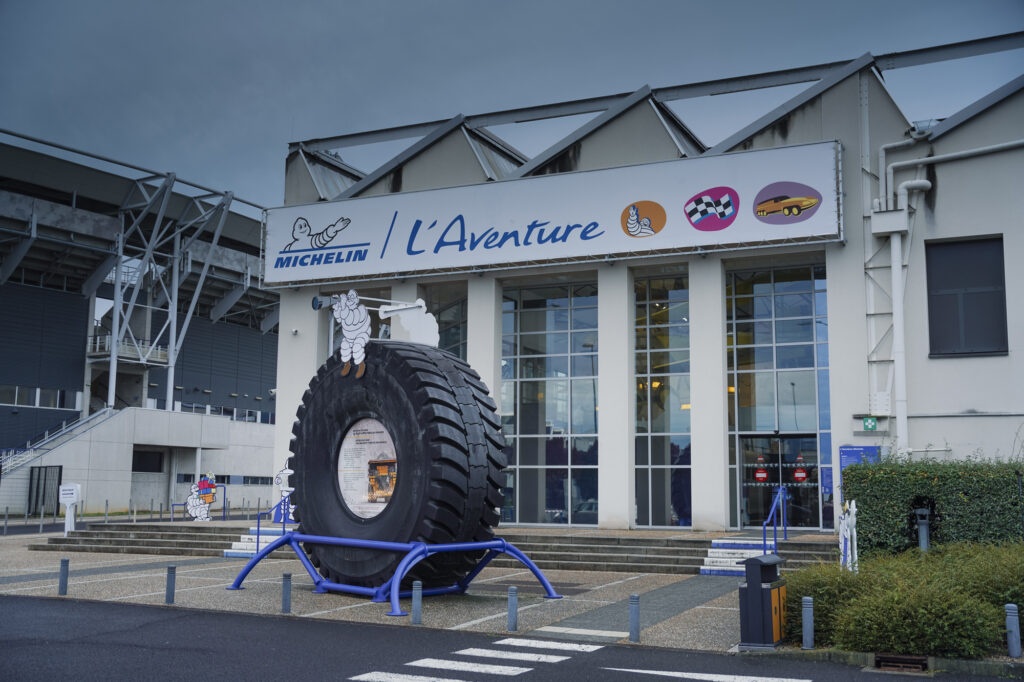
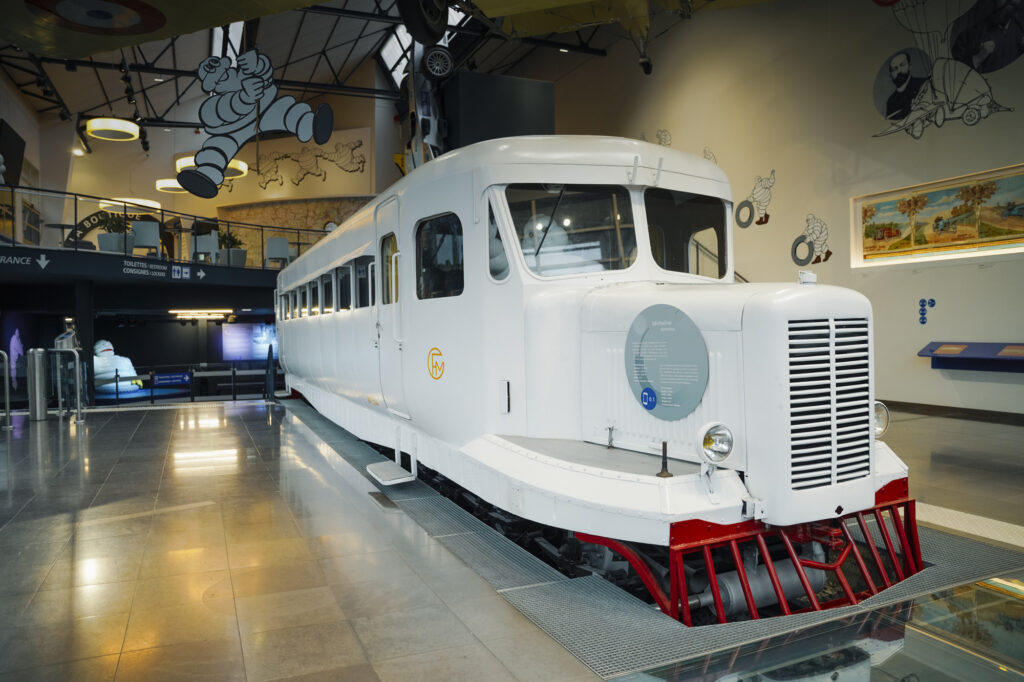


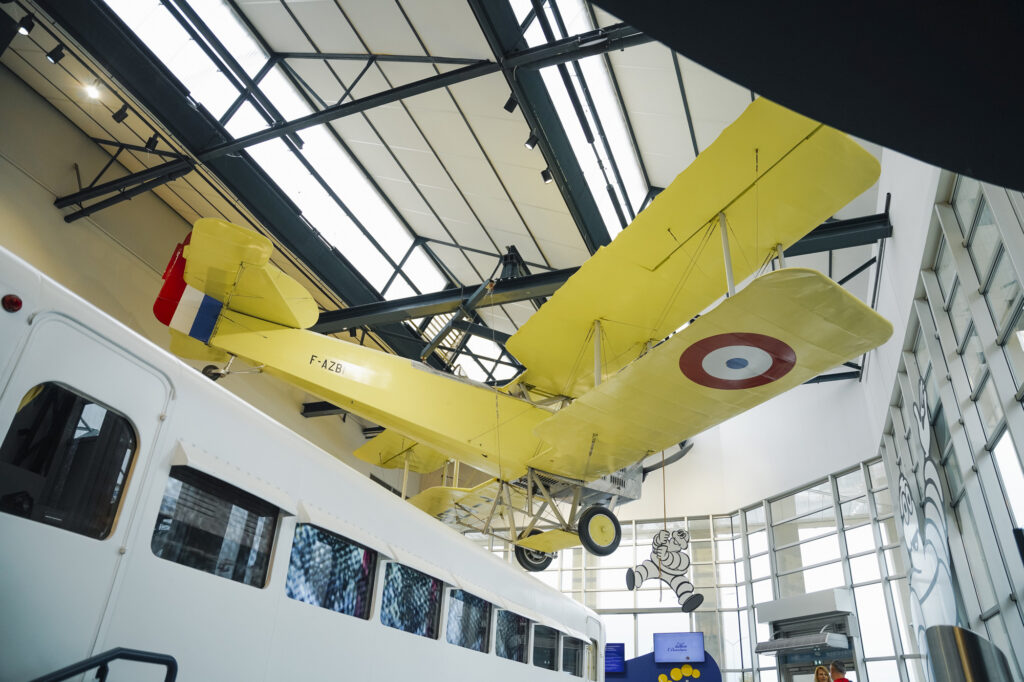
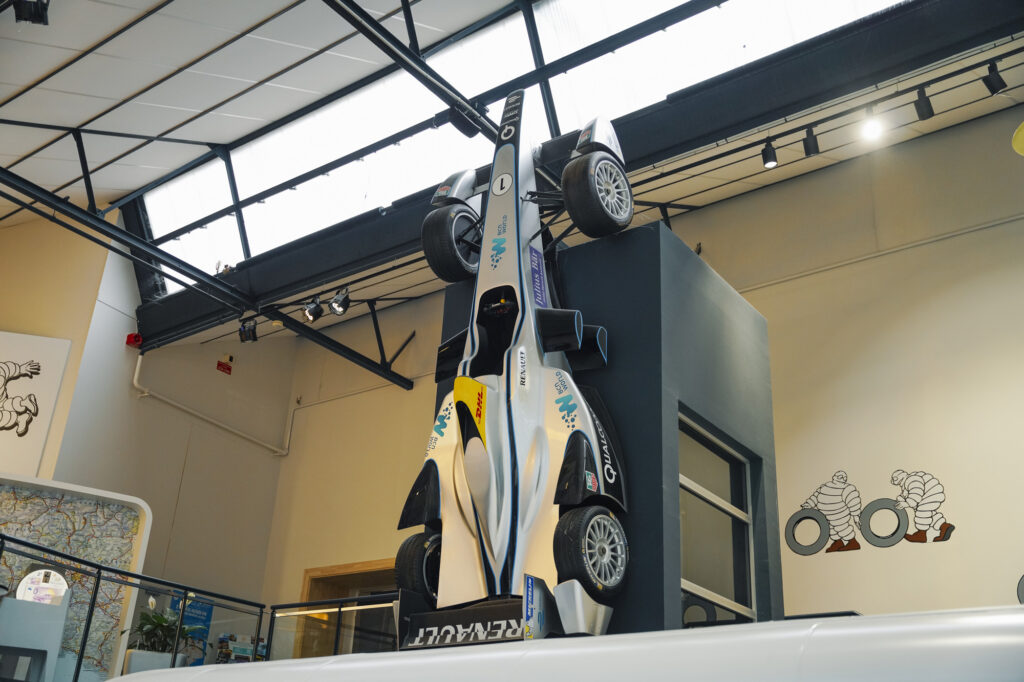
We entered the museum curious to find out the Michelin story and, at the end of a two-hour guided tour, we were not disappointed. There are two exhibits in the reception area to give you an idea of what you’re about to see, but the story really begins upstairs: a few square meters of glass-covered “floor” that gives you a better understanding of the usual road conditions in Europe at the end of the 19th century: it simulates dry mud, footprints and horse-drawn carriage tracks, stones, broken bottles and other obstacles. It was a time when people traveled out of sheer necessity and hardly ever for pleasure.
This is the historical context in which brothers André and Edouard Michelin took over a small family business in 1889, using rubber for agricultural machinery, and decided to expand their field of activity. At a time when horse-drawn carriages and bicycles used tires glued to the wheel, the Michelin brothers invented a removable tire in 1891 that revolutionized the industry: instead of 15 hours, it took only 15 minutes to repair a flat tire.
The next section of the museum introduced us to the world of the automobile: the Michelin brothers invented the pneumatic tire, and eventually decided to build their own vehicle after manufacturers were skeptical that such technology was feasible. Thus, in 1895, L’Eclair, which translates as “lightning bolt”, was born.
Also related to the automotive industry, at the Michelin Museum we also saw a pneumatic tire similar to those used by Belgian driver Camille Jenatzy on La Jamais Contente, the first vehicle in history to exceed 100 km/h. 105.882 km/h.
Or the 1919 Citroen Type A, the first production car in Europe.
And here we also found out some new details about the Citroen 2CV, the first production car to use the radial tires invented by Michelin in the late 1940s, which today have become an industry standard. With a radial tire, the cords are arranged perpendicular to the direction of travel or radially from the center of the tire to the sidewall, and Michelin introduced this innovation in 1946 under the Michelin X brand.
We couldn’t leave the auto section before seeing the test vehicle known as the Centipede: we’re talking about a 7.27-meter-long, 10-wheeled vehicle with a large wheel in the center for other types of vehicles. The role of the Centipede was to simulate a heavier vehicle in order to test the effectiveness of the tire in the central area.
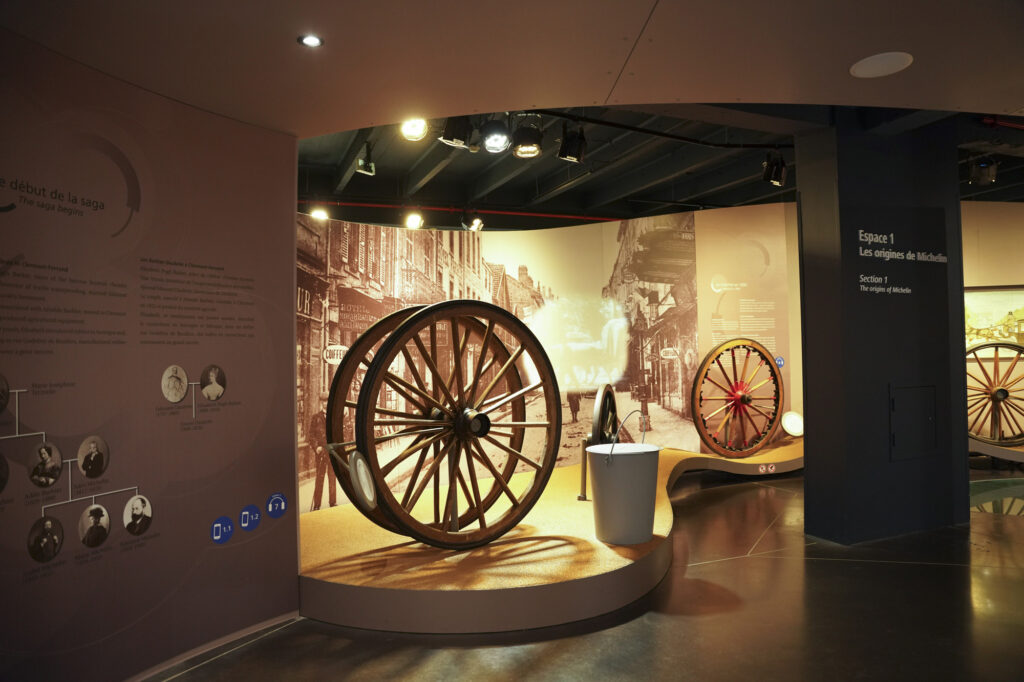
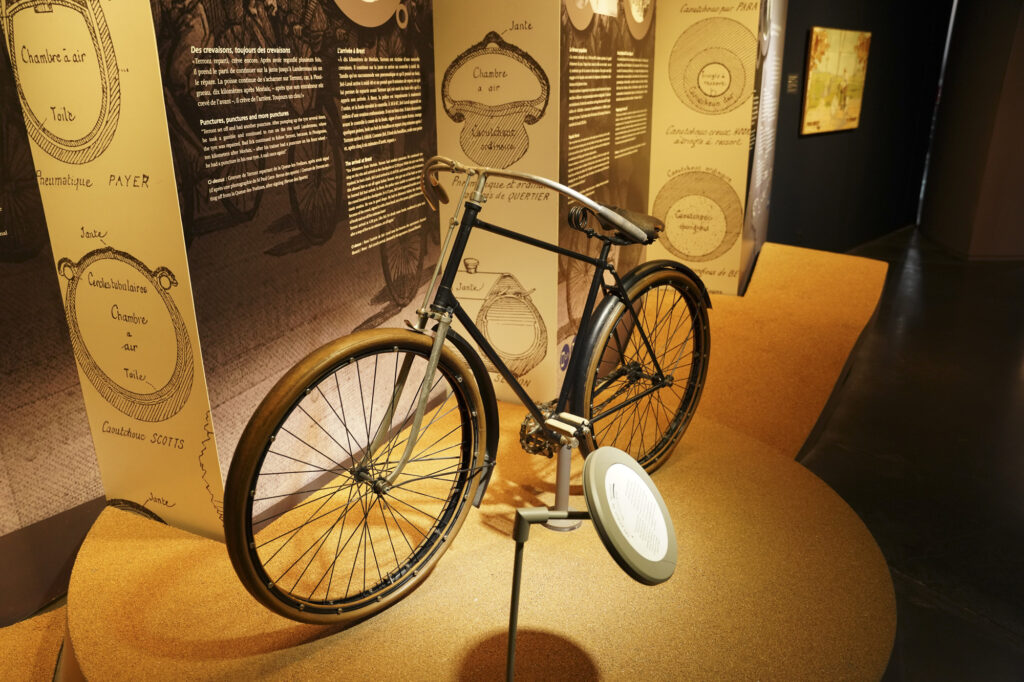
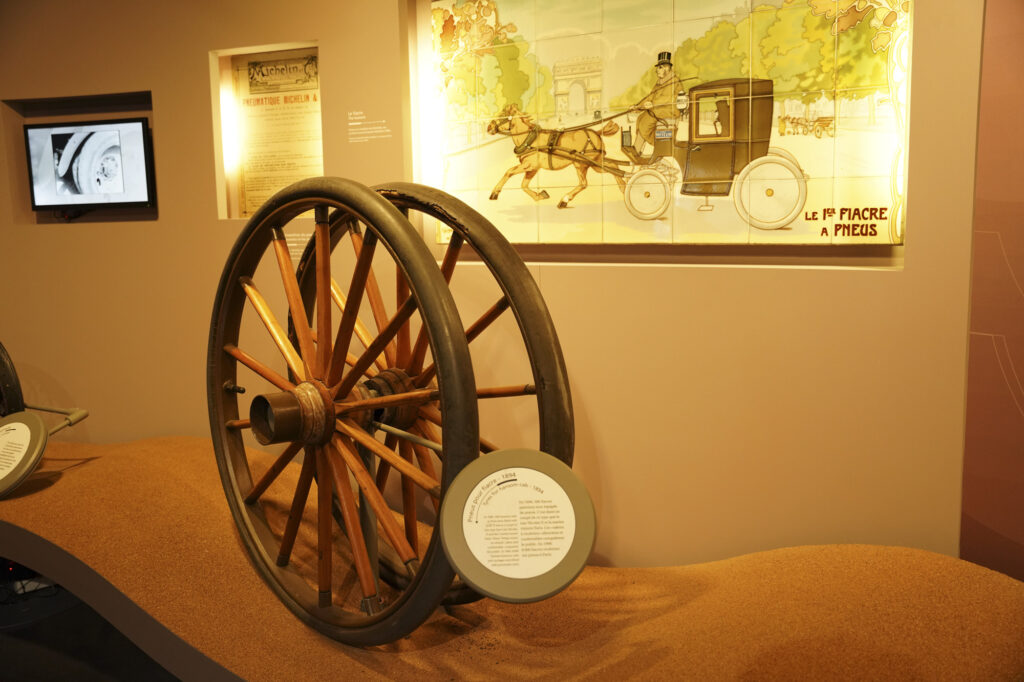
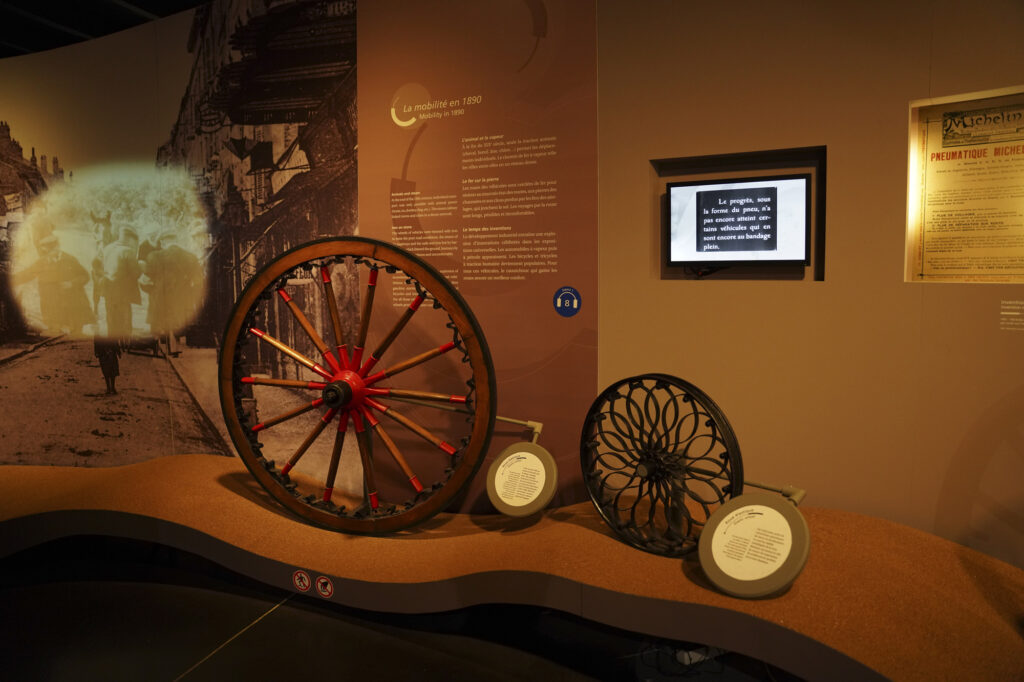
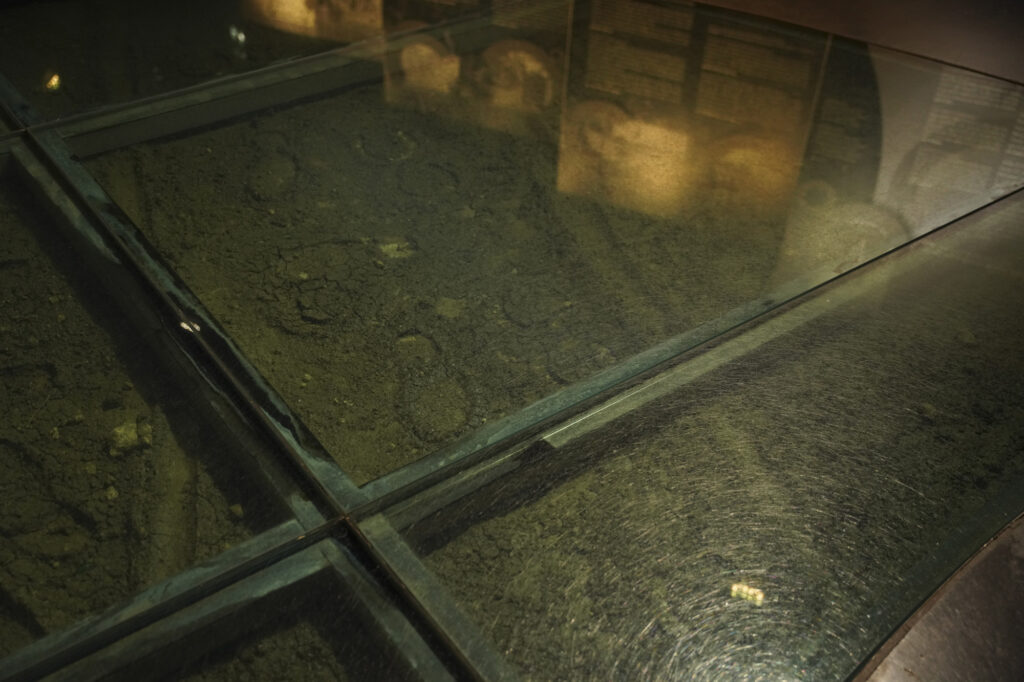
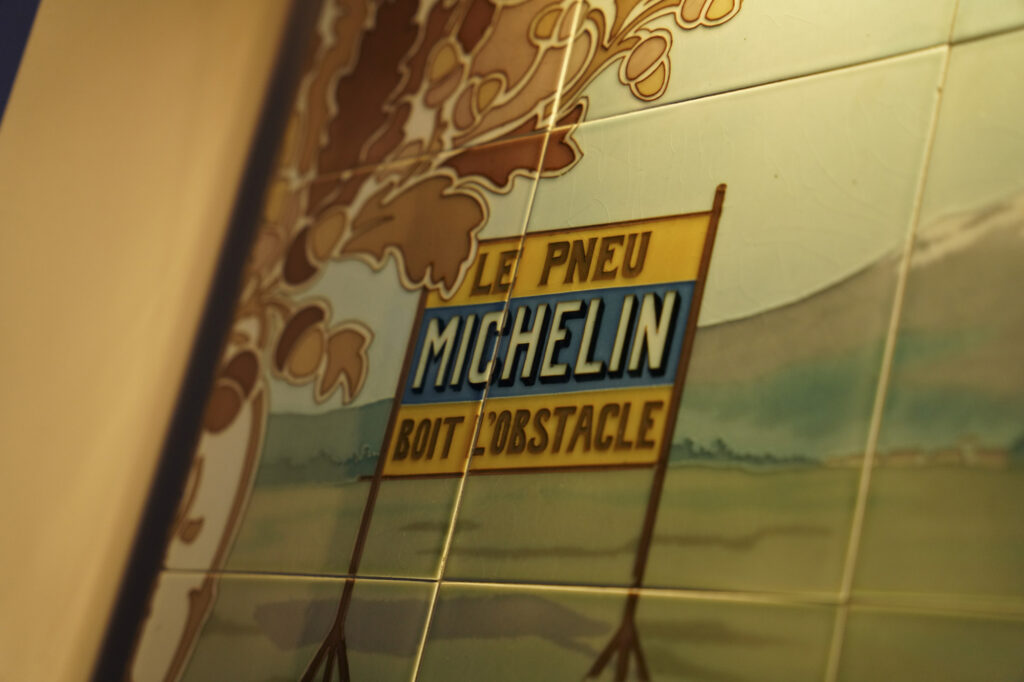
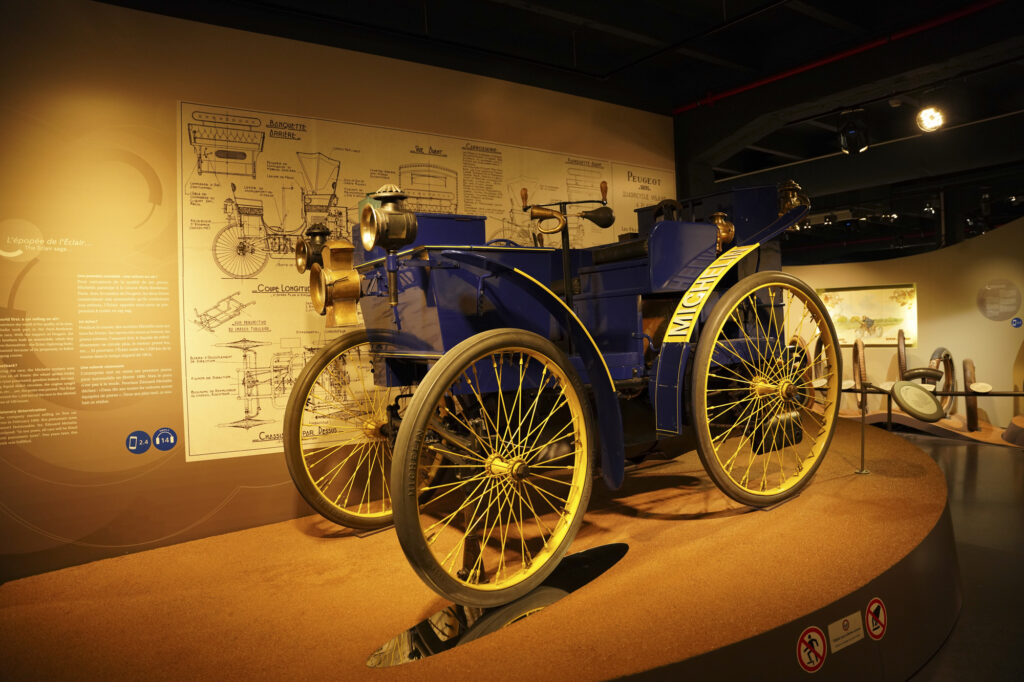
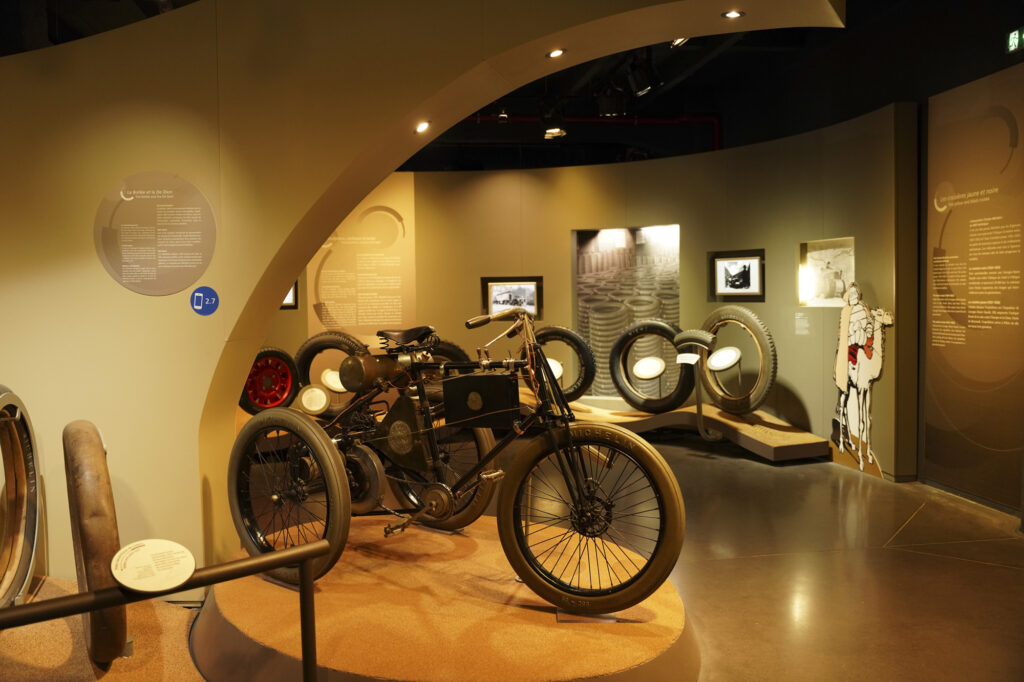
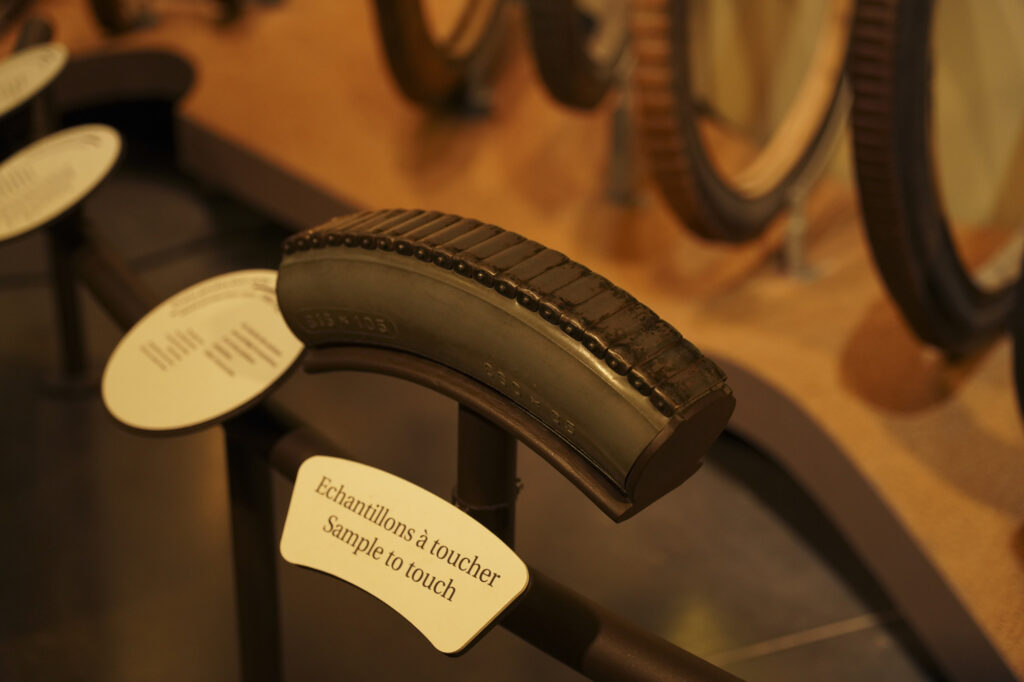
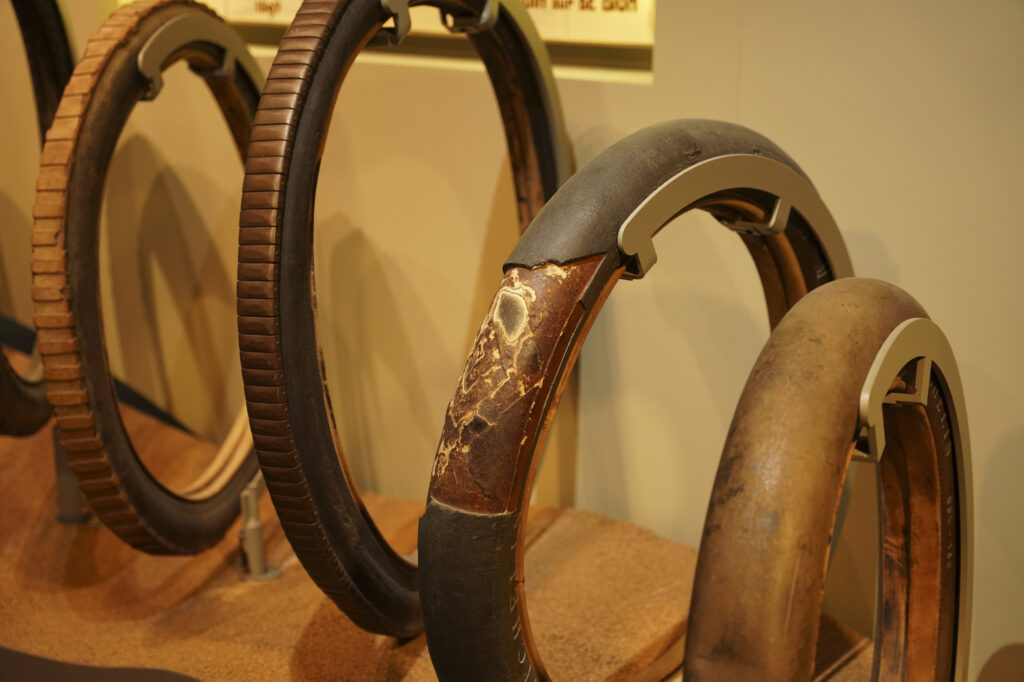
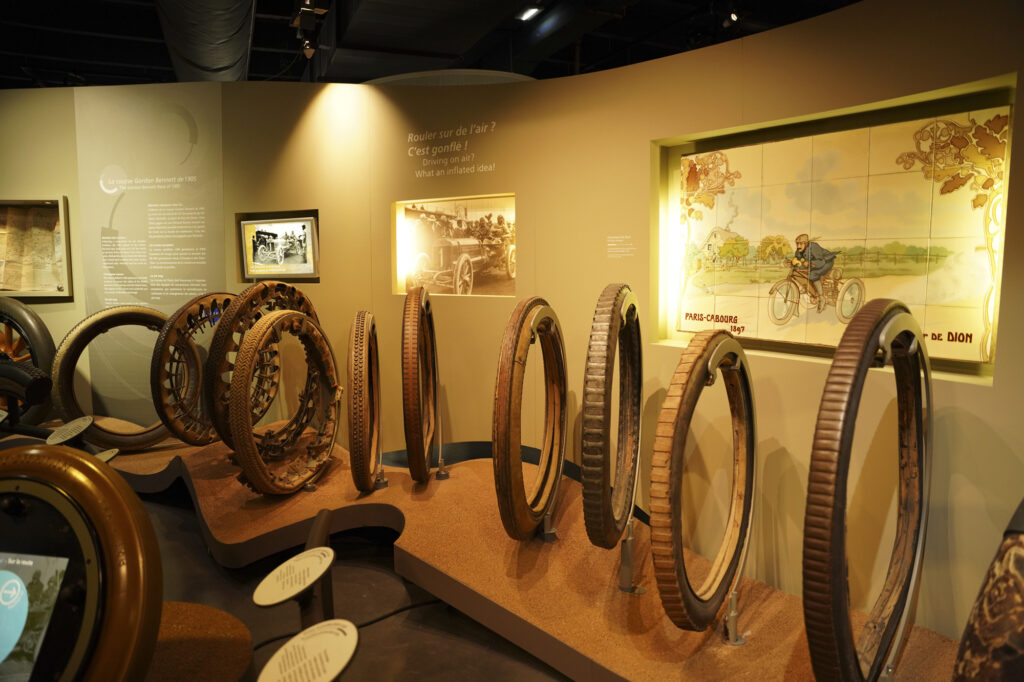
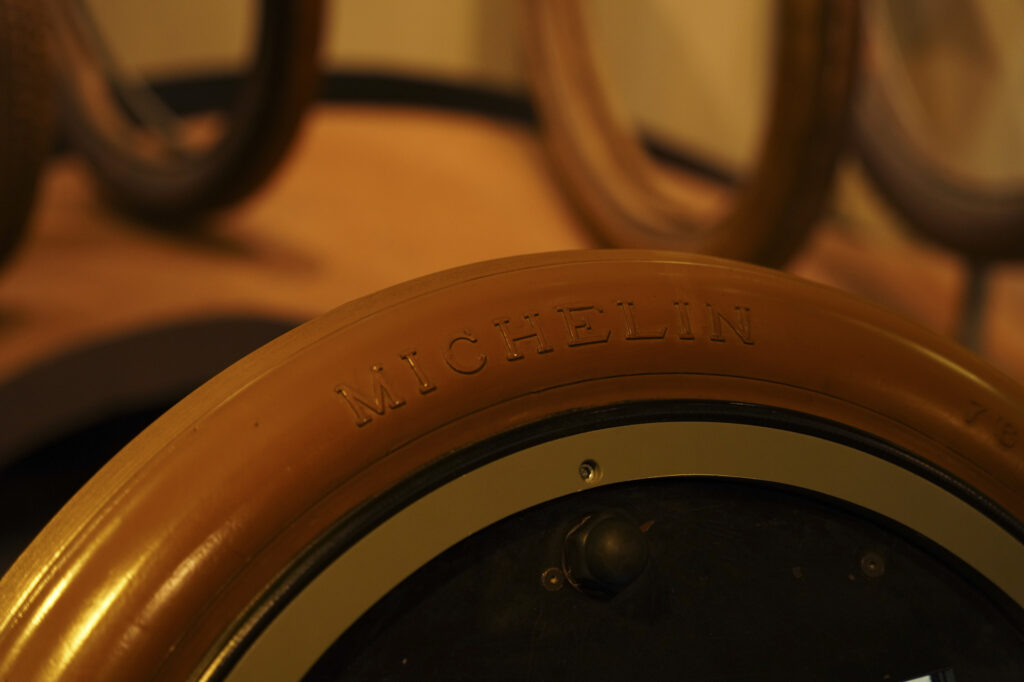
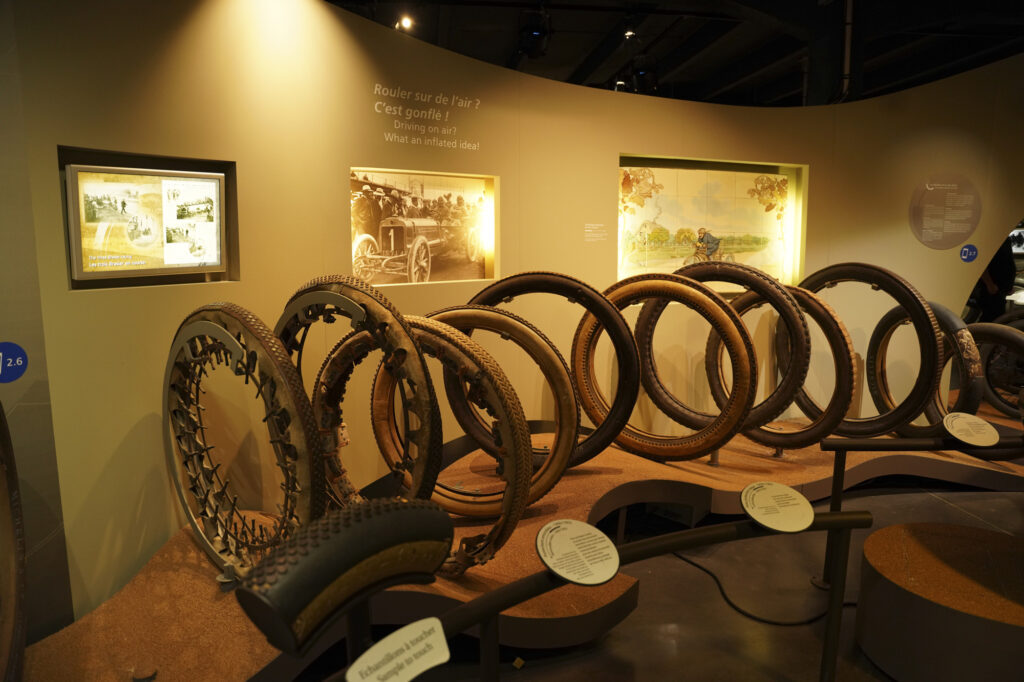

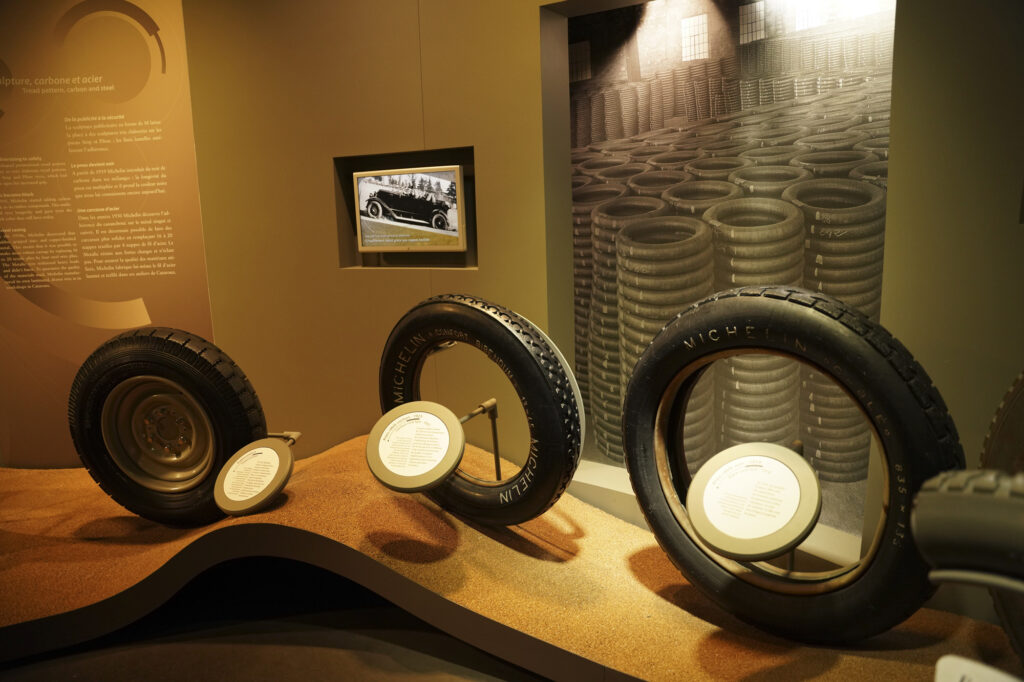
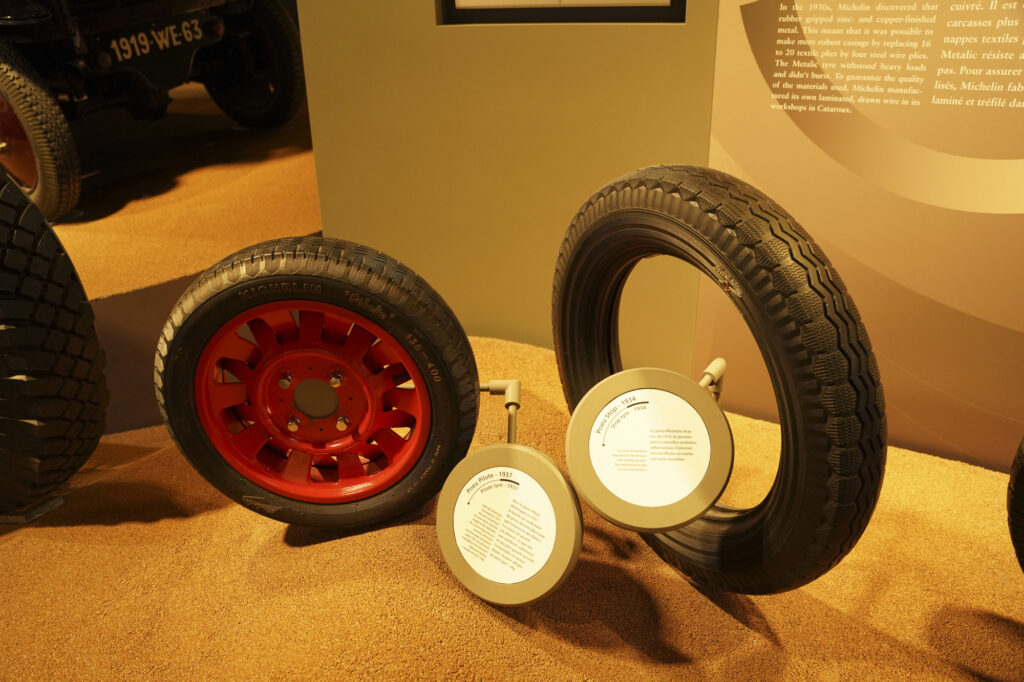

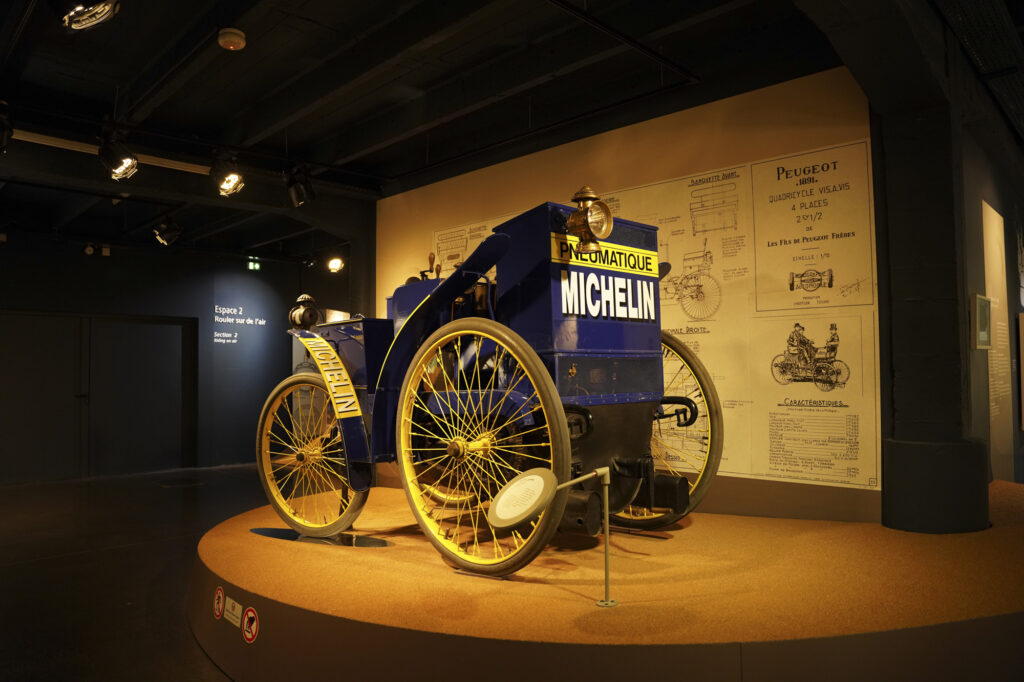
Trains, airplanes and other unique Michelin innovations
Perhaps surprisingly for a museum dedicated to a tire manufacturer, a good portion of the space is allocated to other segments of the transportation industry. That’s because during the First World War, the French manufacturer adapted its production to the needs of the time to produce some 2,000 Breguet airplanes for the French and American armies between 1915-1918.
I – and probably for the child that still exists in each of us – was most fascinated by the section dedicated to trains. All the more so because here too there is an innovation thought up by the Michelin brothers: wouldn’t it be more efficient if a night train didn’t make so much noise and didn’t jolt you in your sleep?
The Michelin brothers’ response to this problem took the form of numerous prototype trains. They were forced to build their own trains because, as in the car industry, no manufacturer believed that a train could run on pneumatic tires because of the high mass of the trains.
But in 1929, the Michelin brothers designed a special pneumatic tire that could run on the narrow width of railroad tracks, and decided to introduce a number of innovations to reduce the mass of a train: the first prototype train had the front end of a car, and the passenger compartment was actually part of an airplane.
It was given the name Micheline, with an e at the end to differentiate it from the tires, and the speed record was set in 1931 by the fifth prototype train on the Paris – Deauville rail line: 107 km/h (107 mph). Micheline trains were produced until 1952 and were also used in Madagascar.
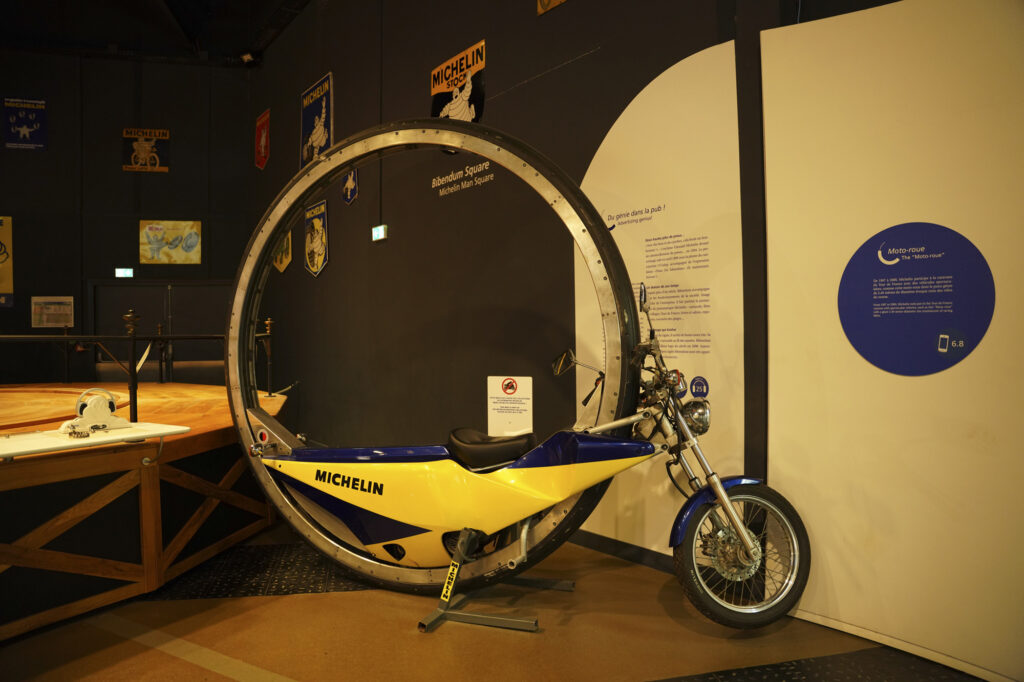

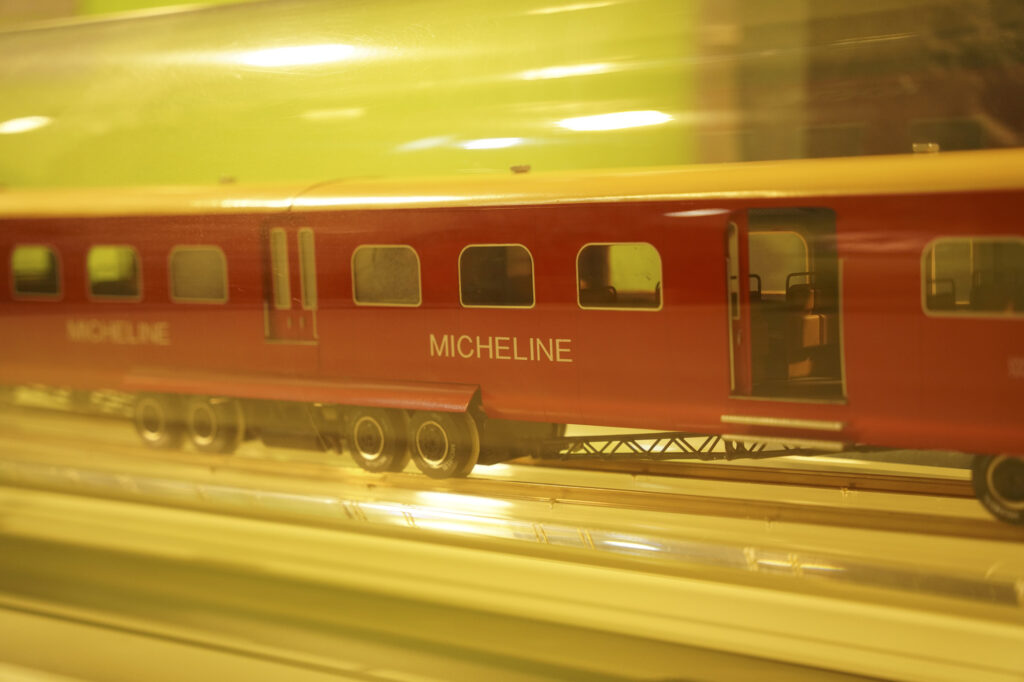
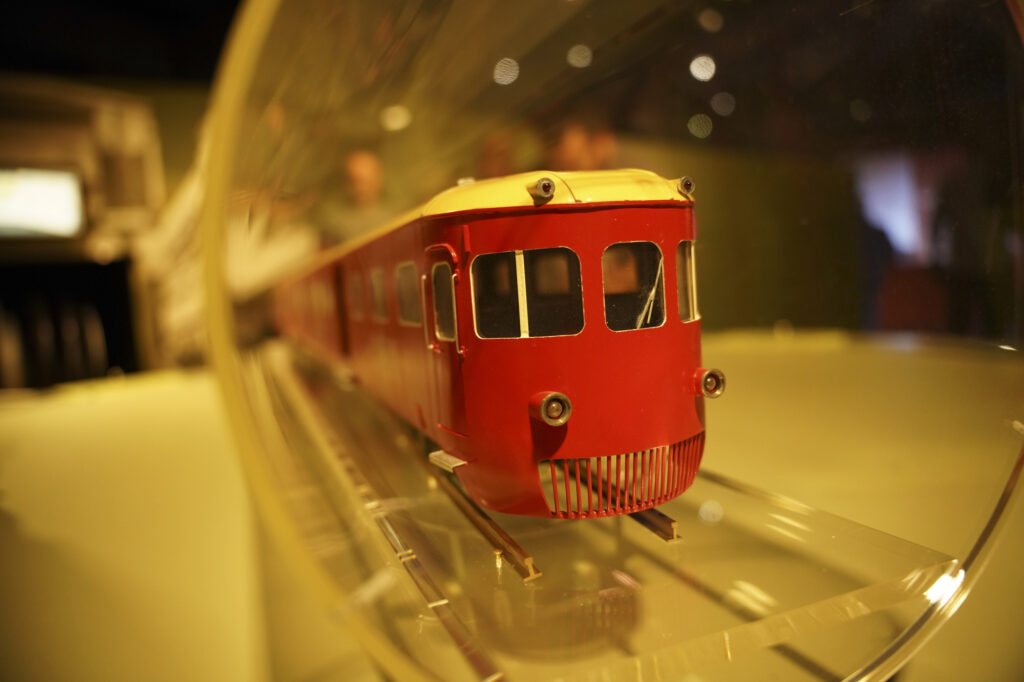
How to market: from Bibendum to Michelin Guides
But the Michelin brand probably wouldn’t have become as popular today without some of the excellent marketing products that are presented in such unique detail in the Michelin Museum.
I will start, not surprisingly, with Bibendum, Michelin’s official mascot, which is everywhere in the museum and which originated in 1898. In fact, the mascot’s official name is the Michelin Man, but the slogan “Nunc est bibendum” that accompanied it has been misinterpreted. In Latin, the phrase means “It’s time to drink”, but people interpreted the mascot as Bibendum. And that’s how the name remains today.
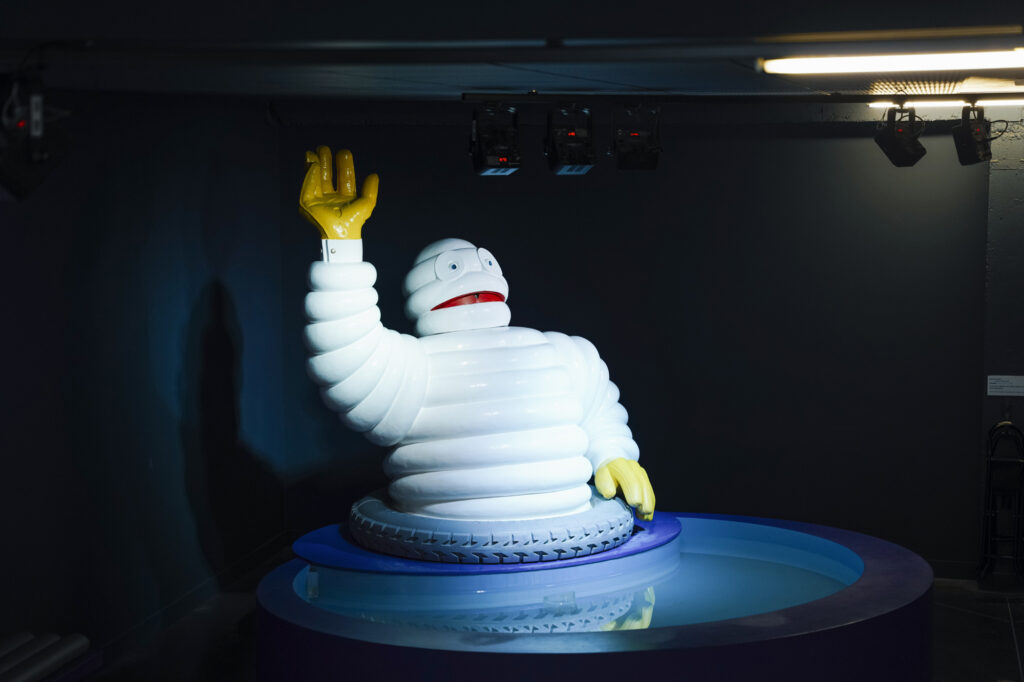
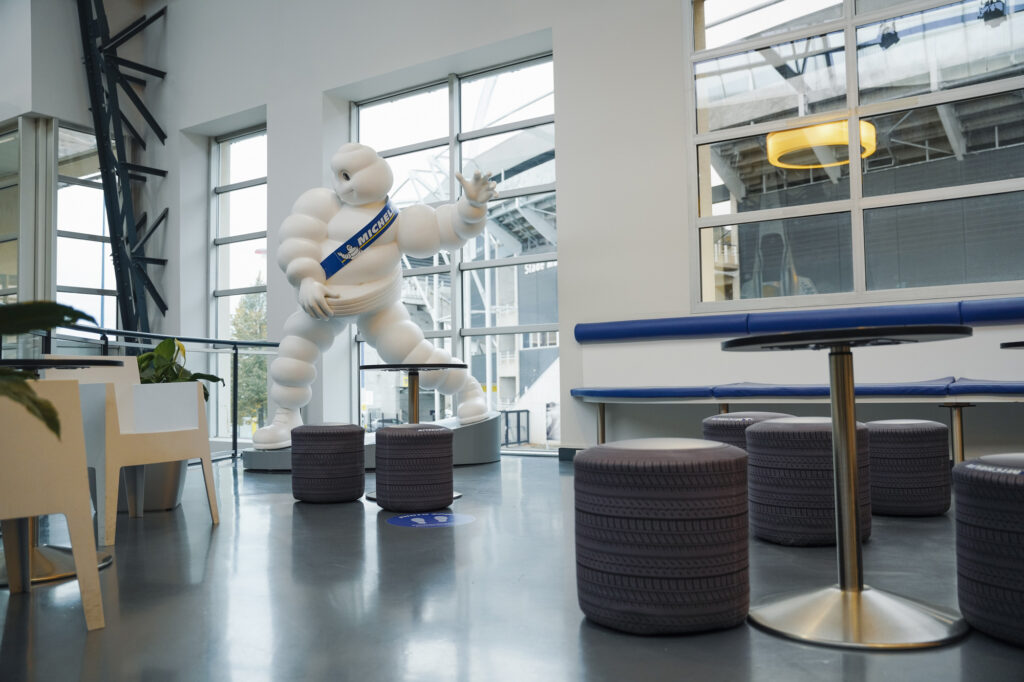
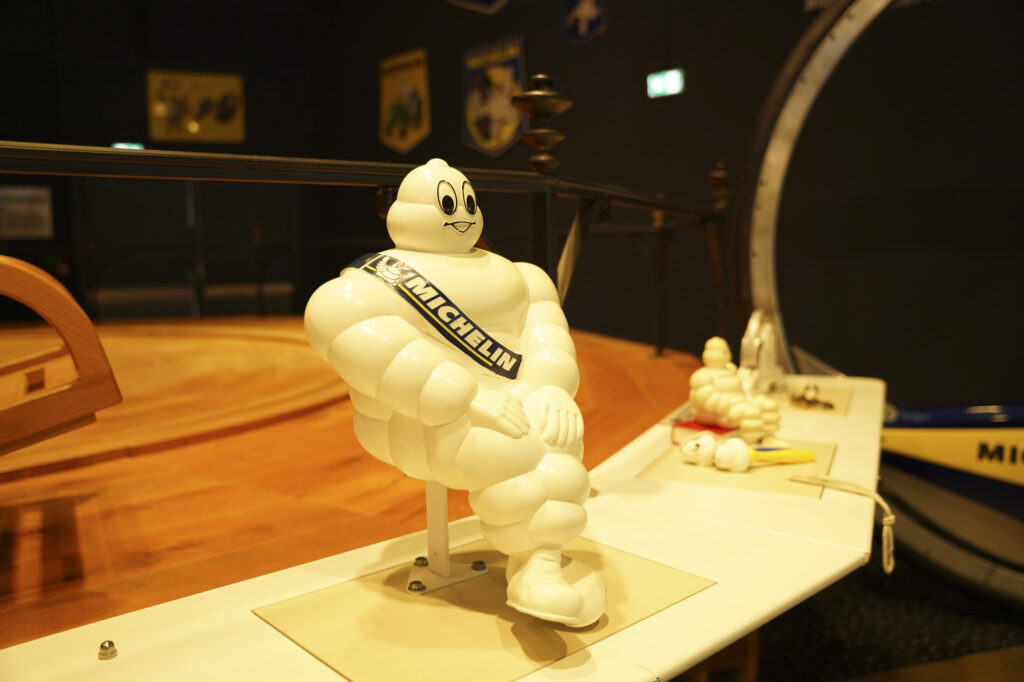

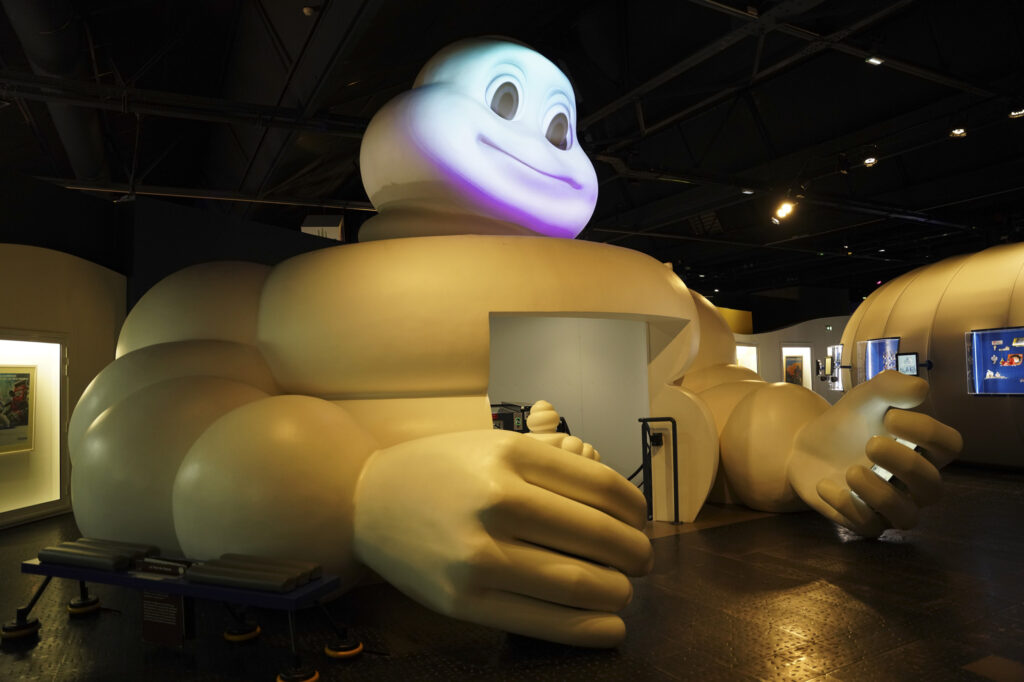
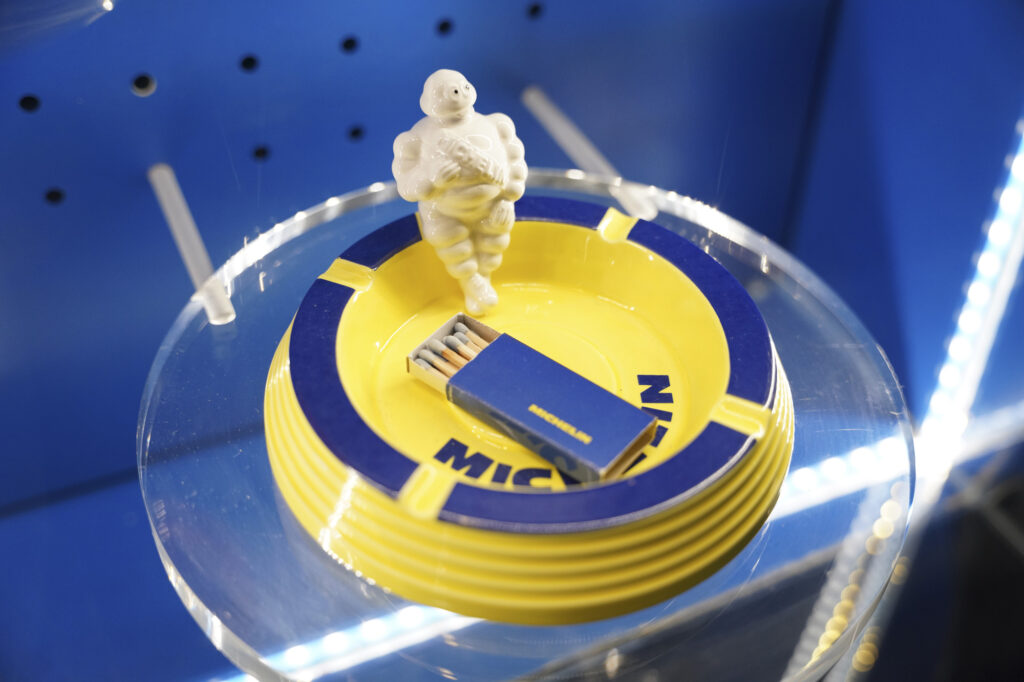
But Michelin has also made a name for itself with practical guides that go back over 100 years. In an attempt to get people to travel more and more so that at some point they would need new tires, Michelin launched the Red Guide in 1900. Today, the first edition of this series of guides has a special place in the Michelin Museum and is protected by glass to prevent further deterioration. Initially, the Red Guide included addresses for gas stations, service stations and other practical information for drivers, and was later supplemented by Michelin maps.
Incidentally, I also learned a story that in the age of Google Maps seems unbelievable: at the turn of the last century, Michelin offered a service whereby you called a phone number, asked for a travel guide between city A and city B, and within 7 days you received a letter at home with complete navigation instructions.
This was followed in 1926 by the launch of the Michelin tourist guides, which rewarded restaurants with one, two or three Michelin stars, all in the same idea of traveling and discovering new places.
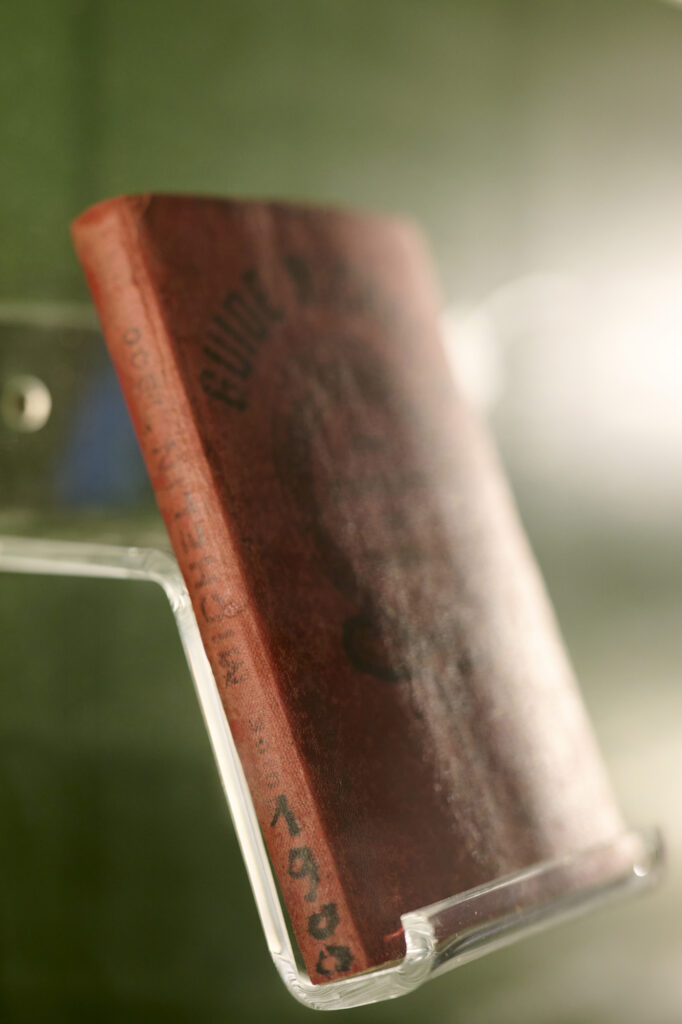
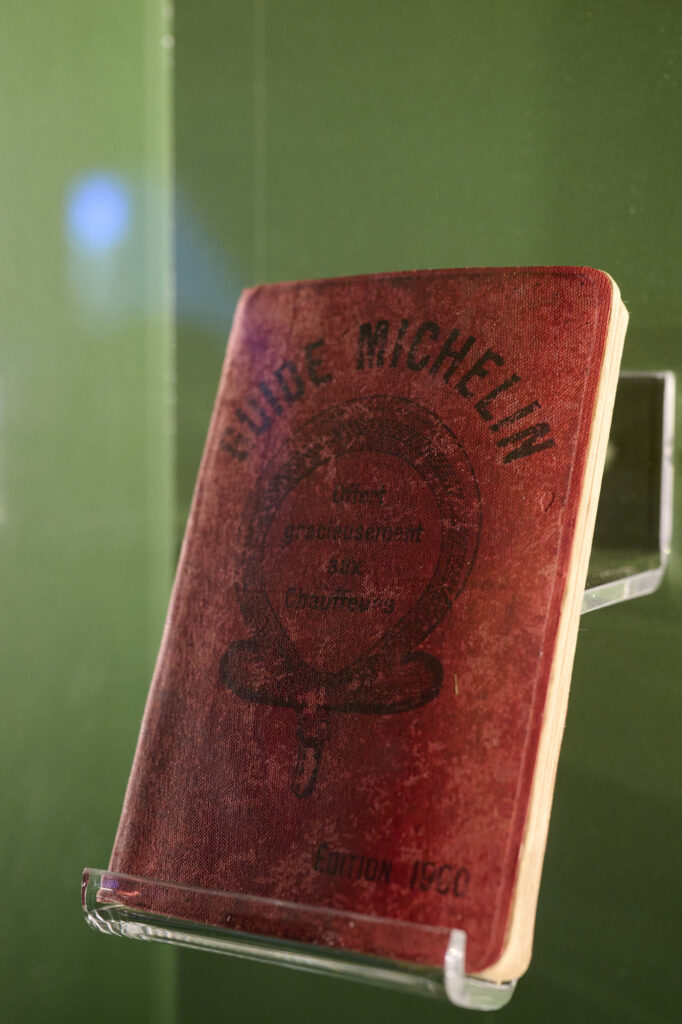



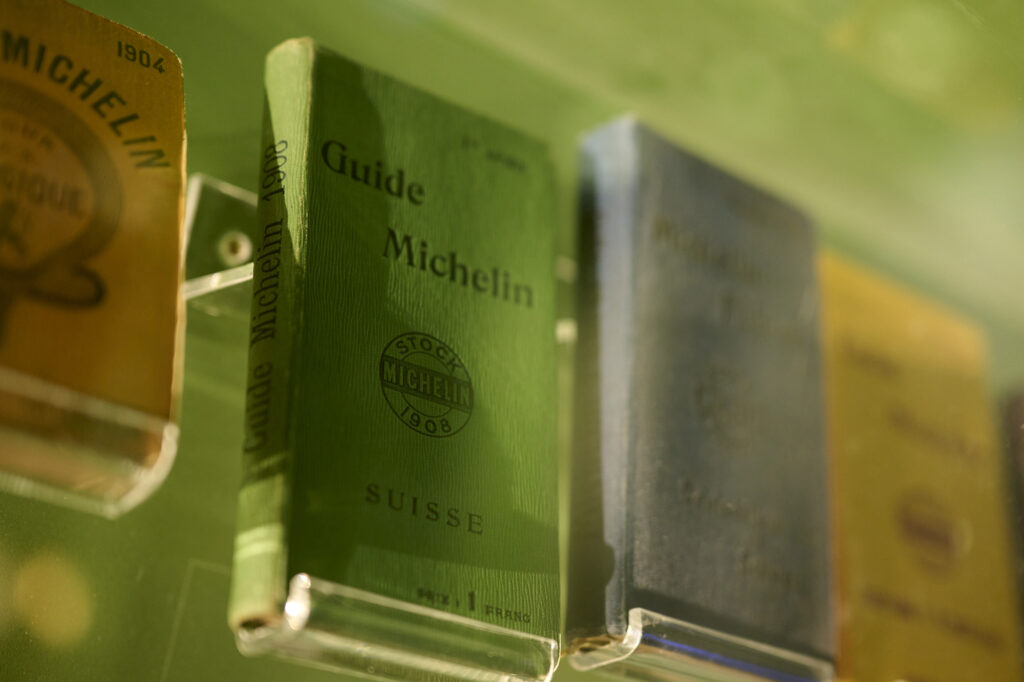

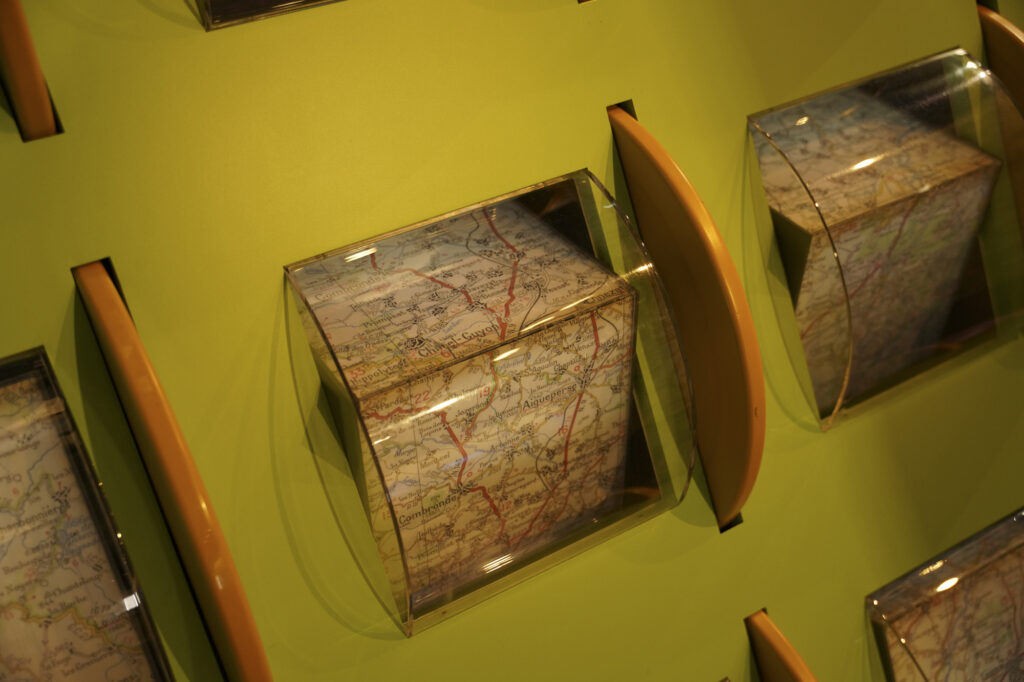
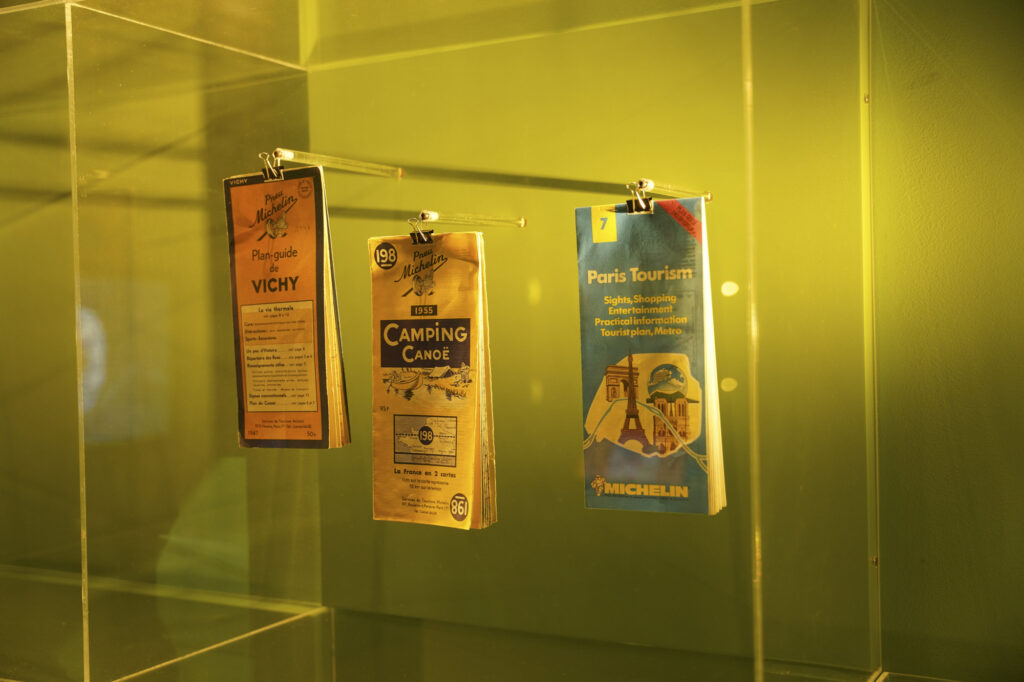
A glimpse into Michelin’s future
The last part of the visit at the Michelin Museum was dedicated to the future products section. Here we saw three examples of tires that Michelin engineers are currently working on and are in various stages of development.
Uptis (Unique Puncture-proof Tire System) airless tires are already on commercial vehicles in pre-series versions. As the name suggests, this type of tire does not contain compressed air, but a special compound capable of supporting the vehicle without compromising safety or driving comfort. The main advantages are the elimination of the problems of punctures and tire pressure, which prolong the life of the tires.
Michelin has also proposed the development of a tire for use on the Moon on the vehicles that astronauts will use to carry out exploration missions as part of the Artemis program. NASA is yet to announce whether the Michelin team’s project to develop a lunar rover will be successful.
Last but not least, we also saw what tires could look like in 2050: under the name Vision, Michelin has created a prototype of an airless tire made only from renewable or recycled raw materials and with a tread that can be replaced.
The visit ended in the souvenir shop, from where each of us left with a memory of what the French brand stands for. And I also came away with the idea that the Michelin brothers have identified a need and, based on the knowledge they have gained in other fields, have implemented solutions tailored for the automotive industry. And this is still the case today, which is why Edouard Michelin’s words in 1929 are still valid today. “The past is the past: it was good. But the future must be even better.”
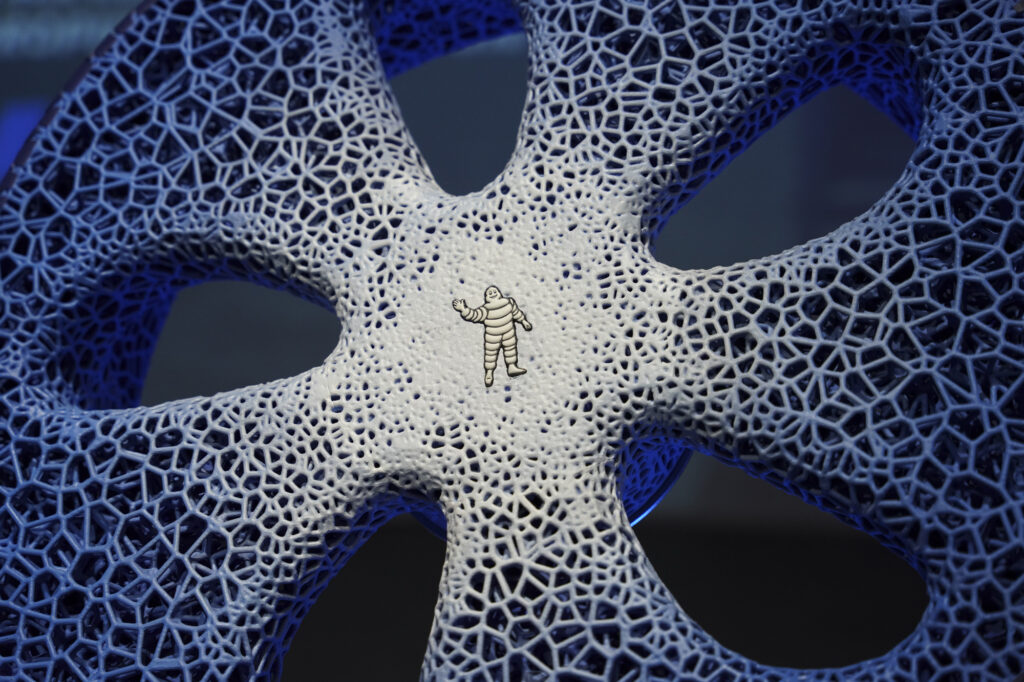
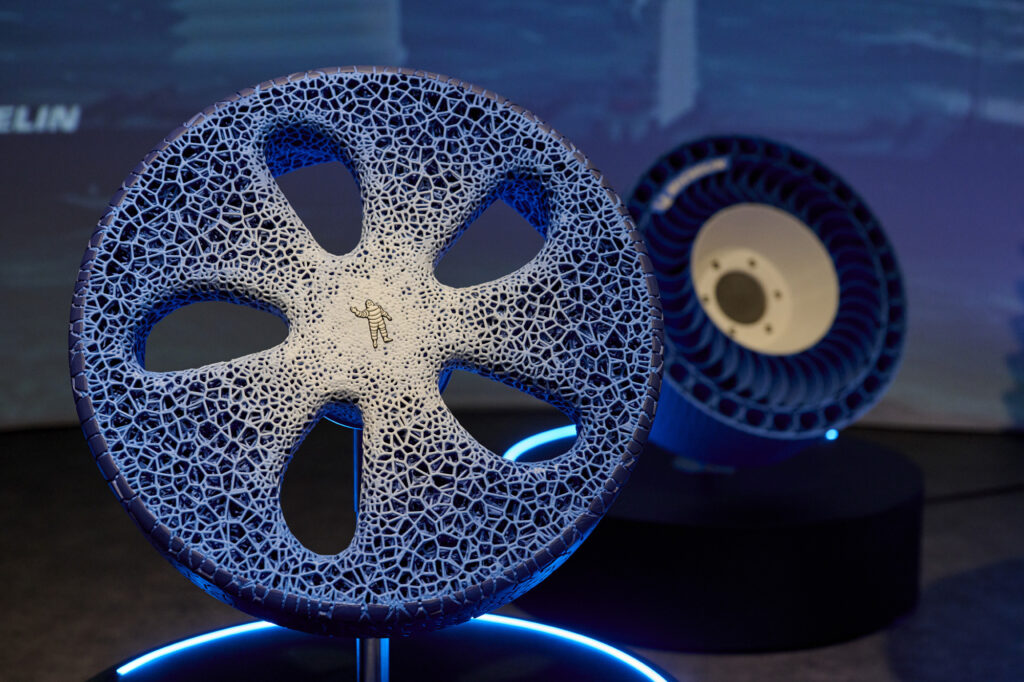
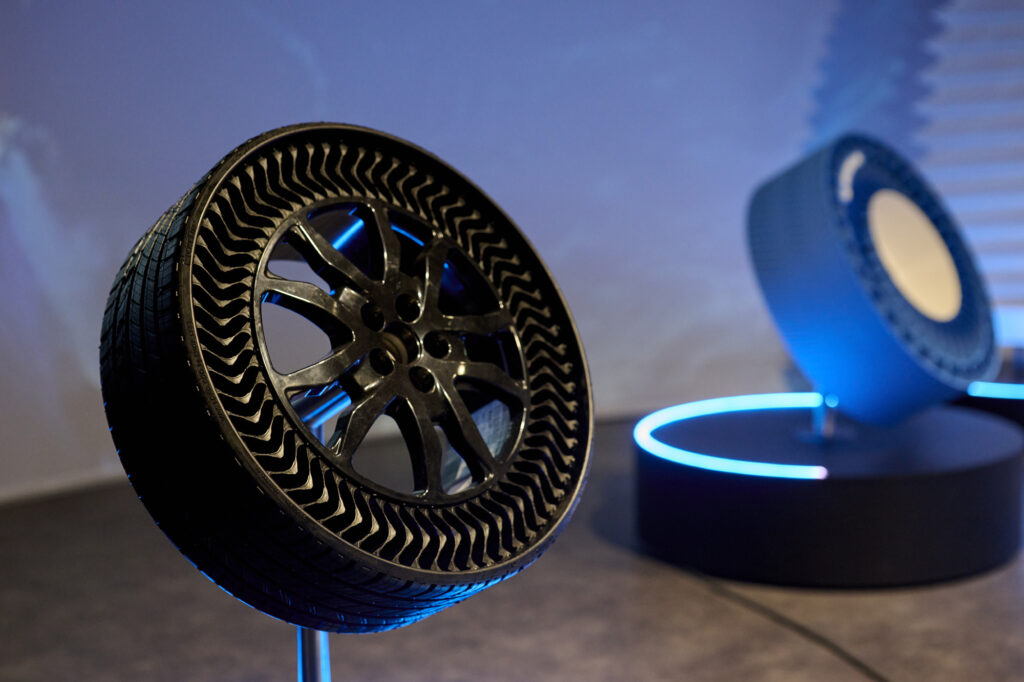
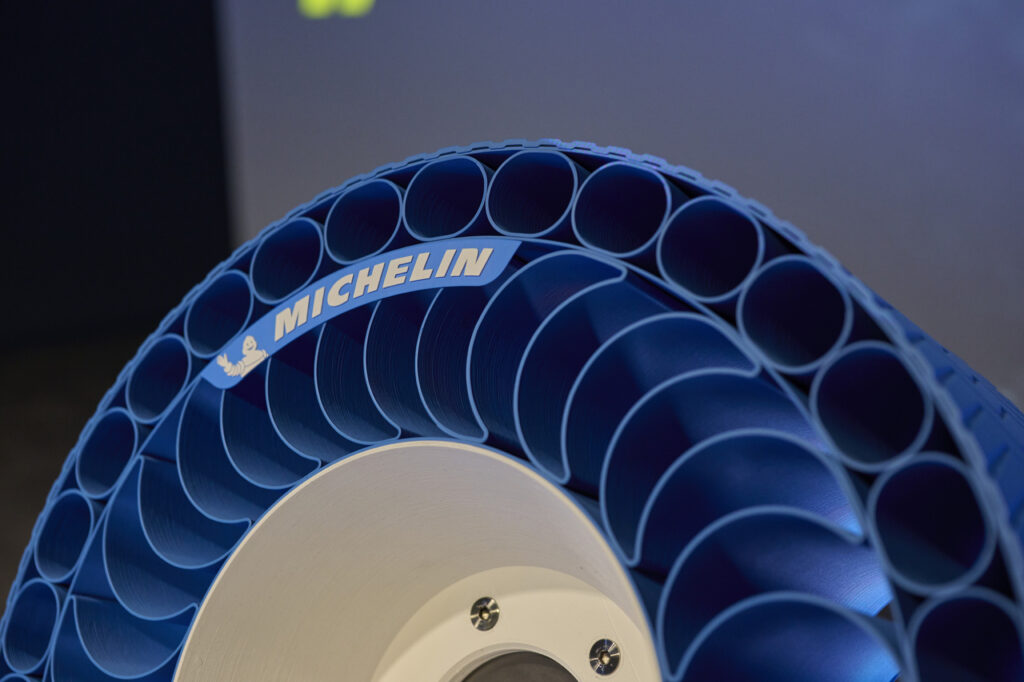
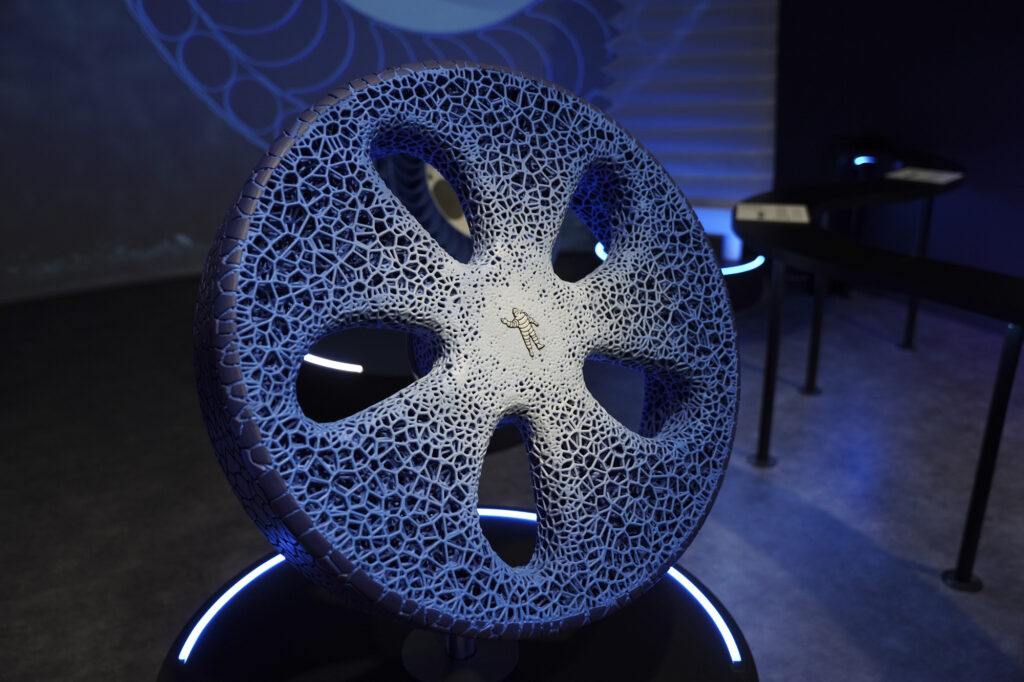
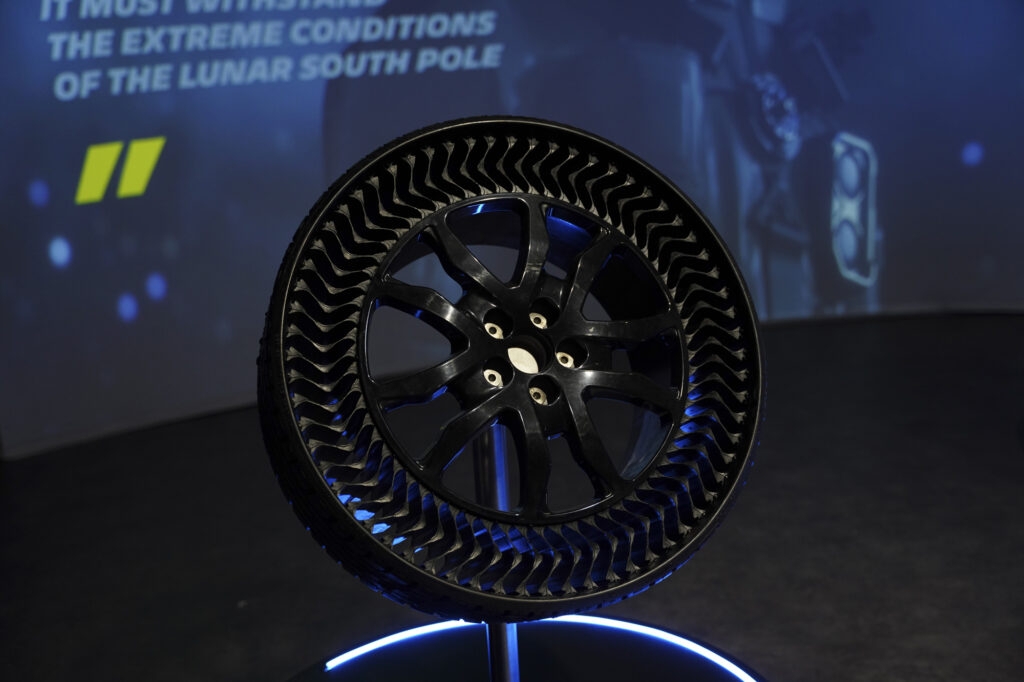
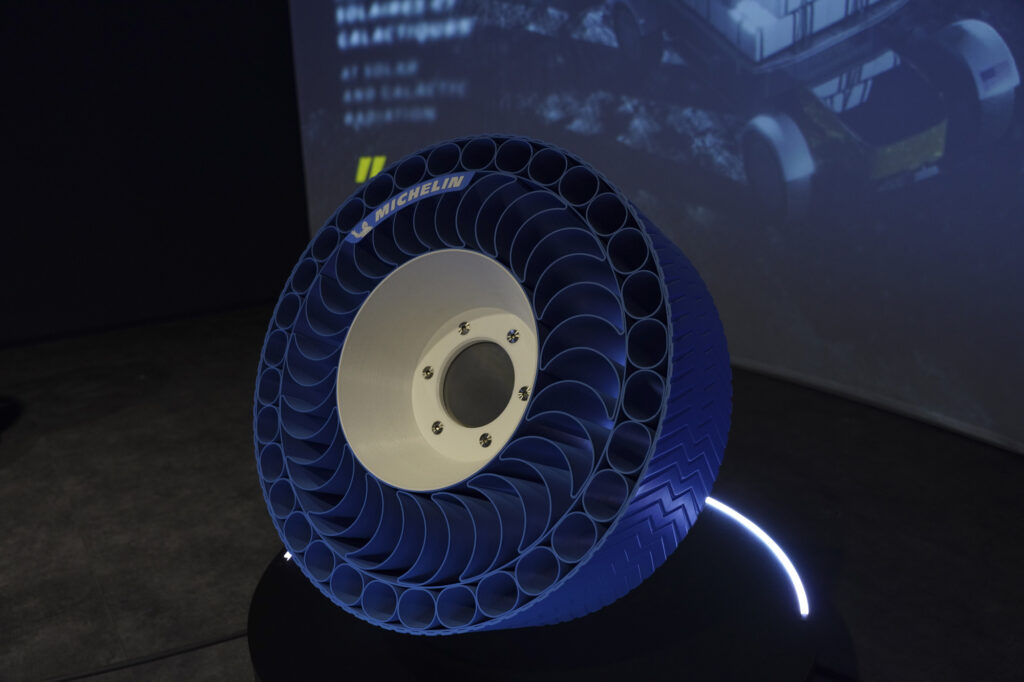
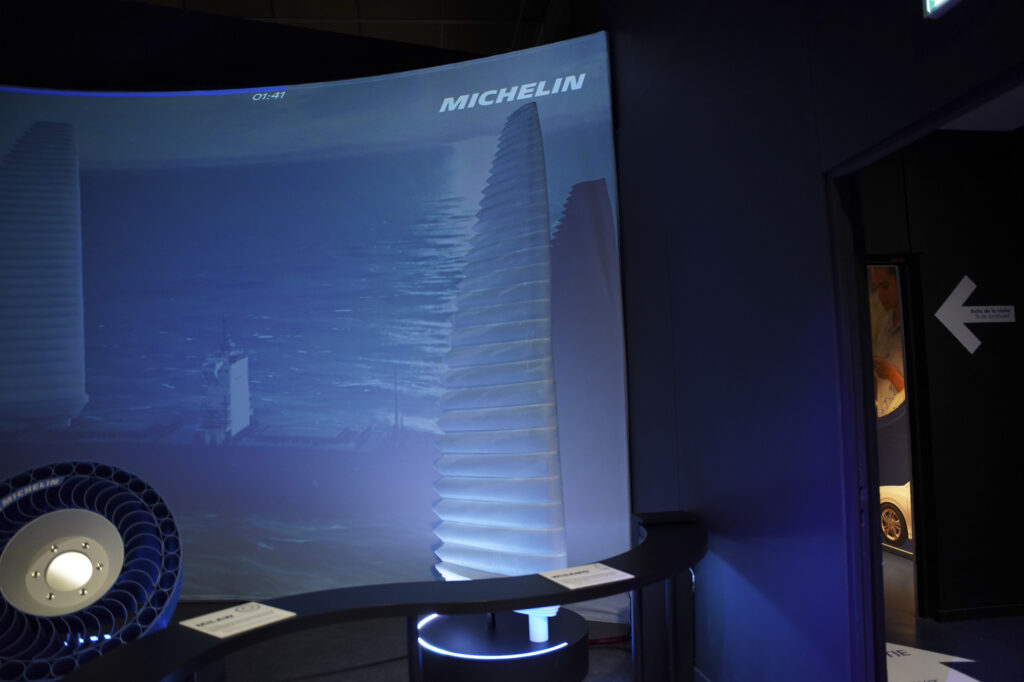

Hard day for electrics
After the two hours of education at the Michelin Museum, we climbed into the electric cars, which had a tough test: about 600 kilometers of highway at the maximum allowed speeds (130 km/h for the whole stretch) and a climb through the Pyrenees, the mountain range that forms the natural border between France and Spain.
This implicitly translated into higher electricity consumption compared to previous days and a lower actual range. But we stayed comfortably in the 400-500 real kilometers range.
At the same time, this route brought us new moments of joy, both because of the stunning views of the Pyrenees Mountains and the beauty of the villages in this region. But the surprise of the day was the Monasterio de Boltaña, a former monastery that has been converted into a hotel, but which has preserved many traditional architectural elements.
With the experiences of the last two days in mind, I’ll now retire and leave you with the impressions of my fellow caravaners about the eight electric cars.
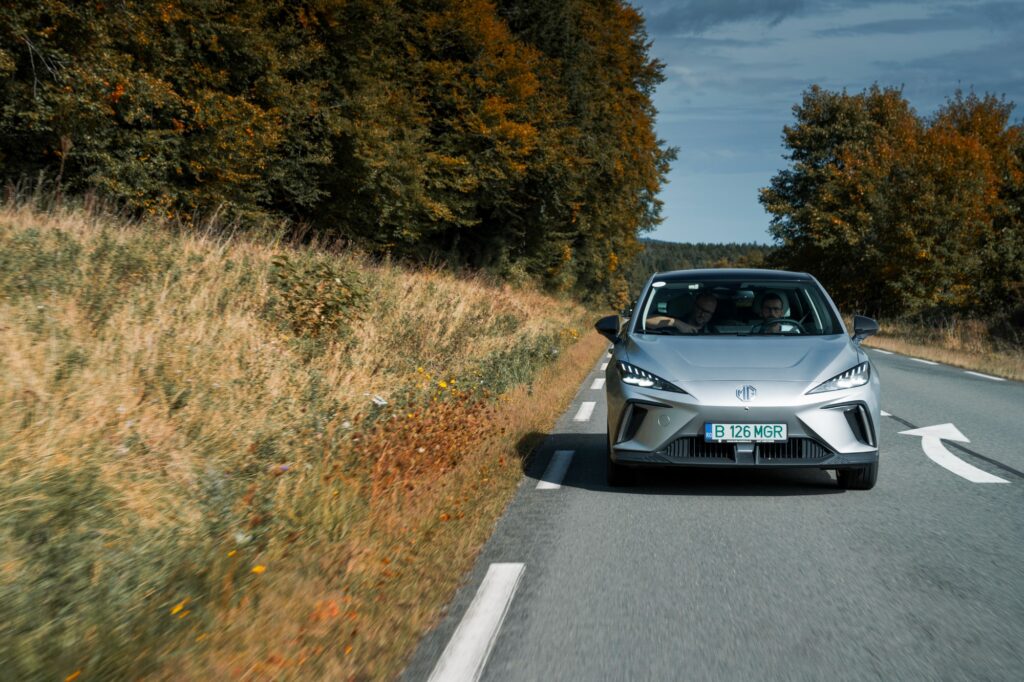
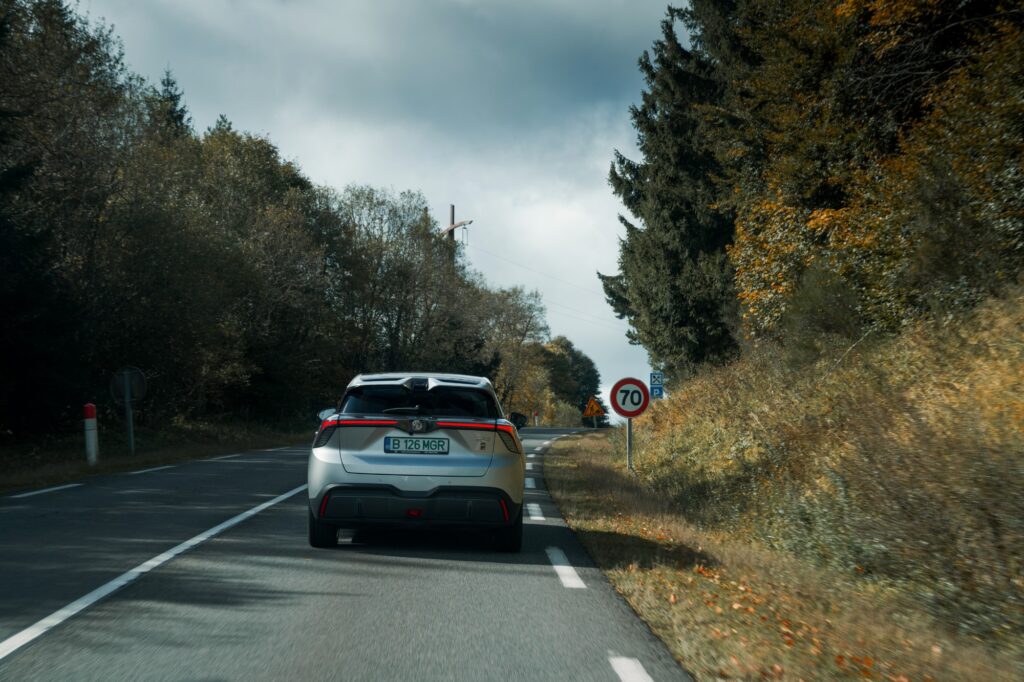
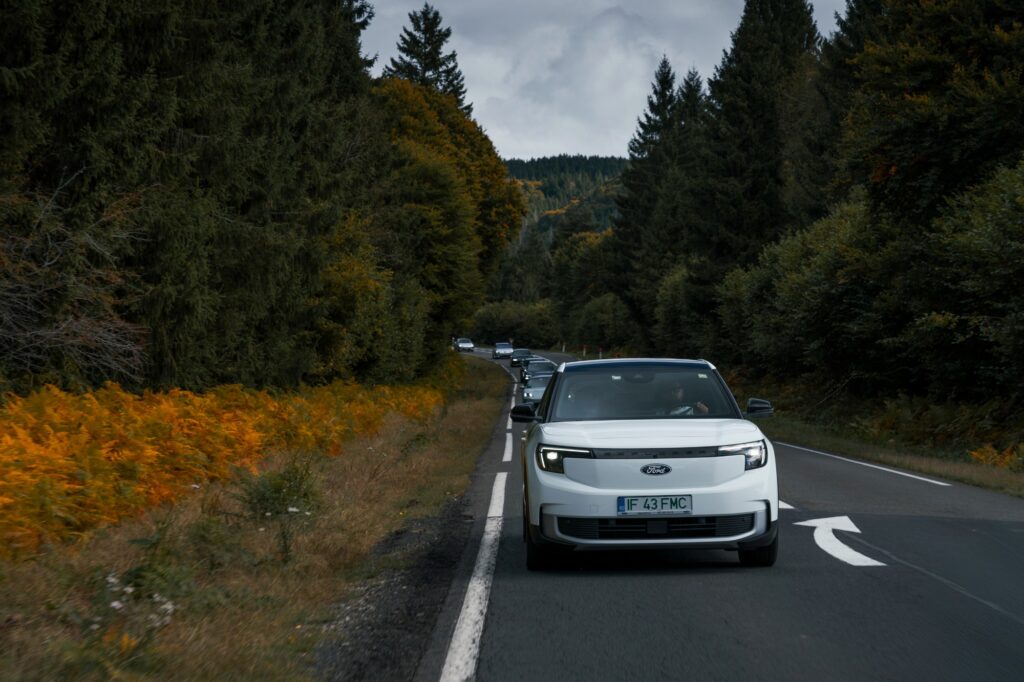
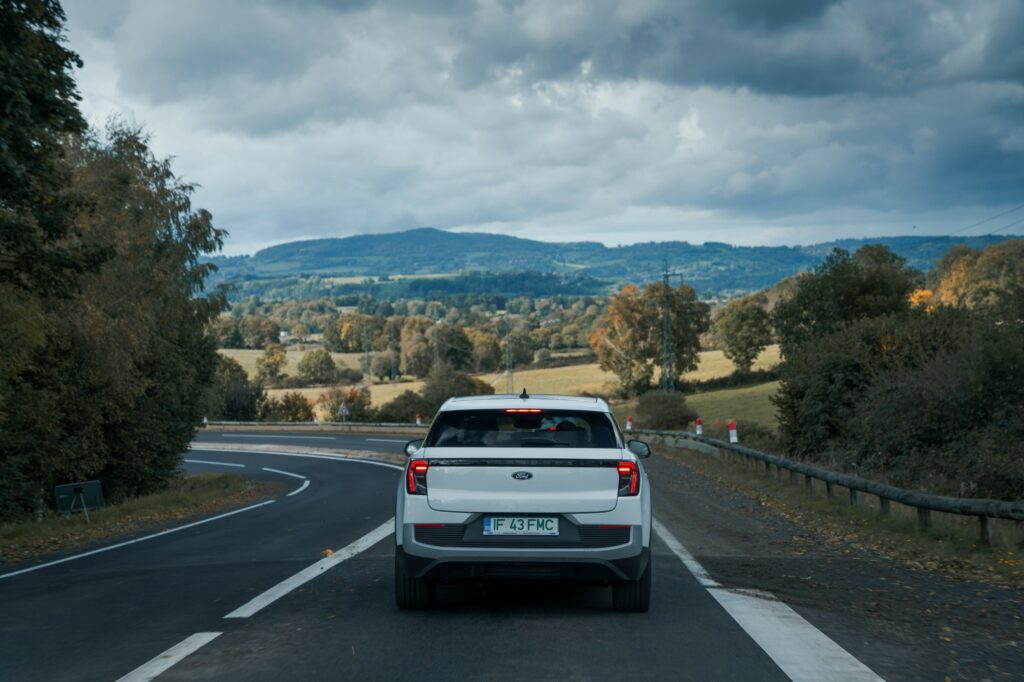
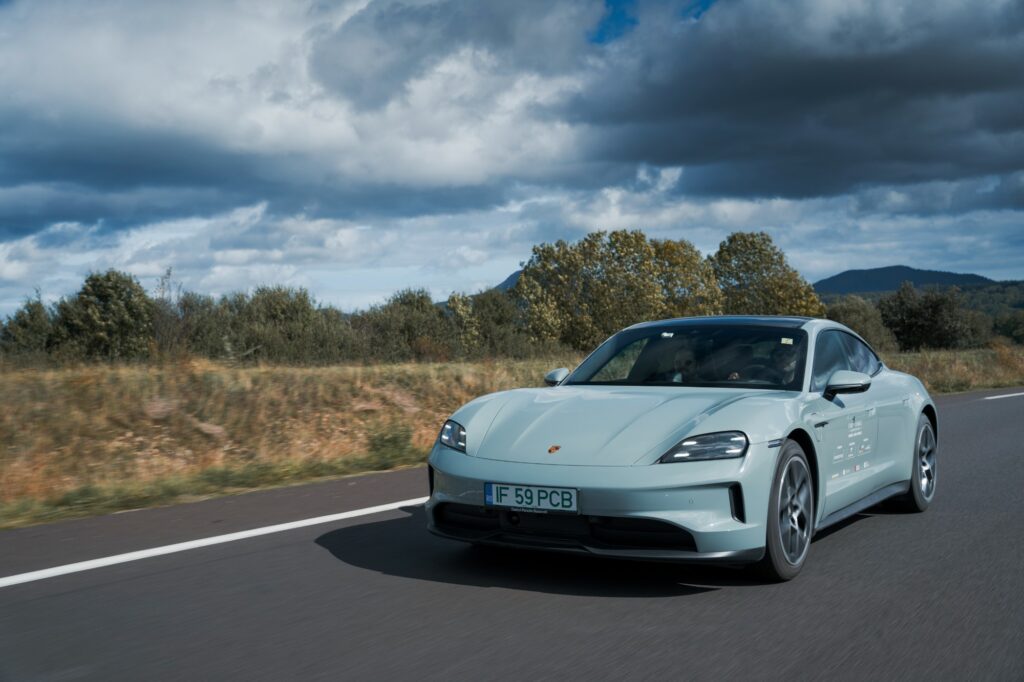
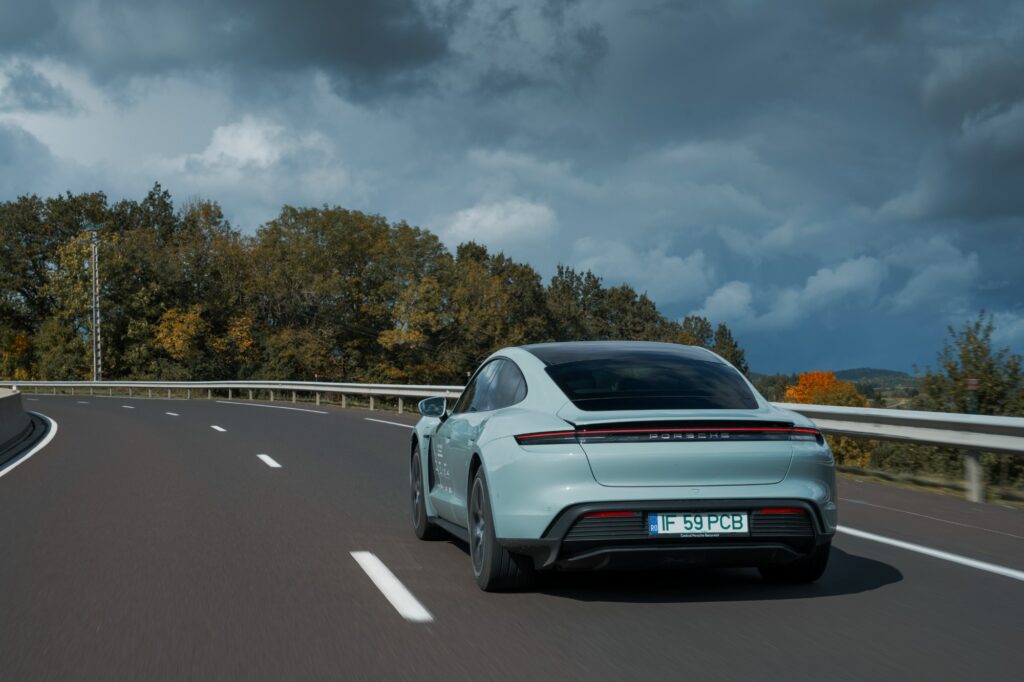
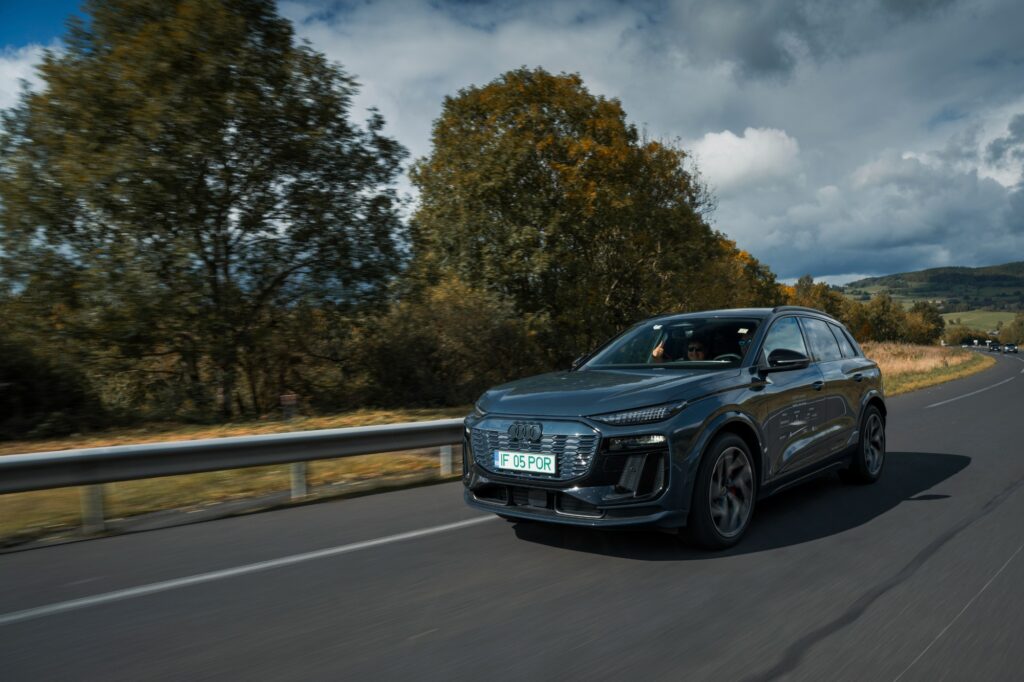
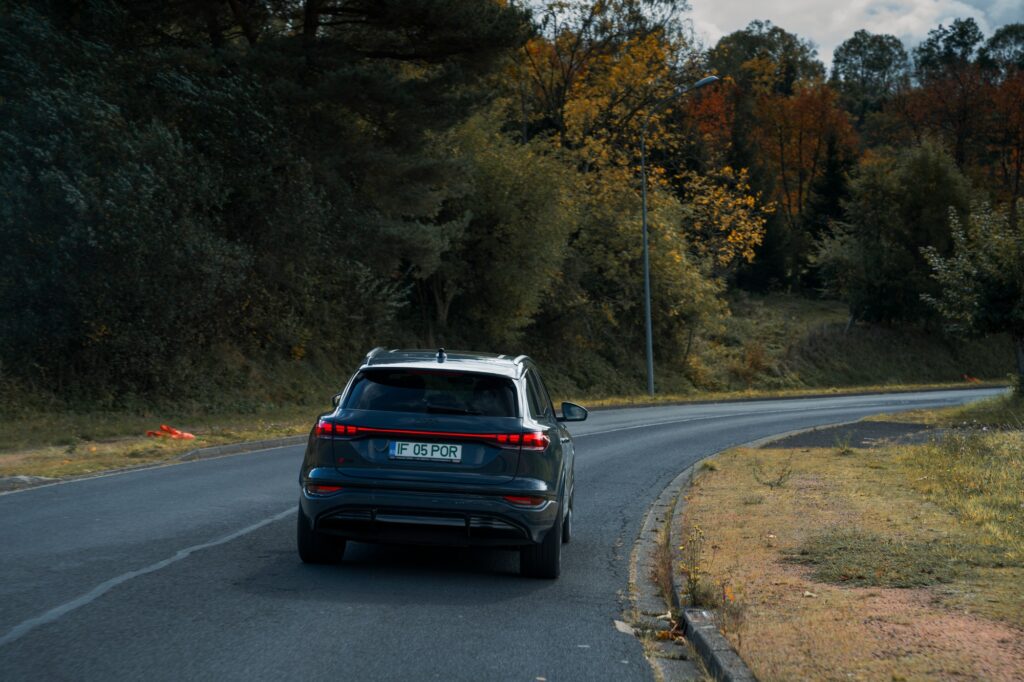
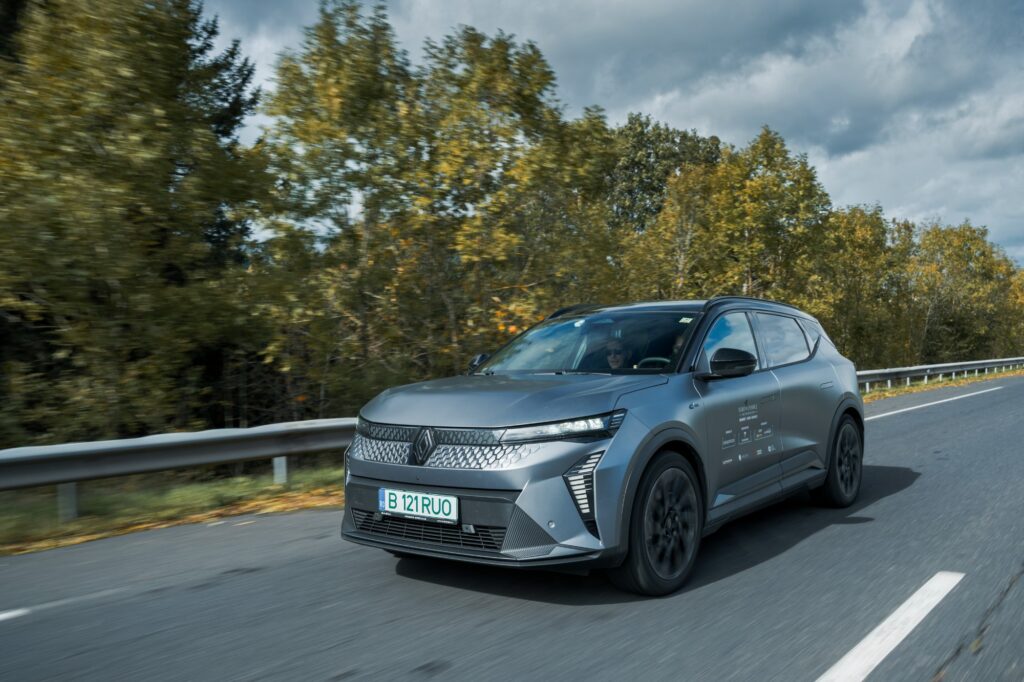
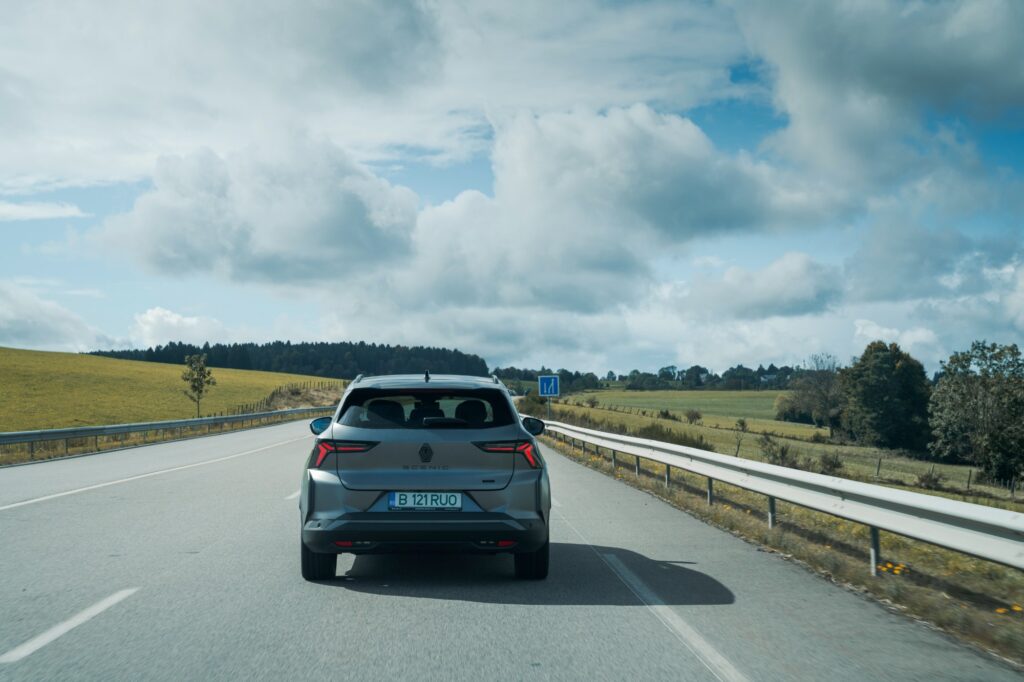


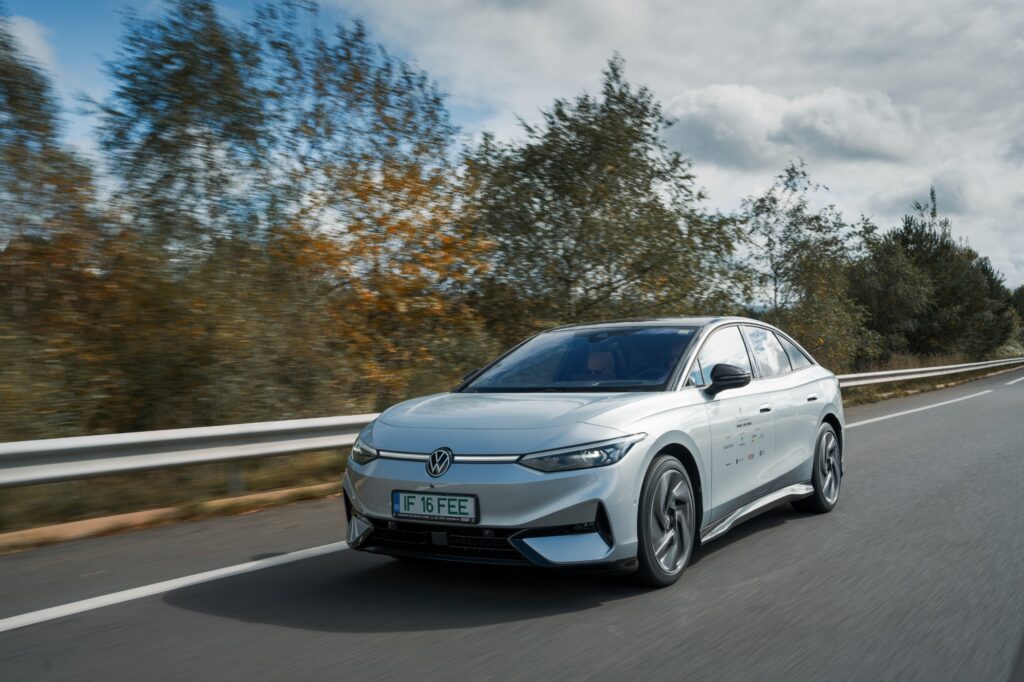
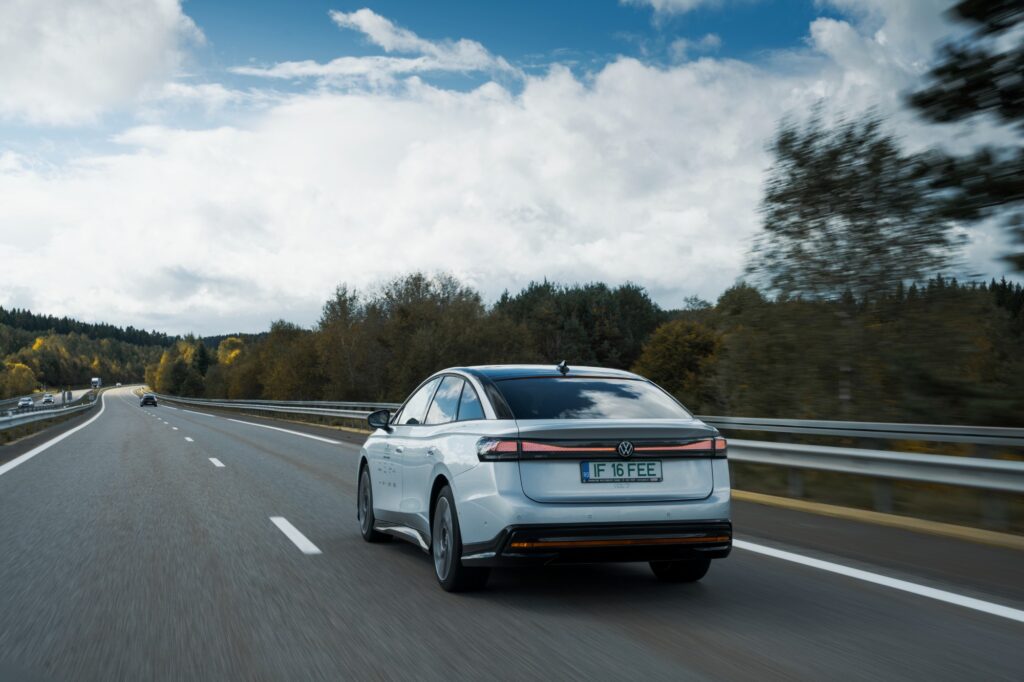
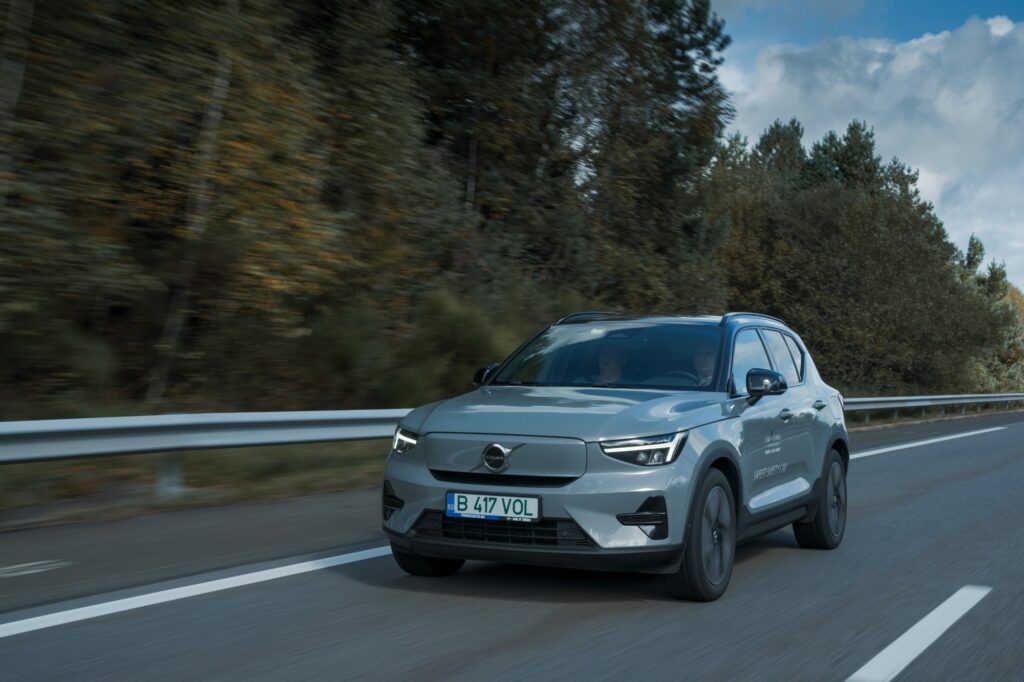


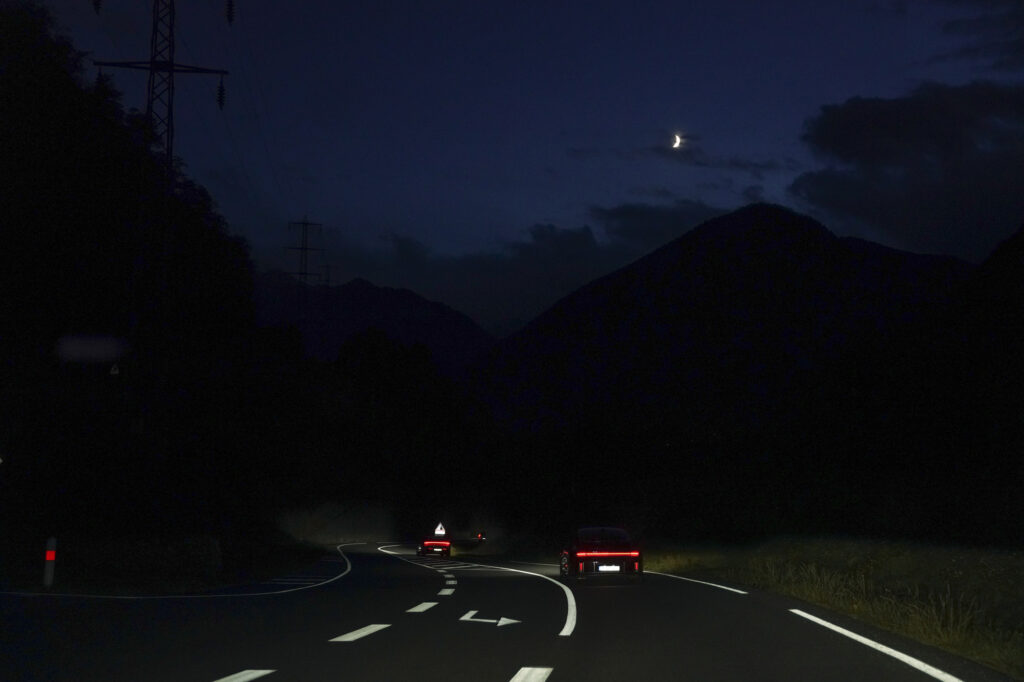
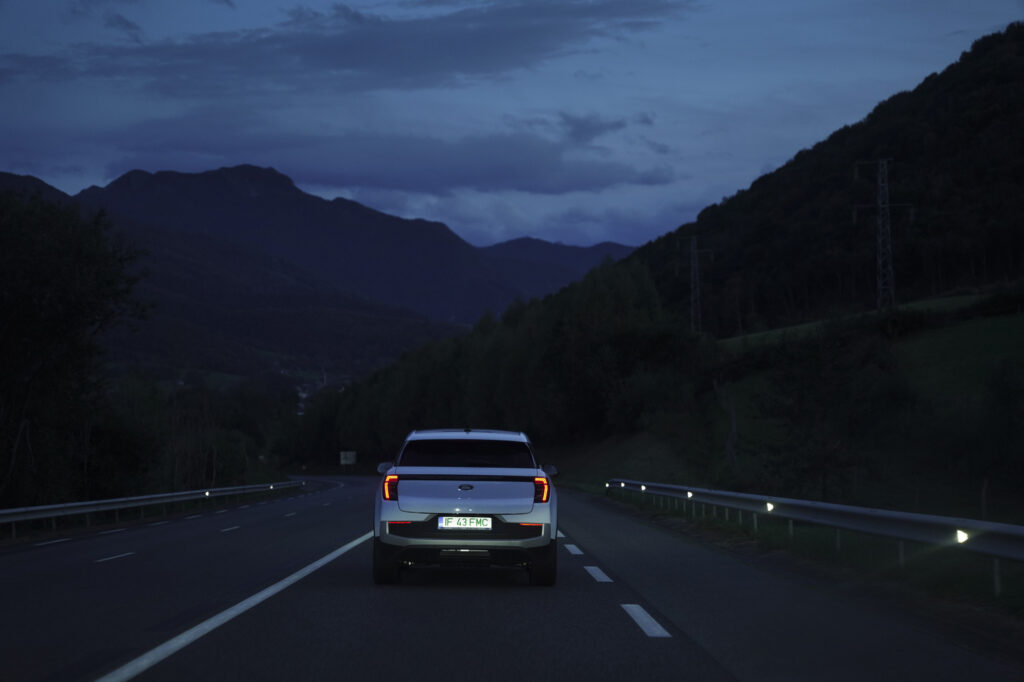
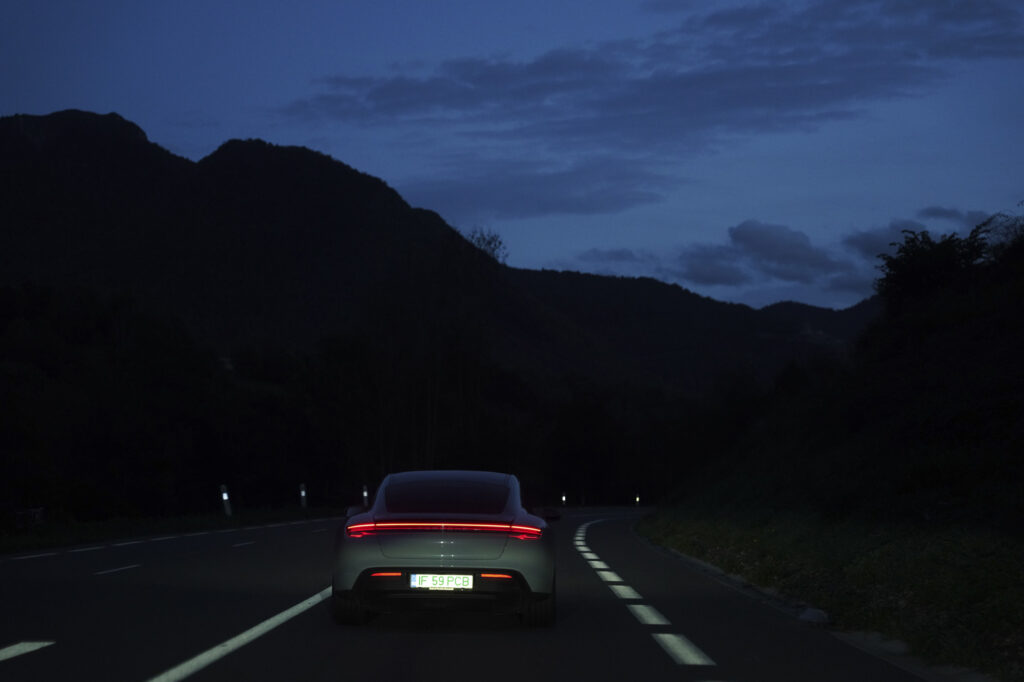
Mihai Vasilescu(Digital storyteller) on Audi Q6 e-tron
The Audi Q6 e-tron e-tron behaves and does things exactly as you’d expect from a car costing over €100,000. To be more precise: €104,655, which is the price of the car we have in EUROCHARGE. Or with an Autonom Business Green operating lease: €1,141 / month.
It’s packed with cutting-edge technology and the materials used are of the highest quality. Just touch your hand anywhere inside and you’ll immediately realize that cheap plastic has no place in a car that costs as much as three studio flats in Rădăuți.
It has two engines, one at the front axle and one at the rear axle that together produce no less than 388 horsepower and a maximum torque of 580 Nm. Of the cars in the EUROCHARGE only the Porsche Taycan is more svelte and performs better, but not by much, mind you. Nothing to say, on that front the Q6 really is worth every penny.
However, if I ever had €100,000 to spend on a car, assuming I’ve since retrained as an accountant, there’s no way I’d buy this one with two engines. The calculation is simple, the one we have on tour has two engines, a 95 kWh battery and manages a range of over 400 kilometers.
Which means, if I give up an engine, the range will increase significantly. Yes, the car won’t get out of the driveway so quickly, but you know us accountants are more conservative that way, we only feel more rebellious on days when the moon closes.
In short, I’ve been lingering. I liked the car, I absolutely hate the colors it comes in. It’s like it pains the designers at the Ingolstadt factory to try an emerald green or a pearly burgundy.
Oh, no, I’m lying, there’s something else I don’t like: for that money it could have come with some side-support seats, so you don’t feel like you’re in a roller coaster when you’re cornering.
And another thing, maybe it wouldn’t be bad if they drove their cars and the people who design them. But not like that anyway, driving at night, in the rain like hell, and needing to press one of the 483 buttons on the door handle, a button you can’t find by feel.
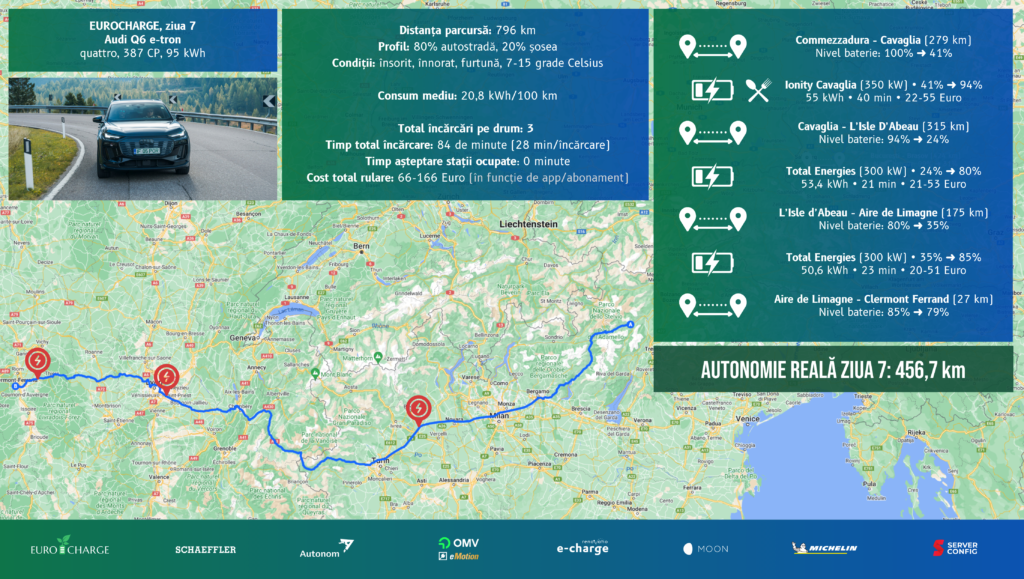
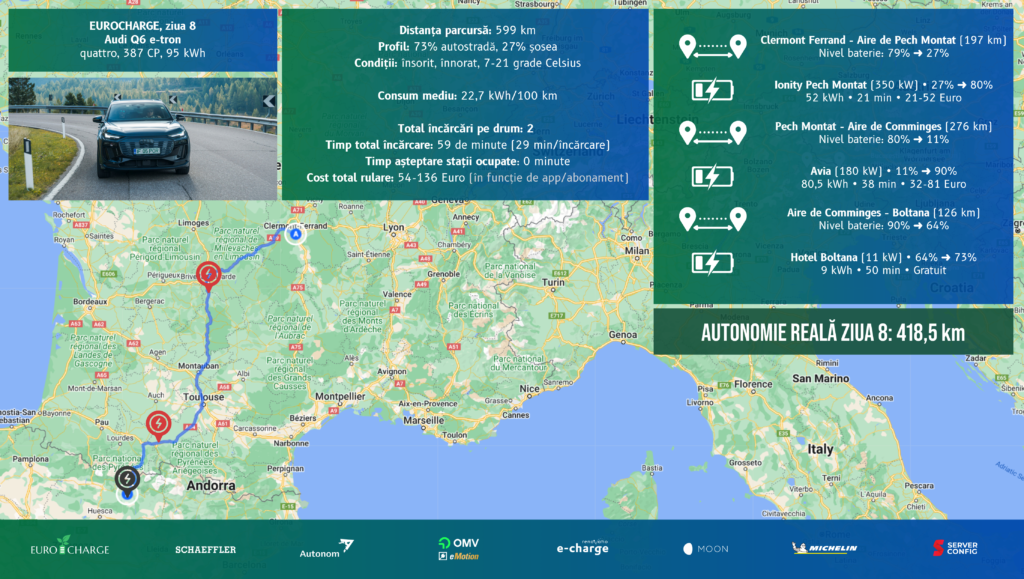
Gabriel Nica(With and about cars) on Ford Explorer
The Ford Explorer turned out to be the surprise of the tour for me so far. Although at first glance, according to the specs, it looks like the tail end of the pack, at every stop we came in first.
Why? Thanks to the driving, of course! All kidding aside, the Ford Explorer has an absolutely impressive load curve. Although it has a peak of just 135 KW, the ‘American’ model charges very quickly and allows you to get on your way without any hassle.
Efficiency was also above average, with fuel consumption below 20 kWh/100 km, and range was consistently good for the stretches of road we drove.
I would have liked a bit more personality though, and more ergonomically friendly solutions, but that aside, there’s little that leaves room for interpretation on Explorer.

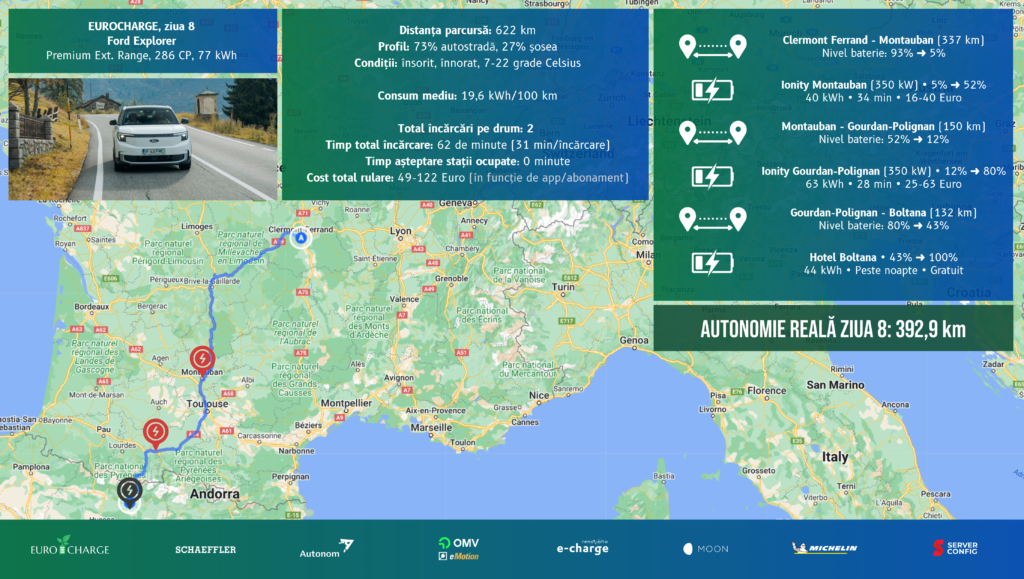
Alin Ionescu(The Driver) on Hyundai Ioniq 6
The Hyundai Ioniq 6 is the kind of car you can’t fall in love with at first sight. It’s quirky, special, aerodynamic, but not beautiful. But once you’ve driven it 800km (say, from Italy to France) – and you realize it’s pleasant on the road, comfortable, well-equipped and has more range than you can carry non-stop – you’ll look at it with new eyes.
With an aerodynamic coefficient of just 0.22 (0.21 if you opt for cameras instead of rear-view mirrors), the Ioniq 6 glides down the highway with a very satisfying serenity. Rolling noise is low and aerodynamic noise almost imperceptible. What’s more, fuel consumption remains below 20 kWh/100 km, even at a steady 130 km/h (where most electrics lose significant percentages of range).
Like any South Korean model, the Ioniq 6 is well equipped. The Level 2 autonomous driving system works flawlessly and keeps the car centered between markings, recognizes speed limits and automatically intervenes on autopilot and, most impressively, can change lanes autonomously. It all adds to the overall impression of comfort – especially over long distances, as we did on some EUROCHARGE days.
Although it is a very balanced and pleasant car, one of the Ioniq 6’s main selling points remains its charging power of up to 230 kW. Thus, as we experienced several times in the two days we drove it, the Hyundai needs only 18-20 minutes to charge from 10 to 80%, thus storing energy for another 350 km.
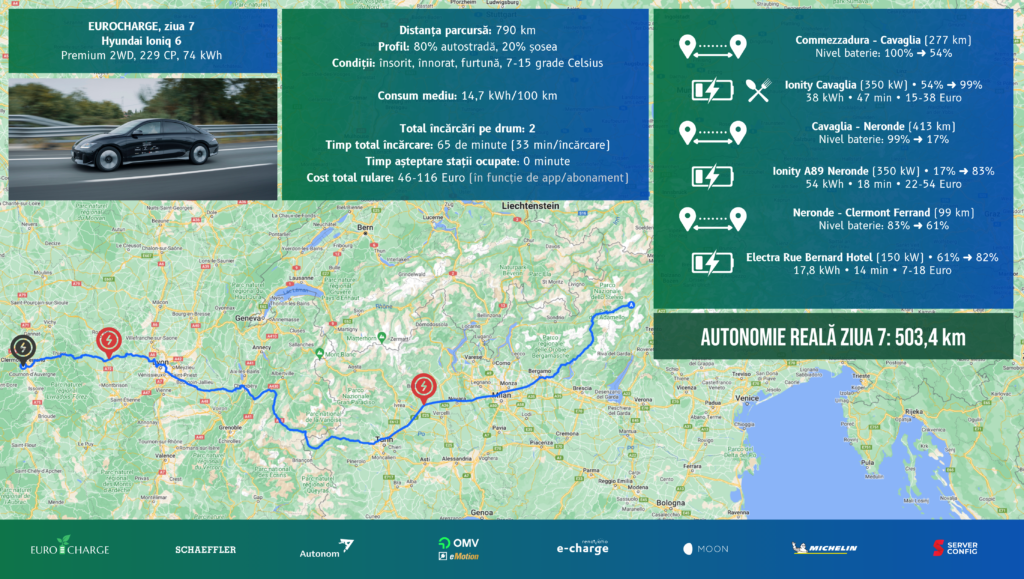
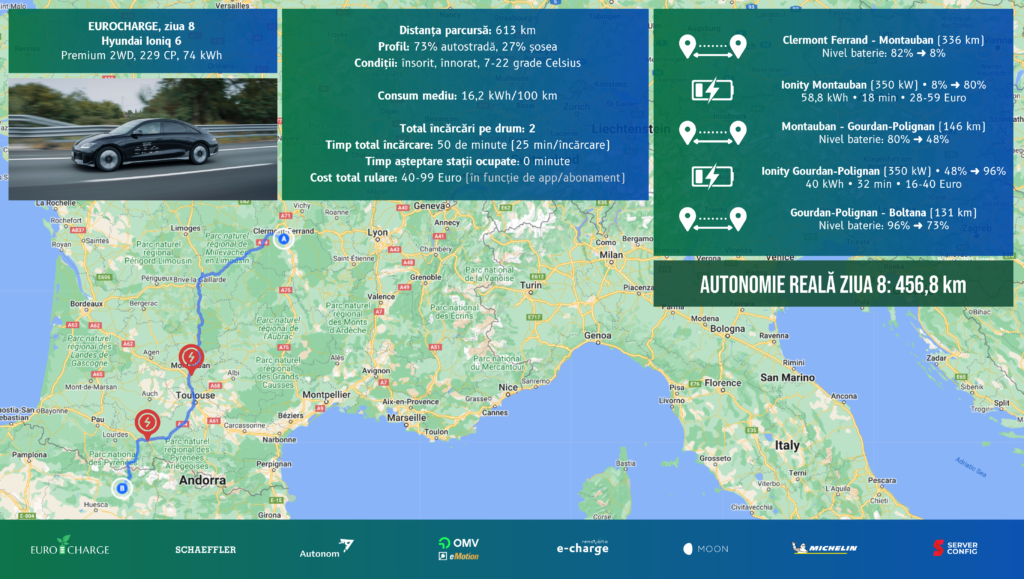
Andrei Barbu(MotorVlogTV) on MG 4
The fact that the MG 4 is the cheapest car on the tour is no surprise. But the fact that it starts at around 28,500 euros is a surprise. Because, in the context of this list price, the MG 4 becomes a sobering proposition.
It’s not all Ionity roses, however, as the MG 4 still has a few things to sort out. First, the multimedia/infotainment system that you control via the center screen responds to touch controls about 75% of the time. The climate system has its own standard for Celsius and measures it differently to what we know. In fact, the whole climate control operation is tedious to say the least. And there’s that kind of hassle.
But MG could, in theory, solve all these problems with a software update. What can’t be fixed in software doesn’t really need fixing.
The suspension is well-calibrated, the anti-shock is good and the on-road experience is a pleasant one, with a lot of emphasis on comfort. Of course, through mountain passes and twisty roads this wouldn’t be your first choice. But as long as you don’t get out of the car too tired after a 500-mile drive, I’d say the setup is good.
On the other hand, if you choose an MG 4, you choose it primarily because you want an affordable electric car and everything else takes a back seat. The “test” in EUROCHARGE, on days with many hundreds of kilometers on the highway may not give the MG 4 an advantage over other cars. Because of the charging power and slightly higher than ideal fuel consumption. But as long as you’re using the car for short and medium trips, I don’t see why you wouldn’t seriously consider the MG 4. It’s far from perfect, but not that far if you factor in the 28k list price.
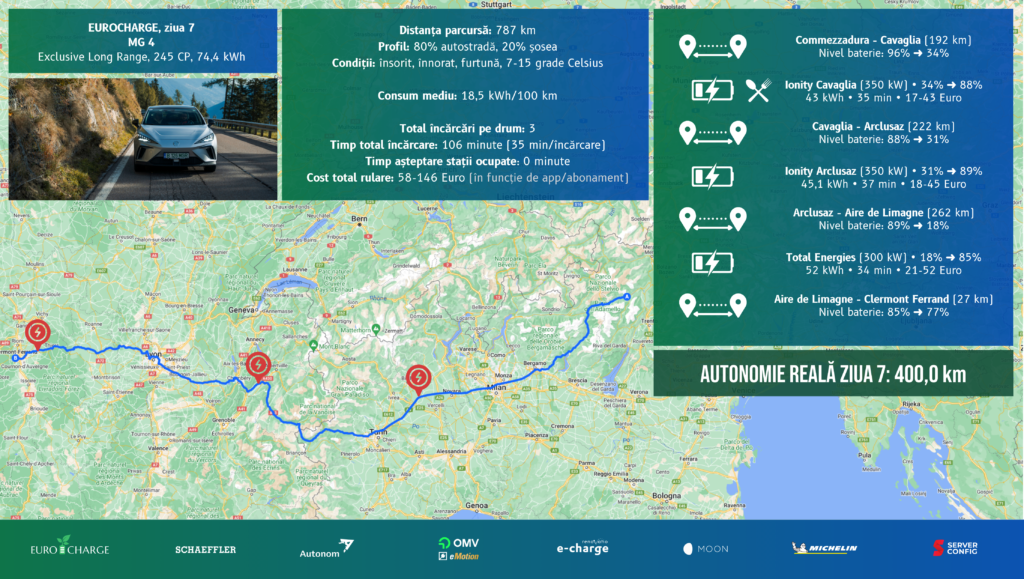
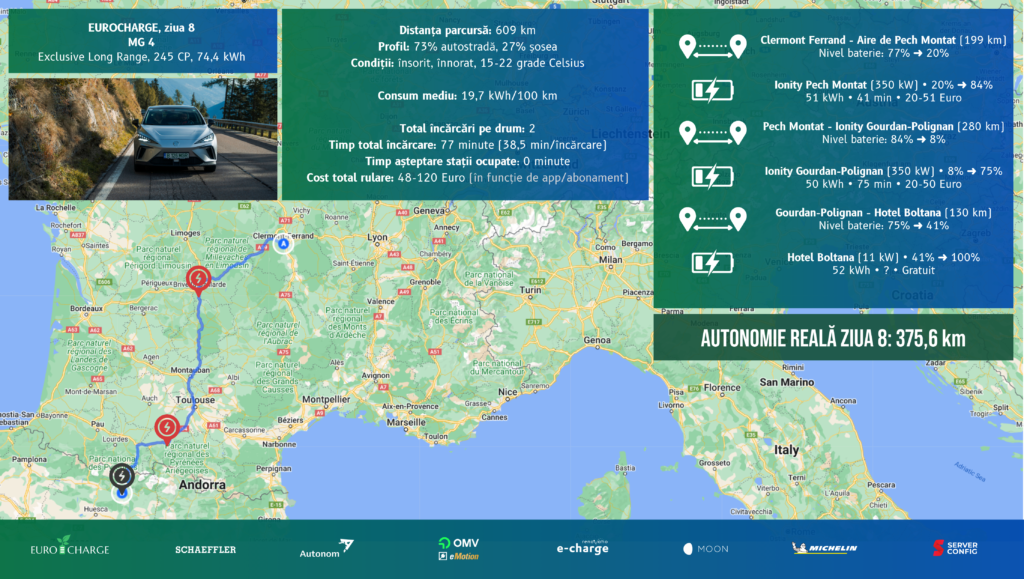
Radu Tudoroiu(Digital storyteller) about Porsche Taycan
I don’t even know where to begin my impressions of the Porsche Taycan. In the ‘to the bragging tree go supercharger’ category, the car has clearly been designed to please, no matter who you are or what your expectations are. It feels, more than in others driven so far, that everything is overdone, but in moderation.
The interior has 4 generous but not distracting screens. The seats are sporty but comfortable, as evidenced by the 850 kilometers I’ve put behind the wheel today. The horses are multicei but deliver friendly if you don’t necessarily want to drive it in airplane mode.
To put it simply, the Taycan feels new but familiar and I find it to be a car that adapts to you and not the other way around, as is generally the case when you get into something new. People will say, “At this money it’s supposed to be like this”, but personal experience with other cars in the same financial repertoire has been quite different.
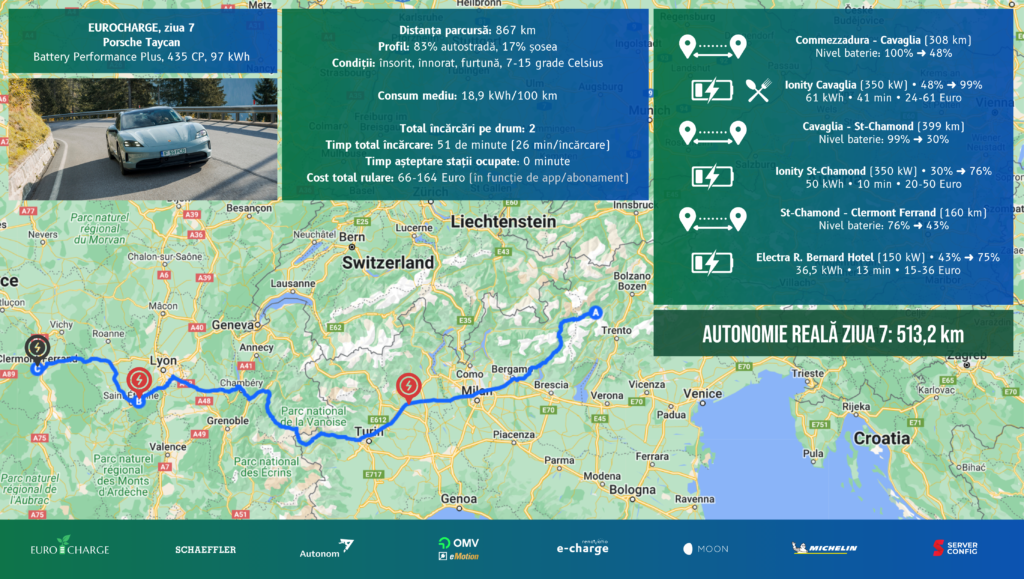
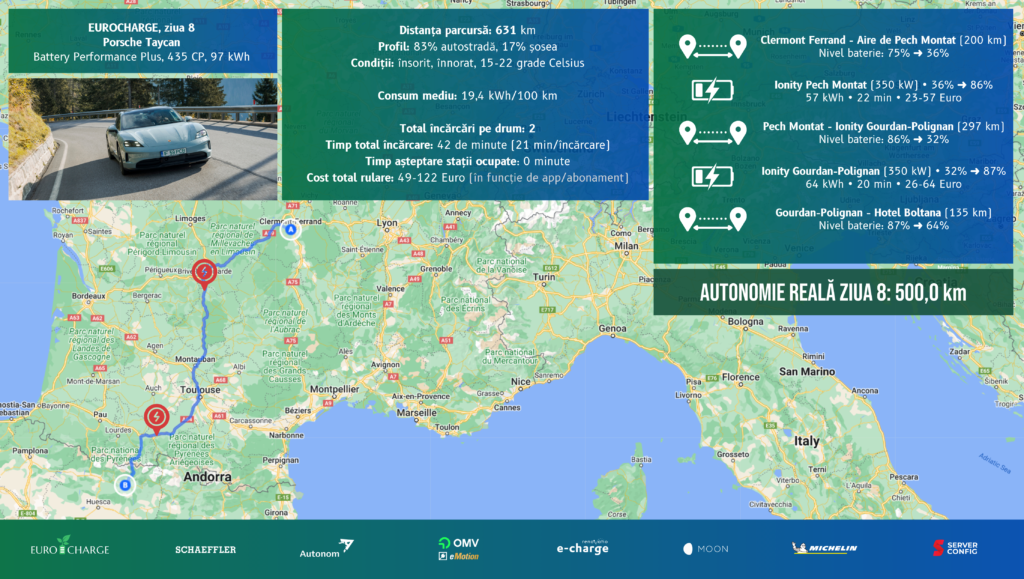
Laura Antonov(LaChicBoutique, Shedrives) on Renault Scenic
MPV or SUV? First and foremost, it’s practical. Because that’s the word I think best describes the Renault Scenic E-Tech Electric 220 Esprit Alpine. And right after that, ergonomic and comfortable, an ideal car for first-time electric users to ‘get the hang of it’, but more importantly to get a taste.
And it couldn’t be better, we drove the car on the roads of France itself. Bonjour, Scenic!
With its 220 hp engine, the Scenic E-Tech Electric goes from 0-100 km/h in 7.9 seconds and may not satisfy a more sporty dad with its cornering, but it will certainly win him over with its Harman/Kardon sound system, while mom will appreciate the comfort, the numerous storage spaces, the trunk capacity and, of course, there’s plenty of room for the kids in the back seat.
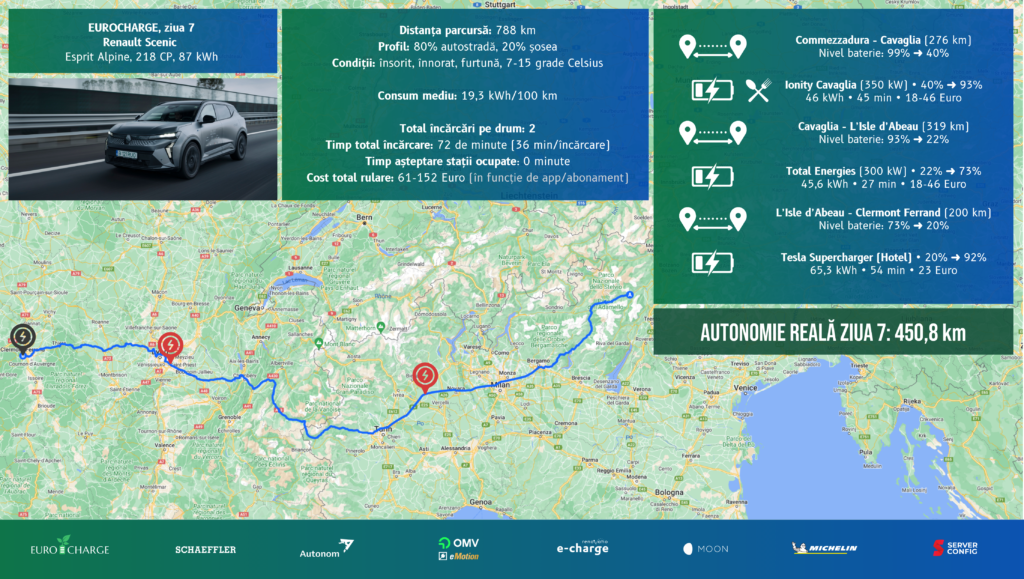
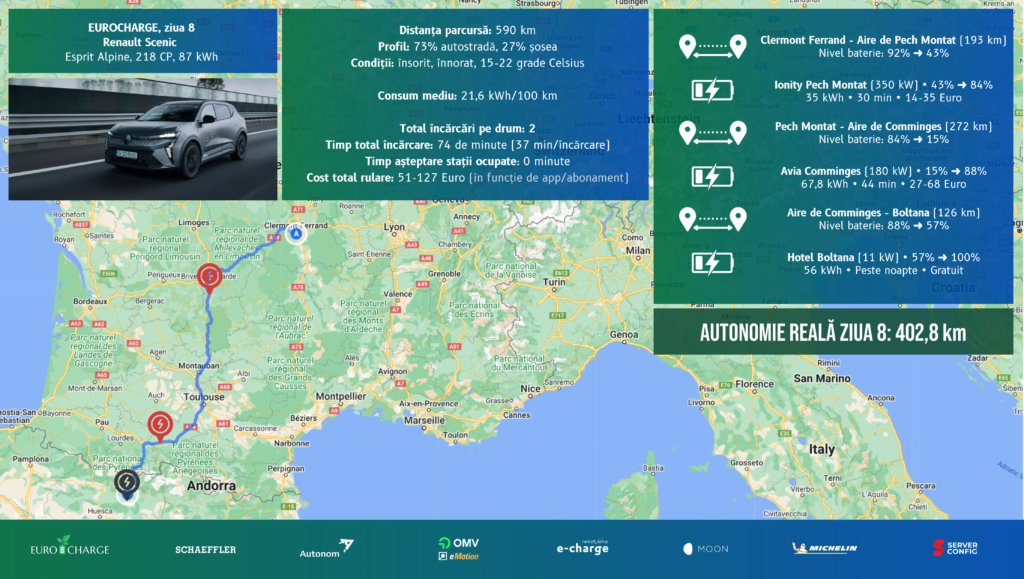
Julius Constantinescu(Digital storyteller) on Volkswagen ID.7
Writing a car review after you’ve driven the car can generally be done by anyone, so today on Autocritica I’m going to try something a little unconventional: a short review of the ID.7 written from the right seat. And to raise the bar even higher than that, let me tell you that I wasn’t even awake, I slept like a sass.
Three things helped me have a memorable afternoon in ID.7, and we’ll take them one at a time. First, the ergoActive seat, which is extremely comfortable (it also has 12 massage functions, including one to dry your shirt in case you sweat, but I didn’t need a massage, my eyes were drooping anyway).
The legroom also helped a lot, in the ID.7 you feel like you’re on an airplane when you take the Exit seat (for millionaires: you feel like you’re on an airplane in business class, behind the seat cushions). And the third friend of a good night’s sleep in the ID.7 is the adaptive suspension set to Comfort mode, which on a smooth highway feels like you’ve fallen asleep on a mattress in the pool, but without the worry of waking up sunburned.
That’s about it for today’s ID.7, I’ll be back after I sleep and in the back seat.

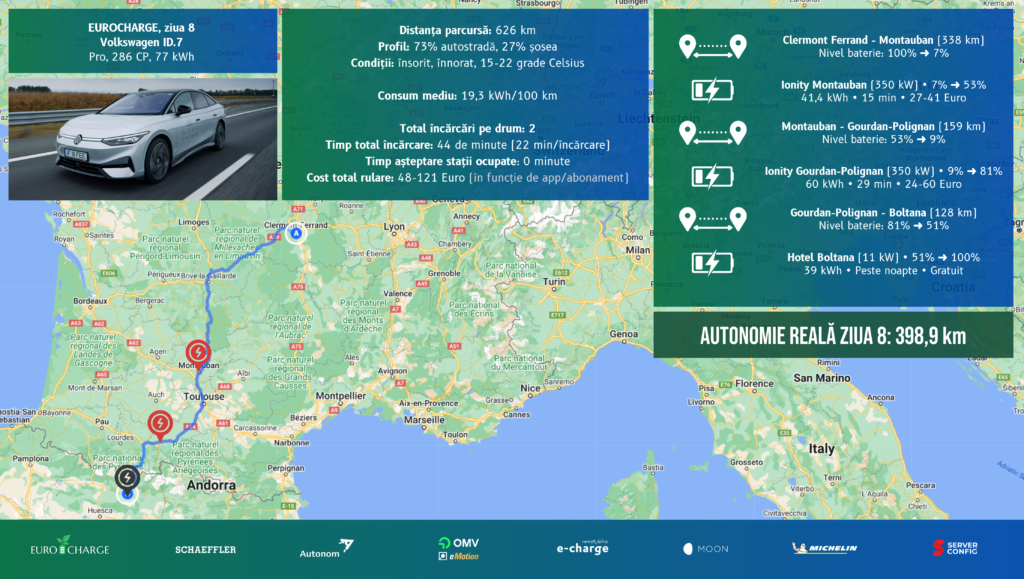
Berti Panaiot (Autocritica, Urban Adventures) on Volvo EX40
We’ve already covered over 3,000 kilometers with the Volvo EX40 Single Motor Extended Range in Plus trim. That’s 252 hp and 420 Nm of torque. That means 0-60 in 7.3 seconds. It’s not the sportiest SUV, that’s for sure, but considering it’s 2.1 tons, you wouldn’t expect that. On the other hand, it’s very comfortable, and I think that’s all the more important after a 500 to 1,000-mile drive.
You know that saying “Scandinavian living”? Well, you can feel it perfectly at the wheel of this model. Everything is simple, functional, there’s nothing tiresome around you.
Of course, fuel consumption and charging speed are also very important, but more about that when we get to Portugal.
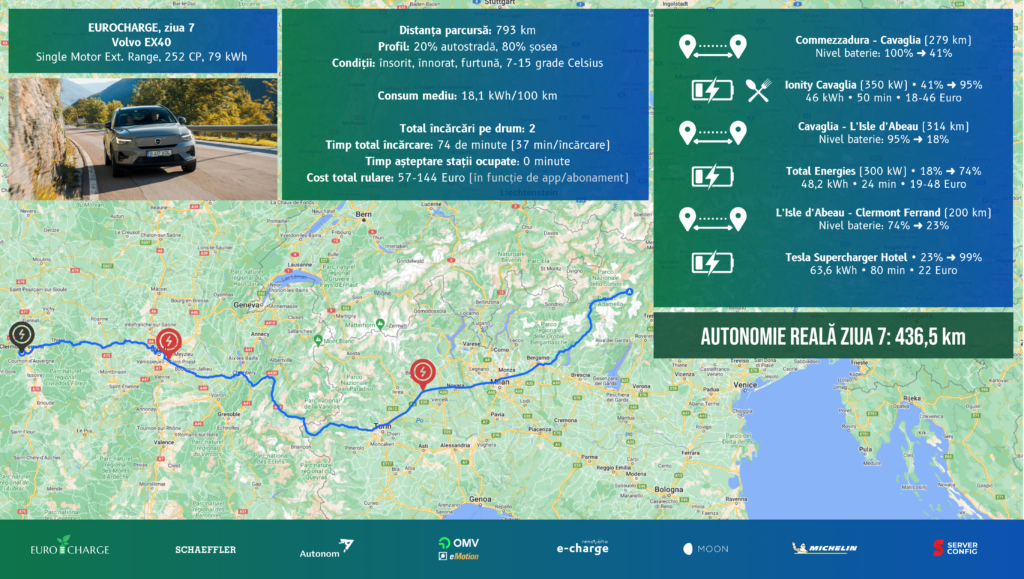
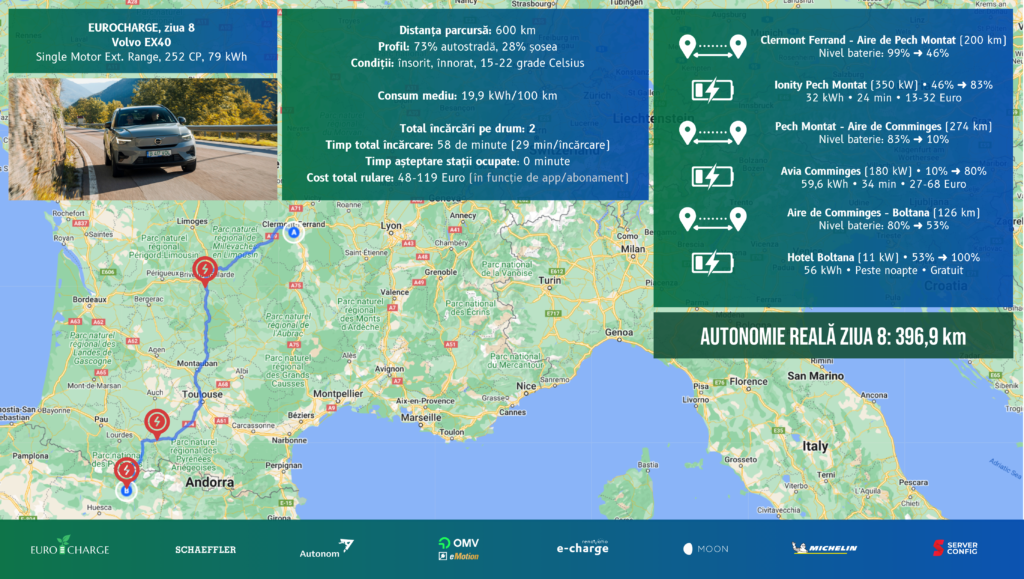

is a project backed by SCHAEFFLER
Charged by
OMV eMotion and Renovatio e-charge
Green Partner
Autonom
Charging stations
MOON România
On the road with
Michelin
Powered by
Server Config



